Search Result
Results for "
oil
" in MedChemExpress (MCE) Product Catalog:
24
Biochemical Assay Reagents
17
Isotope-Labeled Compounds
| Cat. No. |
Product Name |
Target |
Research Areas |
Chemical Structure |
-
- HY-D1168
-
|
|
Fluorescent Dye
|
Metabolic Disease
|
|
Oil Red O is a fat-soluble diazol dye, with a maximum absorption at 518 nm. Oil Red O stains neutral lipids and cholesteryl esters but not biological membranes. Oil Red O can be used for detecting and quantifying hepatic steatosis in mouse liver biopsies. Oil Red O staining efficiently helps to visualize the radical changes that occur in tissues as metabolic disease occurs and progresses .
|
-
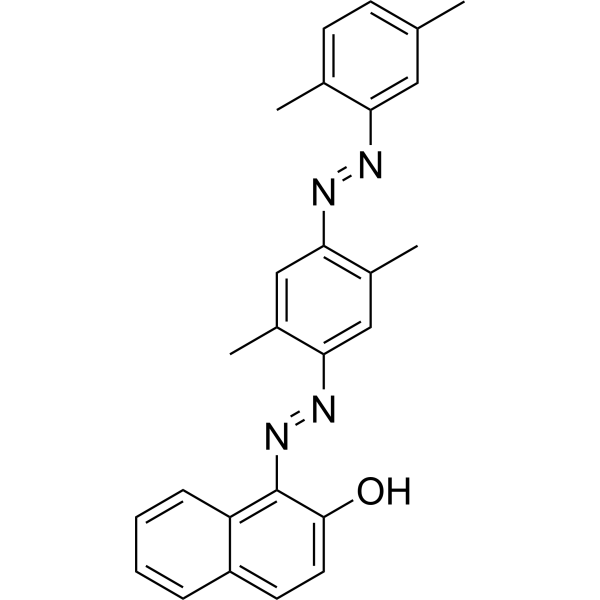
-
- HY-D0516
-
|
Sudan Blue II; oil Blue 35
|
Fluorescent Dye
|
Others
|
|
Solvent Blue 35 (Sudan Blue II; Oil Blue 35) is a dye used for colouring alcoholic and hydrocarbon based solvents. It is used for staining triglycerides in animal tissues.
|
-
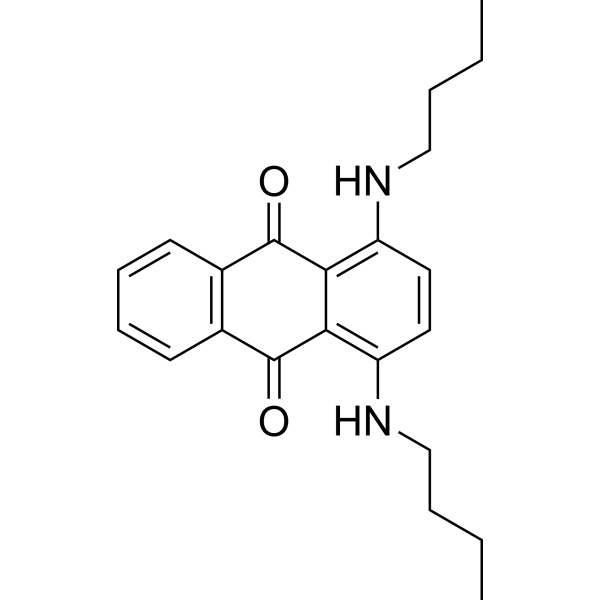
-
- HY-107799
-
|
|
Biochemical Assay Reagents
|
Others
|
|
Castor oil is a natural triglyceride and a solvent. Castor oil has a laxative effect and induces labor in pregnant females. Castor oil can be used as a solvent, co-solvent, stabilizing agent and polyol for the formation of polymer-nanoparticle composites .
|
-
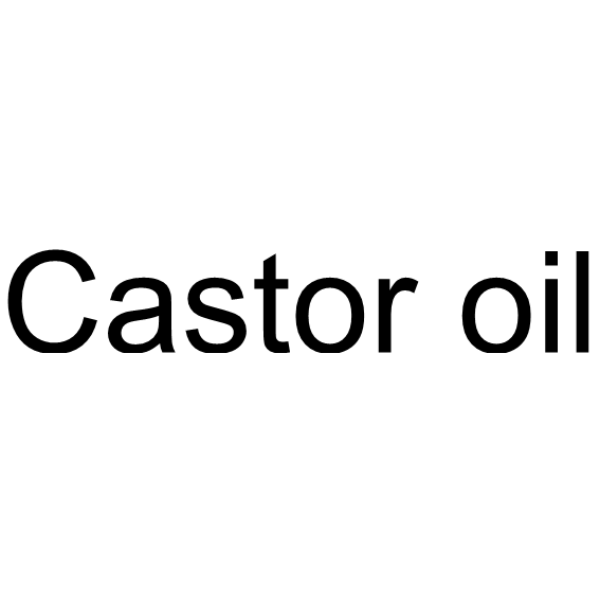
-
- HY-139411
-
|
|
Biochemical Assay Reagents
|
Others
|
|
White mineral oil is the highly refined mineral oil, and is composed of saturated aliphatic and alicyclic nonpolar hydrocarbons. White mineral oil is biologically and chemically stable, and doesn’t support pathogenic bacterial growth. White mineral oil can resist moisture, extend, soften, smoothen, and lubricate .
|
-
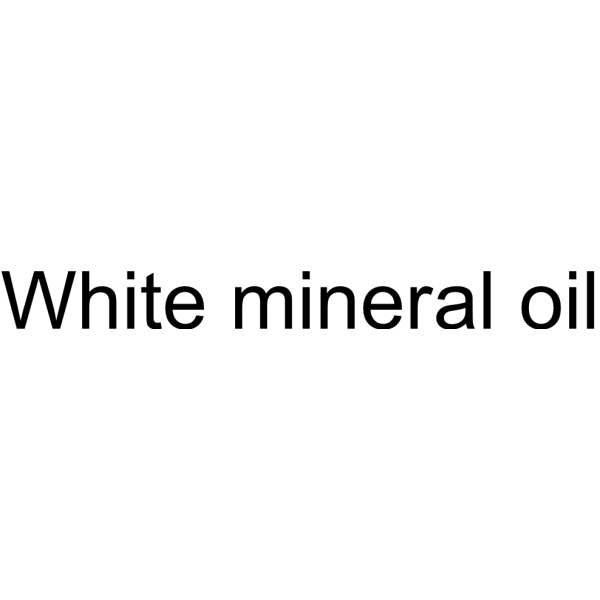
-
- HY-D2190
-
-
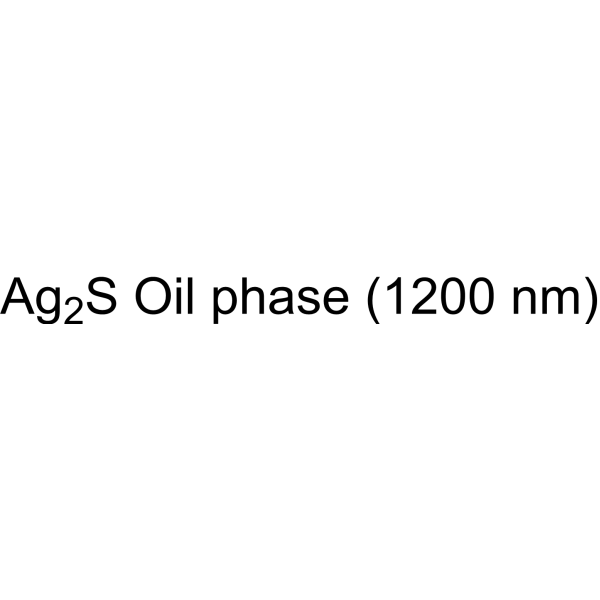
-
- HY-126403
-
|
PEG-40 hydrogenated castor oil; Macrogolglycerol hydroxystearate; Castor oil, hydrogenated, polyethoxylated
|
Biochemical Assay Reagents
|
Others
|
|
Ethoxylated hydrogenated castor oil (PEG-40 hydrogenated castor oil) is a combination of synthetic polyethylene glycol (PEG) with natural castor oil. Ethoxylated hydrogenated castor oil can be used to emulsify and solubilize oil-in-water (o/w) emulsions. Ethoxylated hydrogenated castor oil can be used as a cosolvent in vivo .
|
-
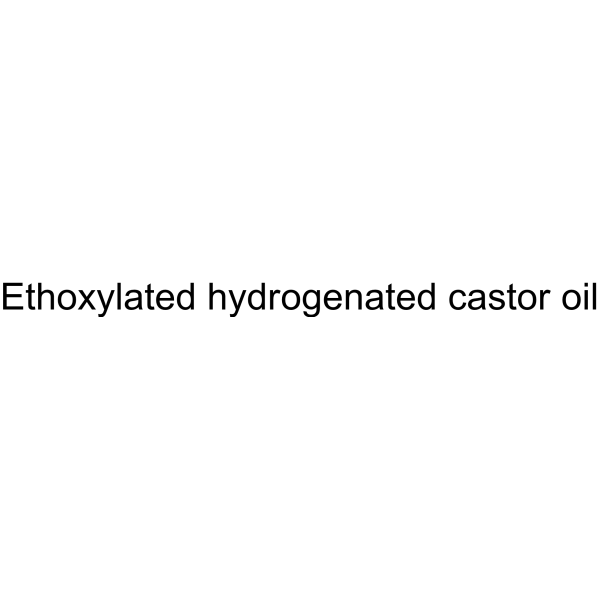
-
- HY-N12670
-
-
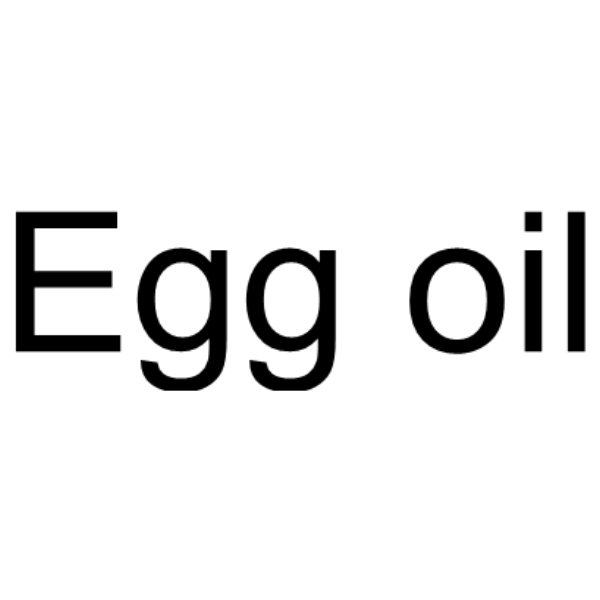
-
- HY-Y1887
-
|
|
Biochemical Assay Reagents
|
Others
|
|
Cottonseed oil is a cooking oil extracted from the seeds of cotton plants and has been generally considered the most insecticidal of vegetable oils.
|
-
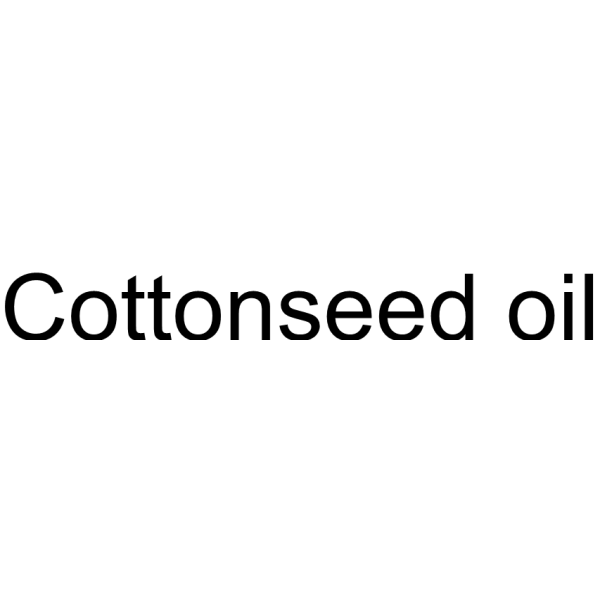
-
- HY-W123052
-
|
Linseed oil boiled
|
Biochemical Assay Reagents
|
Others
|
|
Linseed oil is a biochemical reagent that can be used as a biological material or organic compound for life science related research.
|
-
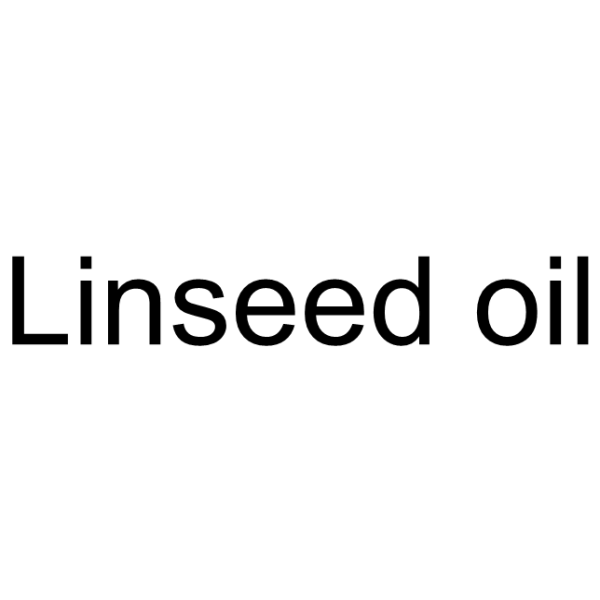
-
- HY-W093282
-
|
Soybean oil epoxide
|
Biochemical Assay Reagents
|
Others
|
|
Epoxidized soya bean oil (ESBO) is a vegetable oil-derived organic compound used as a plasticizer and stabilizer in various applications. It is produced by epoxidation of soybean oil, which introduces epoxy groups into the fatty acid chains of the oil. ESBO is a viscous, pale yellow liquid that is soluble in many organic solvents, such as chloroform and ethanol, but insoluble in water. It is commonly used as a plasticizer in polyvinyl chloride (PVC) products, including toys, food packaging materials and medical devices. In addition to its plasticizing properties, ESBO acts as an antioxidant and UV stabilizer, helping to prevent degradation and discoloration of PVC products over time. ESBOs have been investigated for their potential use in biodegradable plastics and as bio-based alternatives to traditional petroleum-derived plasticizers.
|
-
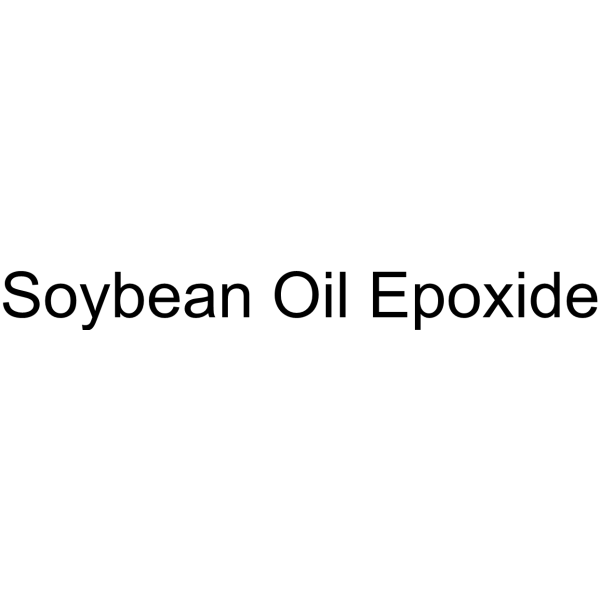
-
- HY-N1953
-
|
Clove leaf oil,rectified
|
|
|
|
Clove oil is a biochemical reagent that can be used as a biological material or organic compound for life science related research.
|
-
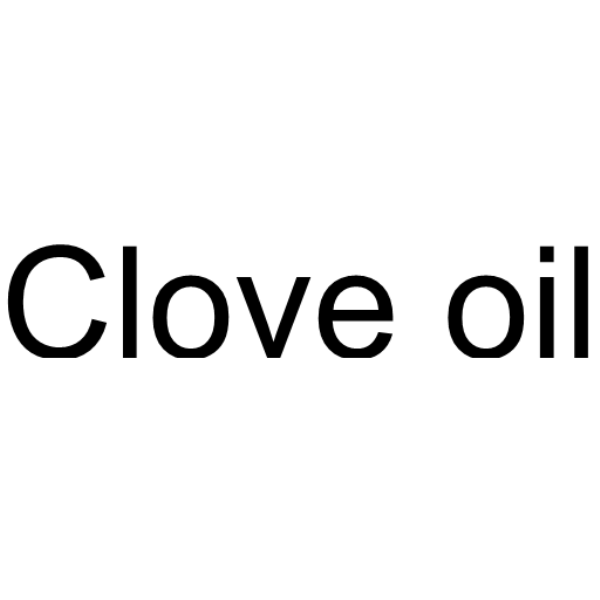
-
- HY-P2959
-
|
Fish oil from menhaden
|
Biochemical Assay Reagents
|
Others
|
|
Fish oil from menhaden is a biochemical reagent that can be used as a biological material or organic compound for life science related research.
|
-
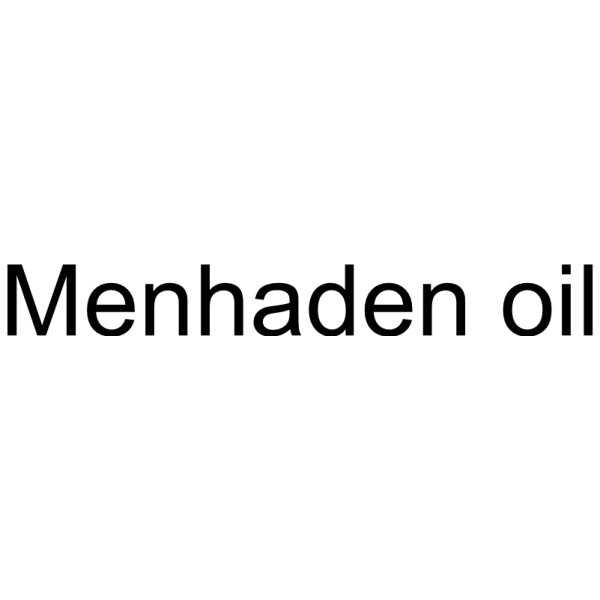
-
- HY-Y1888
-
-
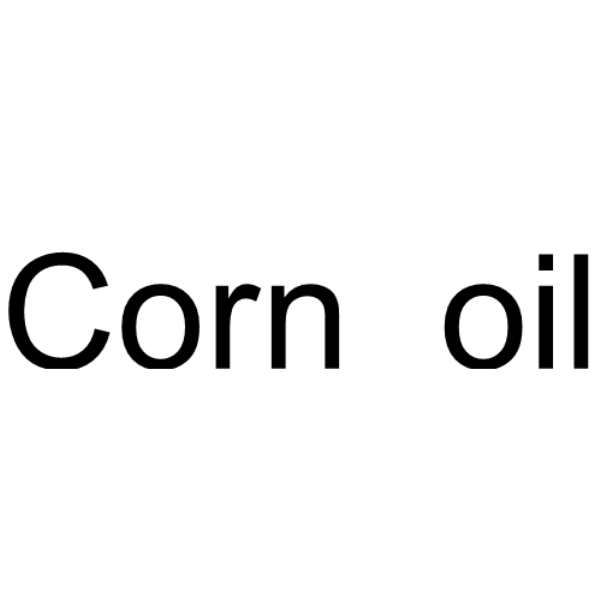
-
- HY-401424
-
|
Polyoxyethylene(36) Castor oil; PEG-36 Castor oil
|
Biochemical Assay Reagents
|
Others
|
|
Cremophor EL-36 (Polyoxyethylene(36) Castor Oil; PEG-36 Castor Oil) is a commonly used solvent that can be used to prepare paclitaxel solutions after being mixed with ethanol .
|
-
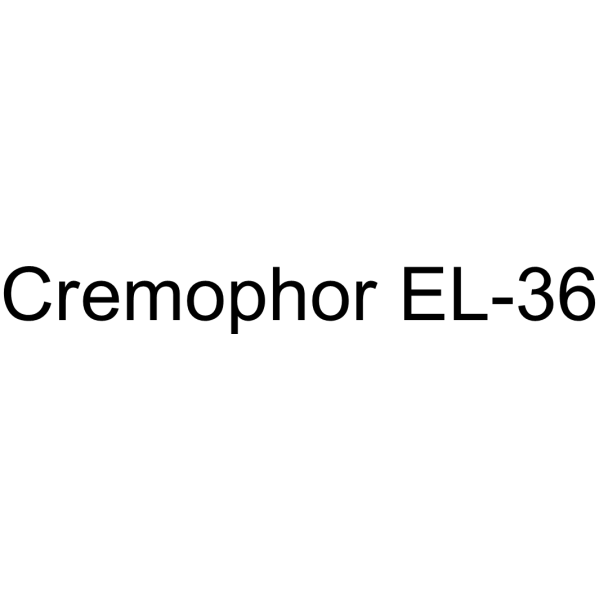
-
- HY-N7539
-
|
|
Others
|
Metabolic Disease
|
|
Cognac oil, mainly found in wine lees, has unique fatty acid profiles, including Palmitic acid (59.26%), Linoleic acid (11.92%), Myristic acid (8.97%), Oleic acid (8.3%) and other fatty acids. Cognac oil leads to a general increase in the permeation of R6G (Rhodamine 6G) across all the membranes .
|
-
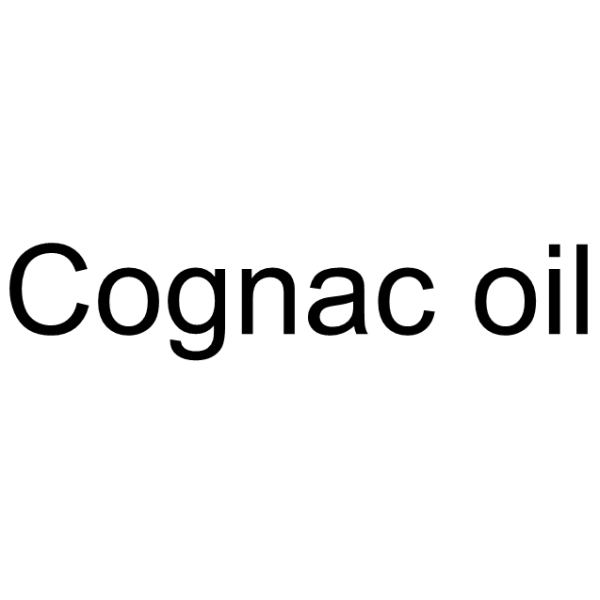
-
- HY-108750
-
|
VT 18 (oil); Vegetoil; Wesson
|
Biochemical Assay Reagents
|
Others
|
|
Soybean oil is a biochemical reagent that can be used as a biological material or organic compound for life science related research.
|
-
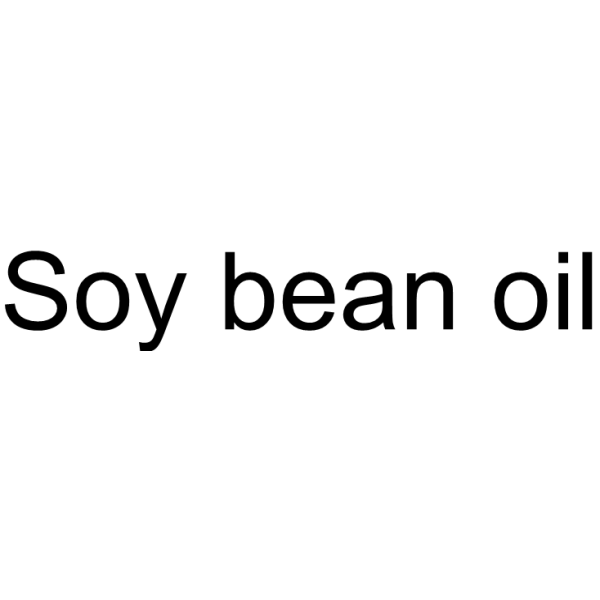
-
- HY-W127601
-
|
|
Biochemical Assay Reagents
|
Others
|
|
Lard oil is a biochemical reagent that can be used as a biological material or organic compound for life science related research. Lard oil is a click chemistry reagent, it contains an Azide group and can undergo copper-catalyzed azide-alkyne cycloaddition reaction (CuAAc) with molecules containing Alkyne groups. Strain-promoted alkyne-azide cycloaddition (SPAAC) can also occur with molecules containing DBCO or BCN groups.
|
-

-
- HY-W115743
-
|
|
Biochemical Assay Reagents
|
Others
|
|
Sulfonated castor oil is a biochemical reagent that can be used as a biological material or organic compound for life science related research.
|
-
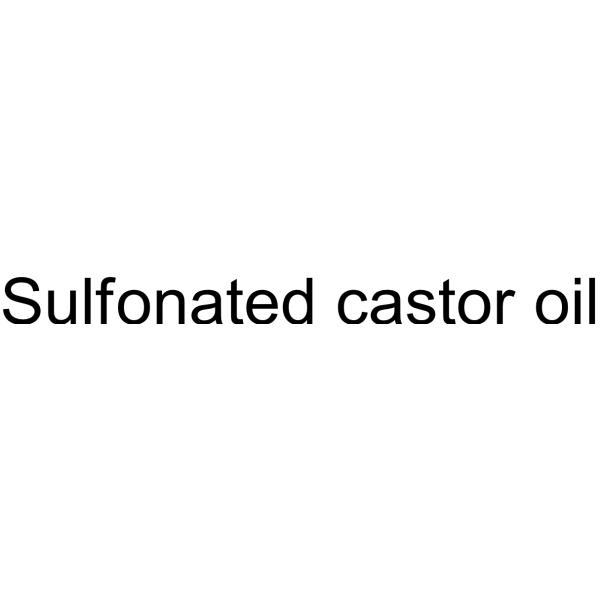
-
- HY-154629
-
|
|
Biochemical Assay Reagents
|
Others
|
|
Sesame Oil can be used as an excipient, such as Oil-soluble substance carrier, solvent, etc. Pharmaceutical excipients, or pharmaceutical auxiliaries, refer to other chemical substances used in the pharmaceutical process other than pharmaceutical ingredients. Pharmaceutical excipients generally refer to inactive ingredients in pharmaceutical preparations, which can improve the stability, solubility and processability of pharmaceutical preparations. Pharmaceutical excipients also affect the absorption, distribution, metabolism, and elimination (ADME) processes of co-administered drugs .
|
-
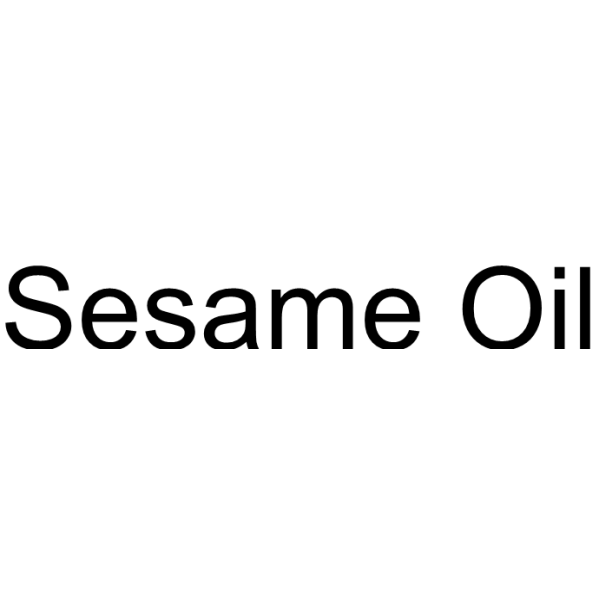
-
- HY-D2196
-
|
|
Fluorescent Dye
|
Others
|
|
AgAuSe Oil phase (1000 nm) is a bright and biocompatible fluorescent nanoprobe in the second near-infrared window.
|
-
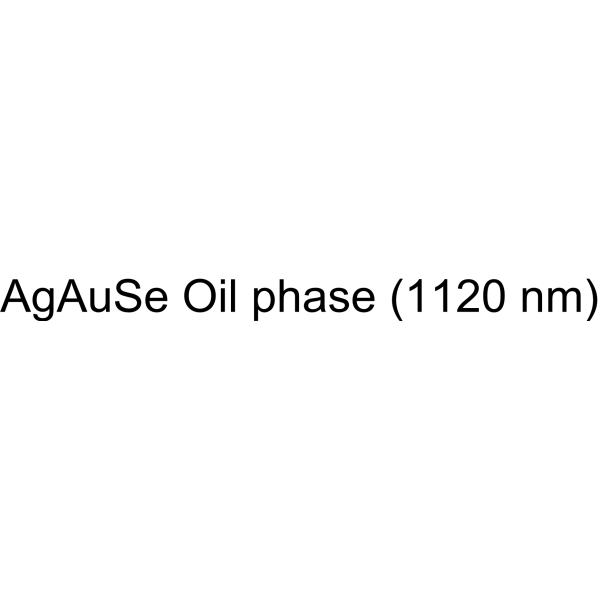
-
- HY-D2193
-
|
|
Fluorescent Dye
|
Others
|
|
AgAuSe Oil phase (1000 nm) is a bright and biocompatible fluorescent nanoprobe in the second near-infrared window .
|
-
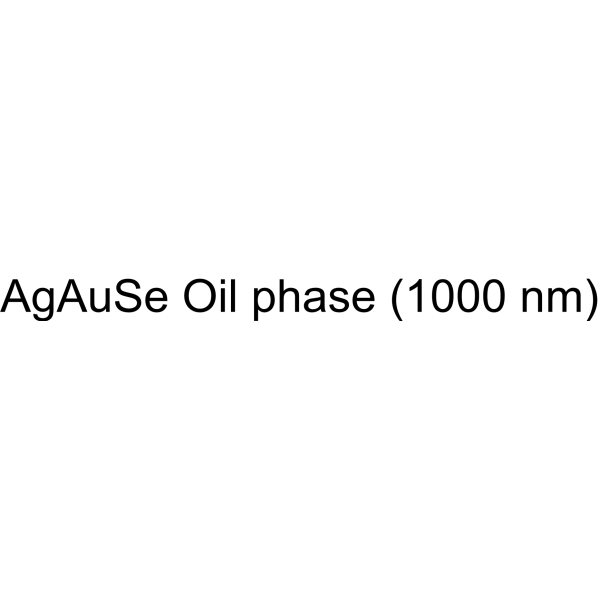
-
- HY-107965
-
|
Safflower seed oil (from Carthamus tinctorius seed)
|
Biochemical Assay Reagents
|
Others
|
|
Safflower seed oil from Carthamus tinctorius seed is a biochemical reagent that can be used as a biological material or organic compound for life science related research.
|
-
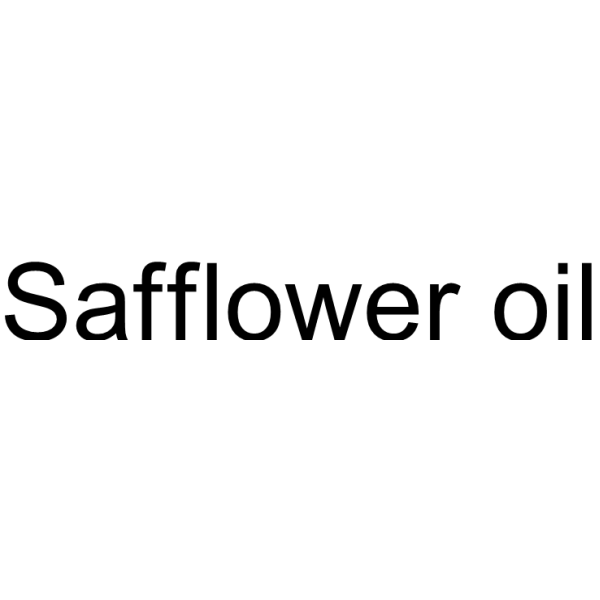
-
- HY-114619
-
|
Oleic acid anilide; OAA
|
Acyltransferase
|
Others
|
|
Oleyl anilide (Oleic acid anilide) is a toxic agent found in some stocks of toxic oil, which is associated with toxic oil syndrome (TOS). Oleyl anilide is an inhibitor of acyl-coenzyme A:cholesterol acyltransferase (ACAT) (IC50: 26 µM) .
|
-
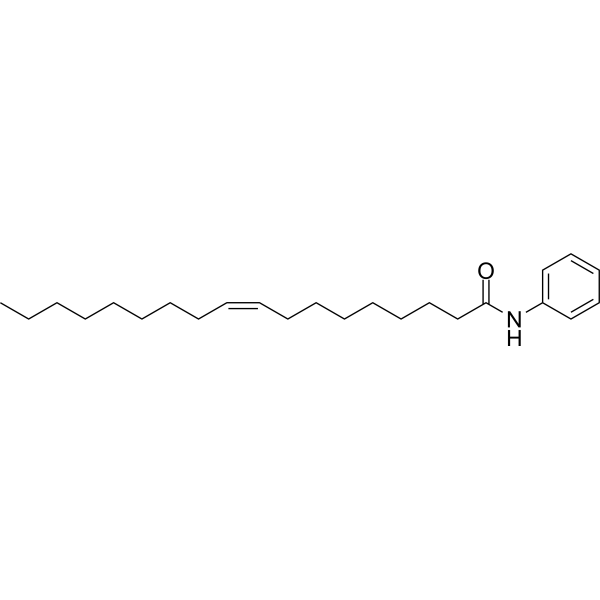
-
- HY-154631
-
|
|
Biochemical Assay Reagents
|
Others
|
|
Peanut Oil can be used as an excipient. Pharmaceutical excipients, or pharmaceutical auxiliaries, refer to other chemical substances used in the pharmaceutical process other than pharmaceutical ingredients. Pharmaceutical excipients generally refer to inactive ingredients in pharmaceutical preparations, which can improve the stability, solubility and processability of pharmaceutical preparations. Pharmaceutical excipients also affect the absorption, distribution, metabolism, and elimination (ADME) processes of co-administered drugs .
|
-

-
- HY-N12378
-
|
|
Others
|
Inflammation/Immunology
|
|
β-Patchoulene is a tricyclic sesquiterpene isolated from the oil of Pogostemon cablin (patchouli oil). β-Patchoulene
can be used for the treatment of inflammatory diseases .
|
-
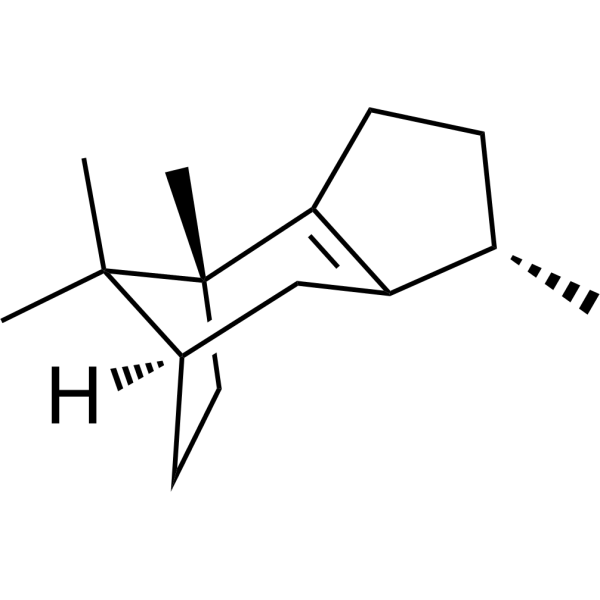
-
- HY-N8573
-
|
|
Others
|
Others
|
|
β-Phellandrene is obtained from Carum petroselinum. β-Phellandrene can be used to essential oil additives .
|
-
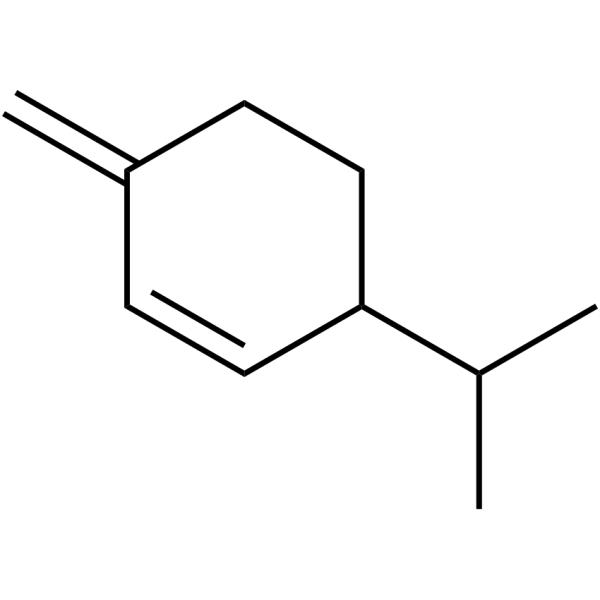
-
- HY-N10320
-
|
|
Others
|
Others
|
|
(-)-(E)-α-Atlantone is a volatile constituent of Artemisia vestita oil .
|
-
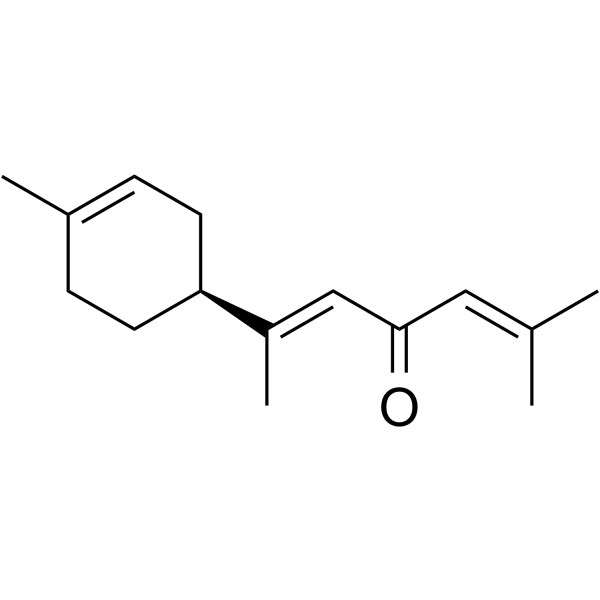
-
- HY-W236273
-
|
|
Others
|
Others
|
|
(E)-Ethyl cinnamate can be isolated from davana oil .
|
-
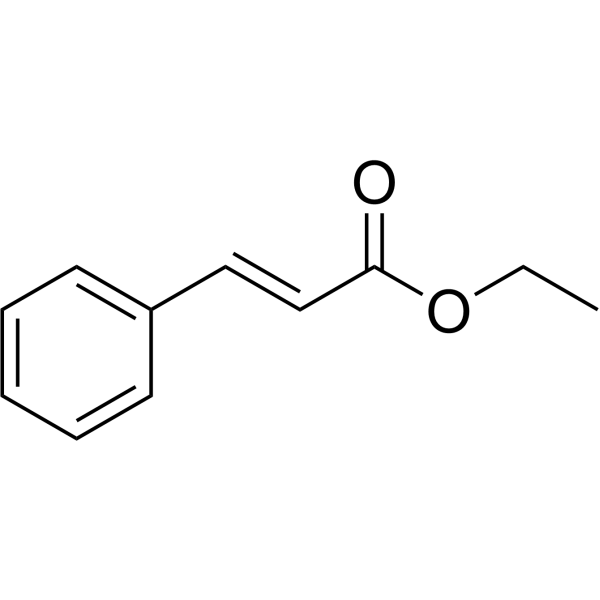
-
- HY-116776
-
|
|
Others
|
Metabolic Disease
|
|
Hexadecatetraenoic acid is an unsaturated fatty acid that can be isolated from sardine oil .
|
-
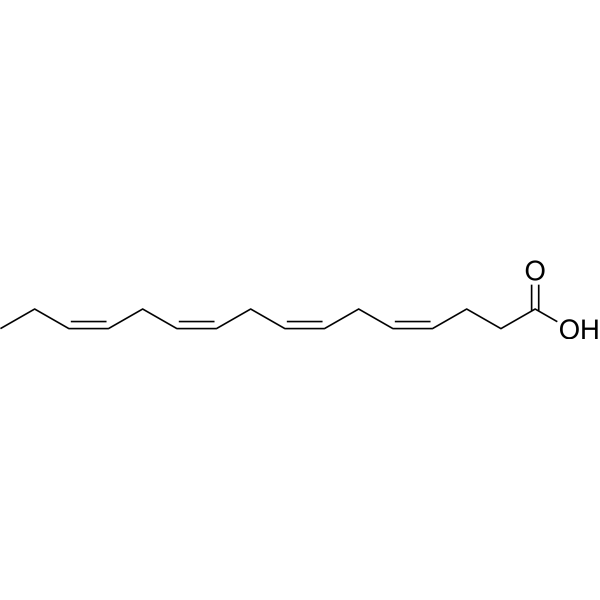
-
- HY-N7819
-
|
Norphytane
|
Others
|
Inflammation/Immunology
|
|
Pristane (Norphytane) is a naturally occurring hydrocarbon oil found in small quantities in many plants, in various marine organisms, and as the most active component of mineral oil . Pristane is a non-antigenic adjuvant, and induces MHC class II-restricted, arthritogenic T cells in the rat .
|
-
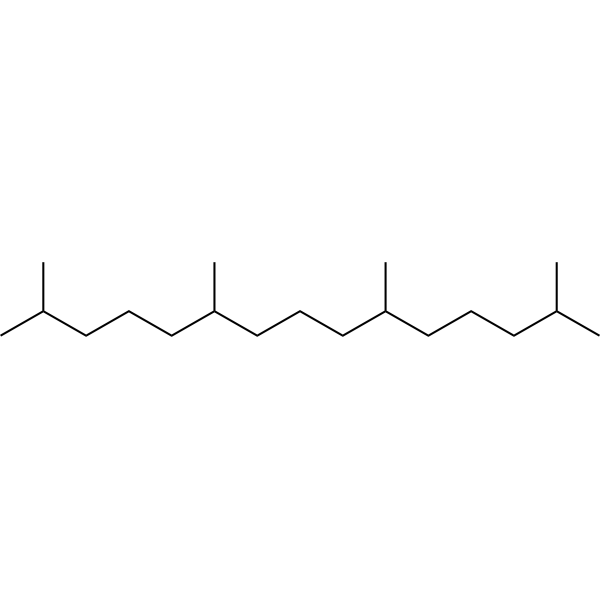
-
- HY-124481
-
|
|
COX
|
Inflammation/Immunology
|
|
Oleocanthal is a COX-1/2 enzyme inhibitor and a nonsteroidal anti-inflammatory agent. Oleocanthal is obtained from virgin olive oil .
|
-
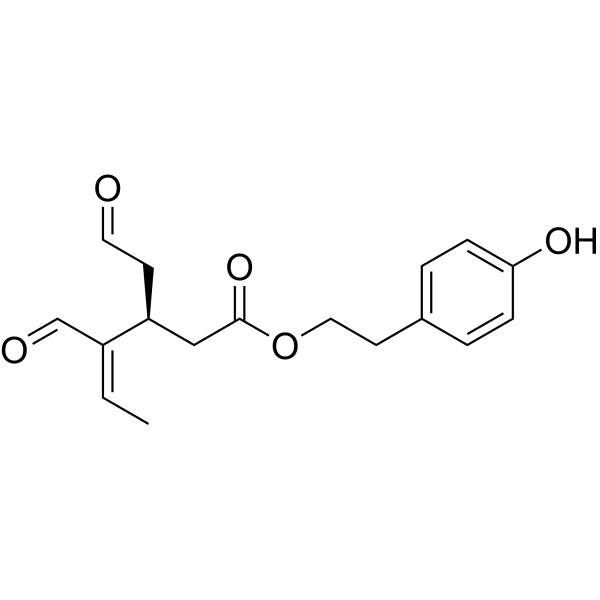
-
- HY-N10872
-
|
|
Others
|
Others
|
|
(Rac)-Phorbol-12-(2-methylbutyrate) is a nature product that could be isolated form croton oil .
|
-
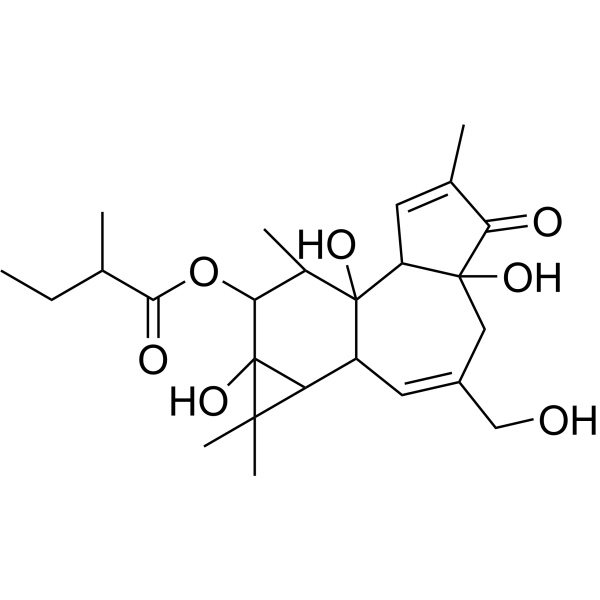
-
- HY-157739
-
|
|
Others
|
Others
|
|
1,2-Dioleoyl-3-arachidoylglycerol (AOO) is a triacylglycerol that can be isolated from soybean oil .
|
-
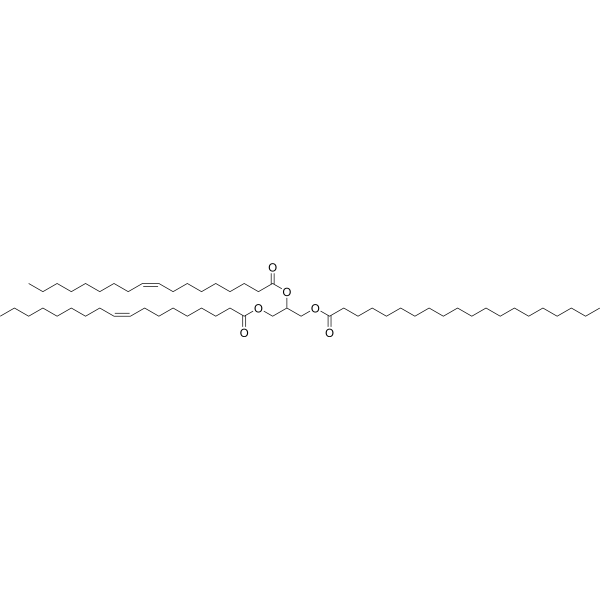
-
- HY-W049970
-
|
|
Bacterial
|
Infection
|
|
Carvacrol methyl ether, a Carvacrol analog, can be isolated from plant volatile oil. Carvacrol methyl ether exhibits antibacterial activity .
|
-

-
- HY-160198
-
|
|
Others
|
Infection
|
|
Vaccine adjuvant-1 is an vaccine adjuvant is a vaccine adjuvant containing an oil phase, emulsifying agent and water .
|
-

-
- HY-W011035
-
|
|
Parasite
|
Infection
|
|
Dodecamethylpentasiloxane is a component of siloxanes and can be used as silicone oil. Dodecamethylpentasiloxane exhibits insecticidal activity against bed bug .
|
-
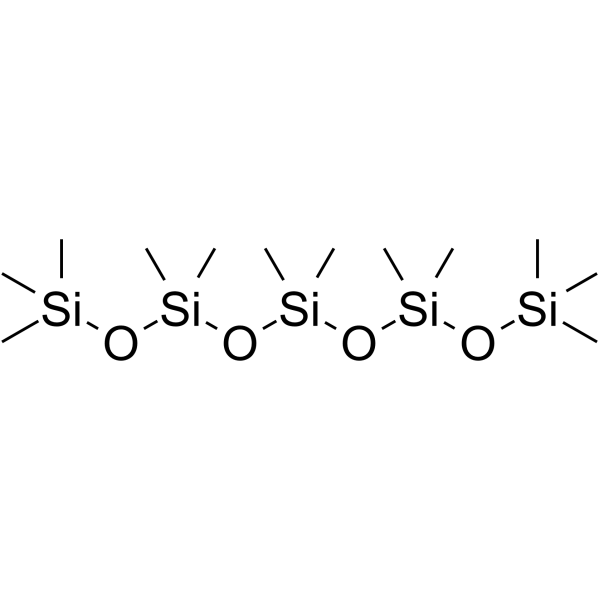
-
- HY-N9484
-
|
|
Drug Metabolite
|
Others
|
|
Menthofuran is a proximate toxic metabolite of (R)-(+)-Pulegone. Menthofuran regulates essential oil biosynthesis in peppermint by controlling a downstream monoterpene reductase .
|
-
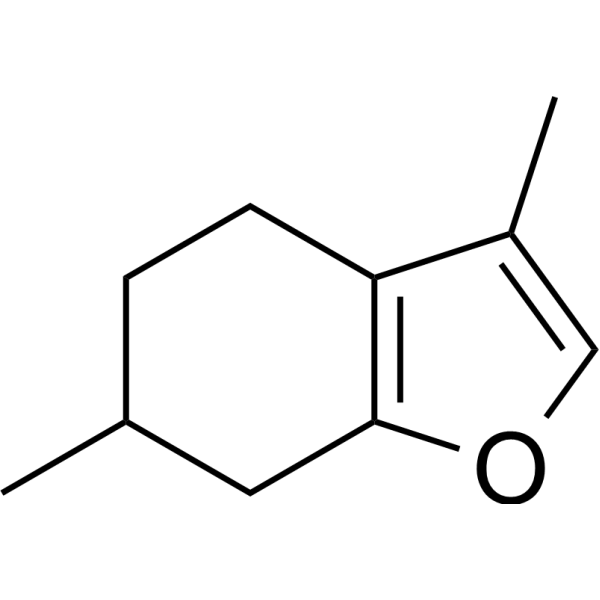
-
- HY-N4029
-
|
|
Others
|
Cancer
|
|
Humulene oxide II is an essential oil component from Zingiber striolatum Diels flowers, leaves and stems. Humulene oxide II has cytotoxicity against A549, PC-3 and K562 cell lines .
|
-
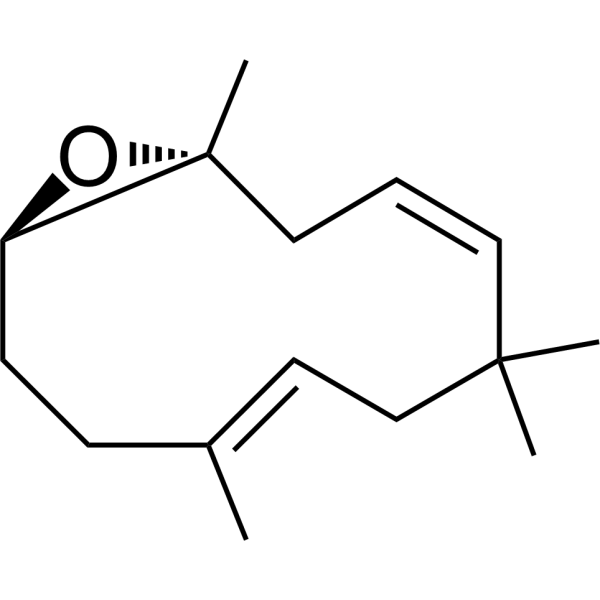
-
- HY-B0055
-
|
Cyclopentacycloheptene
|
HIV
|
Infection
|
|
Azulene (Cyclopentacycloheptene) is as an isomer of naphthalene with high anti-HIV activity. Azulene, isolated from the distillation of chamomile oil, is a scaffold in medicinal chemistry .
|
-

-
- HY-Y0189S
-
|
Wintergreen oil-d4
|
COX
|
Inflammation/Immunology
|
|
Methyl Salicylate-d4 is the deuterium labeled Methyl Salicylate[1]. Methyl Salicylate (Wintergreen oil) is a topical analgesic and anti-inflammatory agent. Also used as a pesticide, a denaturant, a fragrance ingredient, and a flavoring agent in food and tobacco products[2]. A systemic acquired resistance (SAR) signal in tobacco[3]. A topical nonsteroidal anti-inflammatory agent (NSAID). Methyl salicylate lactoside is a COX inhibitor[5].
|
-
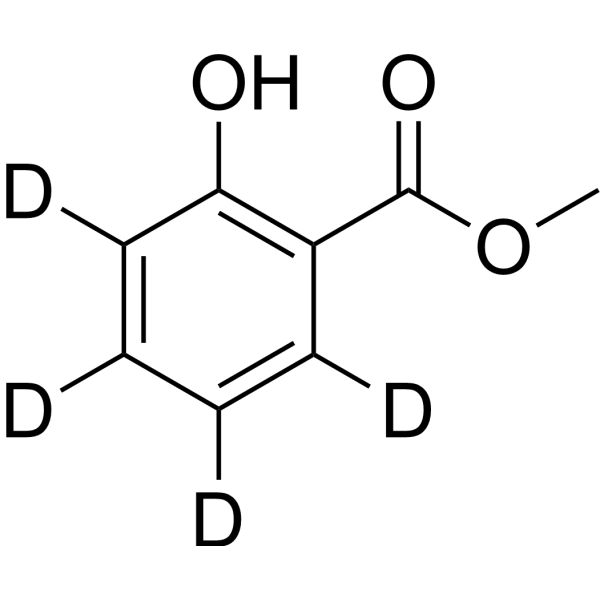
-
- HY-157738
-
|
|
Others
|
Others
|
|
1,2-Dilauroyl-3-myristoyl-rac-glycerol is a medium carbon chain glyceride which can be used for synthesis of functional edible oil .
|
-

-
- HY-N1109
-
|
|
Endogenous Metabolite
|
Inflammation/Immunology
|
|
Uvaol, a triterpene present in olives and virgin olive oil, possesses anti-inflammatory properties and antioxidant effects. Uvaol attenuates pleuritis and eosinophilic inflammation in ovalbumin-induced allergy in mice .
|
-

-
- HY-W012835
-
|
4-Methoxytoluene
|
Biochemical Assay Reagents
|
Others
|
|
4-Methylanisole (4-Methoxytoluene) is food flavoring agent and can be naturally found in Ylang Ylang fragrance oil .
|
-
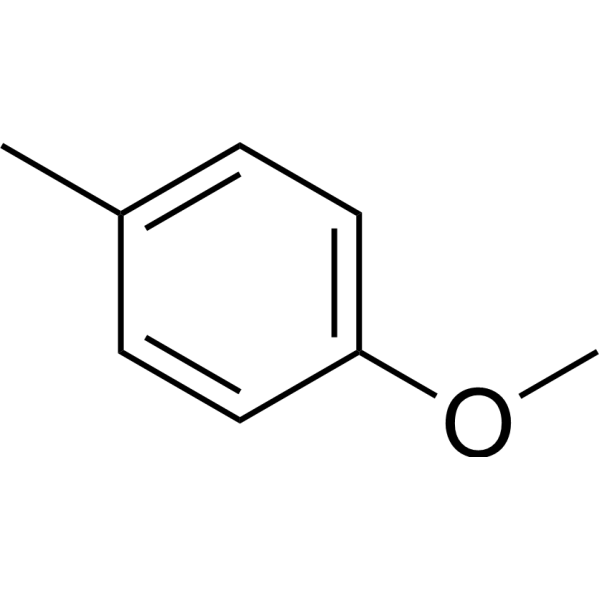
-
- HY-N2085
-
|
(S)-(-)-Perillaldehyde; (S)-Perillaldehyde
|
Others
|
Neurological Disease
|
|
L-Perillaldehyde is a major component in the essential oil containing in Perillae Herba. Inhalation of L-Perillaldehyde shows antidepressant-like activity through the olfactory nervous function .
|
-
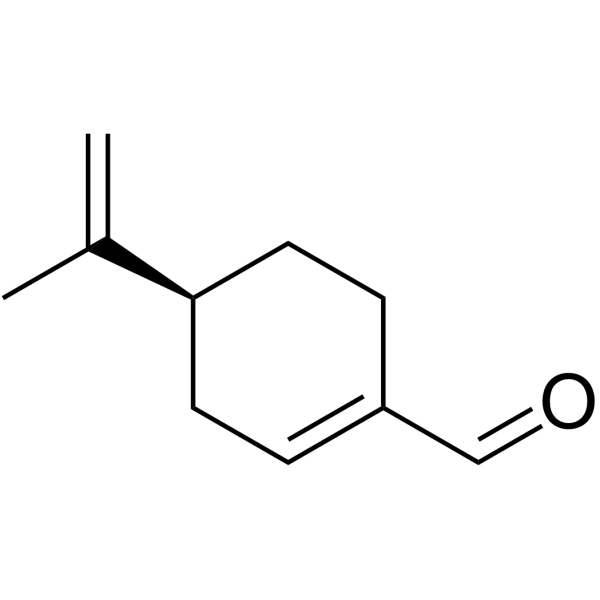
-
- HY-N10100
-
|
|
Others
|
Others
|
|
Epiglobulol is a natural product that can be isolated from Atalantia buxifolia. Epiglobulol is a principal components of essential oil which has significant contact toxicity against three stored-product insects .
|
-

-
- HY-N0968
-
|
|
Others
|
Others
|
|
1-Methyl-2-[(Z)-6-undecenyl]-4(1H)-quinolone, as a colorless oil, is a quinolone alkaloid isolated from the fruit of Evodia rutaecarpa BENTHAM (Rutaceae) .
|
-
![1-Methyl-2-[(Z)-6-undecenyl]-4(1H)-quinolone](//file.medchemexpress.com/product_pic/hy-n0968.gif)
-
- HY-N7113
-
|
|
Others
|
Cancer
|
|
Squalane, found in certain fish oils (especially shark liver oil), and some vegetable oils, is a saturated derivative of Squalene. Squalane shows anticancer, antioxidant, skin hydrating, and emollient activities .
|
-
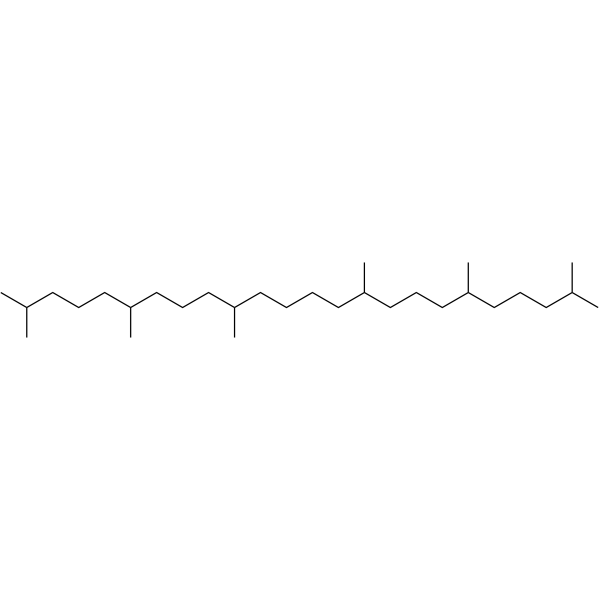
-
- HY-135087
-
|
|
Biochemical Assay Reagents
|
Others
|
|
Caprylic/Capric Triglyceride is the triglycerides and esters prepared from fractionated vegetable oil sources and fatty acids from coconuts and palm kernel oils. Caprylic/Capric Triglyceride possesses excellent oxidation stability. Caprylic/Capric Triglyceride is used as a food additive and used in cosmetics .
|
-
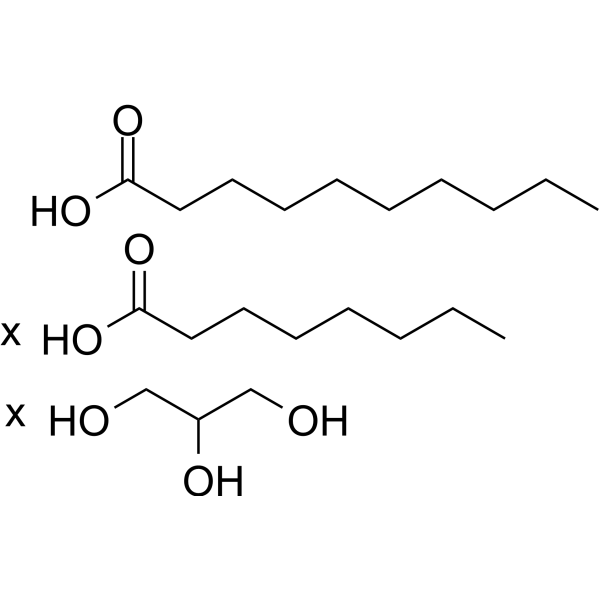
-
- HY-139066
-
|
Trichosanic acid
|
Others
|
Metabolic Disease
|
|
Punicic acid is a bioactive compound of pomegranate seed oil. Punicic acid is an isomer of conjugated α-linolenic acid and a ω-5 polyunsaturated fatty acid. Punicic acid has the potential for the research of various chronic diseases .
|
-
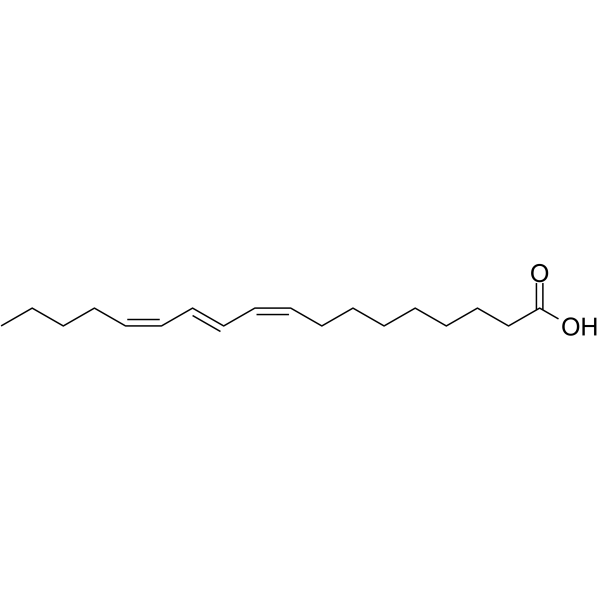
-
- HY-W015635
-
|
|
Others
|
Cancer
|
|
Diallyl disulfide, an active compound in garlic oil, is an orally active human squalene monooxygenase inhibitor with an IC50 of 400 μM for squalene epoxidation. Diallyl disulfide exhibits obvious anti-inflammatory, anti-oxidative, antidepressant and anti-tumor activities .
|
-

- HY-108749
-
|
Cropure OL
|
Biochemical Assay Reagents
|
Others
|
|
Cropure OL is a biochemical reagent that can be used as a biological material or organic compound for life science related research.
|
-
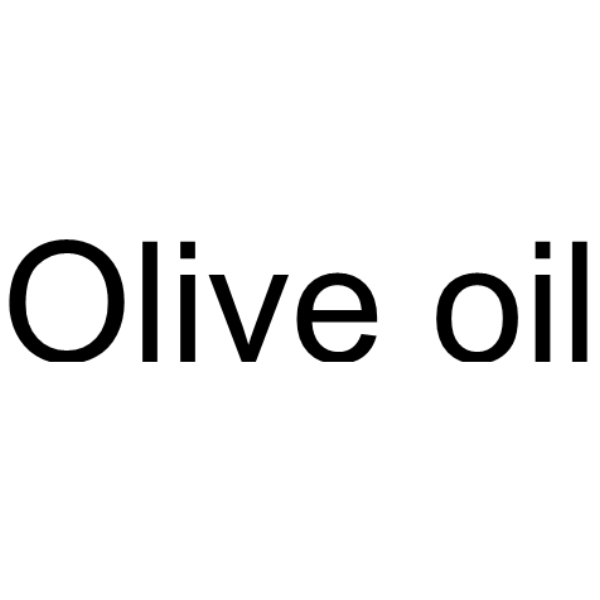
- HY-N0292
-
|
|
Cytochrome P450
PPAR
Apoptosis
|
Cardiovascular Disease
Inflammation/Immunology
Cancer
|
|
Oleuropein, found in olive leaves and oil, exerts antioxidant, anti-inflammatory and anti-atherogenic effects through direct inhibition of PPARγ transcriptional activity . Oleuropein induces apoptosis in breast cancer cells via the p53-dependent pathway and through the regulation of Bax and Bcl2 genes. Oleuropein also inhibits aromatase .
|
-

- HY-N6824
-
|
|
Others
|
Others
|
|
Hydroxy-β-sanshool is an alkylamide exists in Zanthoxylum bungeanum oil and Zanthoxylum schinifolium oil .
|
-
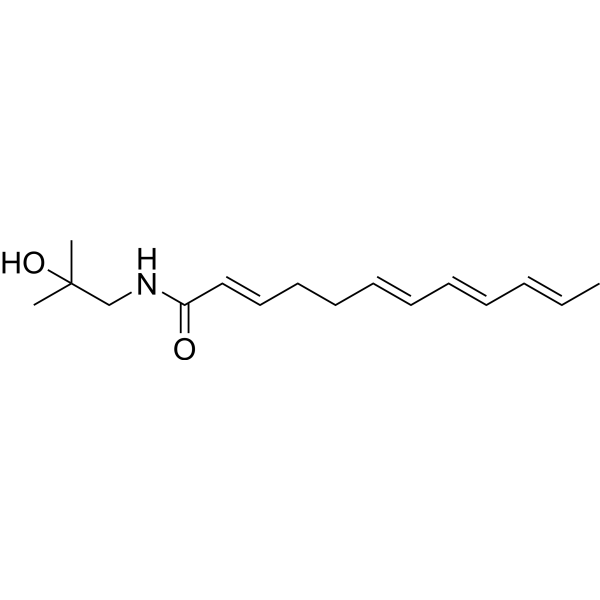
- HY-W015580
-
|
|
Biochemical Assay Reagents
|
Others
|
|
(+)-Fenchone exists in fennel seed oil (Foenicufum vulgare Mill.) and in the oil of Lavandula stoechas. Fenchone is used as a flavor in foods and in perfumery .
|
-

- HY-115051
-
|
|
Others
|
Others
|
|
2-Hydroxymethyltetrahydropyran is a volatile compound in Sambucus williamsii (SW) seed oil. SW seed oil has potential antioxidant activity .
|
-

- HY-107227
-
|
|
Others
|
Others
|
|
12-O-Tiglylphorbol-13-isobutyrate is a phorbol diester constituent of Croton tiglium L. seed oil (croton oil) .
|
-

- HY-B1918
-
|
|
|
|
|
(+)-Bornyl acetate is found in pichtae essential oil (Siberian fir needle oil). (+)-Bornyl acetate has a stronger inhibitory effect on root growth of Arabidopsis seedlings .
|
-
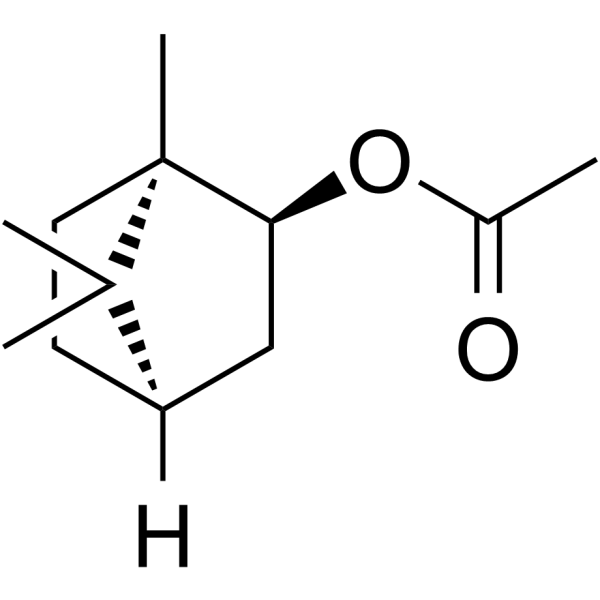
- HY-W015879
-
|
s-Heptyl alcohol
|
Bacterial
|
Inflammation/Immunology
|
|
2-Heptanol is one of chemical constituents identified in the essential oil of rhizome of Curcuma angustifolia and Curcuma zedoaria. Rhizome essential oil exhibited good antimicrobial and antioxidant activity .
|
-
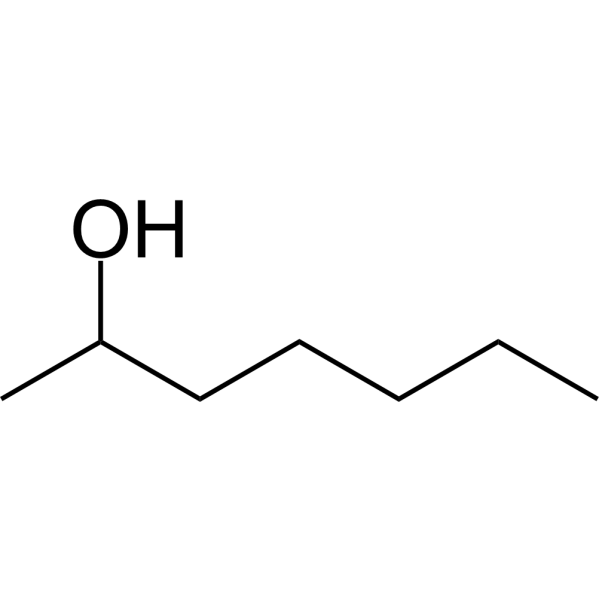
- HY-N2041
-
|
|
Endogenous Metabolite
NF-κB
Bacterial
|
Infection
Inflammation/Immunology
|
|
Myristic acid is an orally active saturated 14-carbon fatty acid found in most animal and plant fats, especially milk fat coconut oil, palm oil and nutmeg oil. Myristic acid exerts anti-inflammatory activity through the NF-κB pathway. Myristic acid has antibacterial, anti-inflammatory and analgesic properties .
|
-
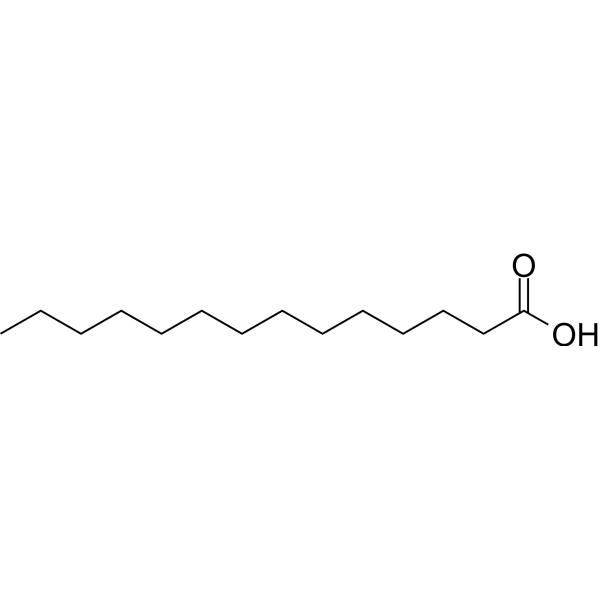
- HY-N7819S
-
|
|
Isotope-Labeled Compounds
|
Inflammation/Immunology
|
|
Pristane-d40 is the deuterium labeled Pristane[1]. Pristane (Norphytane) is a naturally occurring hydrocarbon oil found in small quantities in many plants, in various marine organisms, and as the most active component of mineral oil[2]. Pristane is a non-antigenic adjuvant, and induces MHC class II-restricted, arthritogenic T cells in the rat[3].
|
-
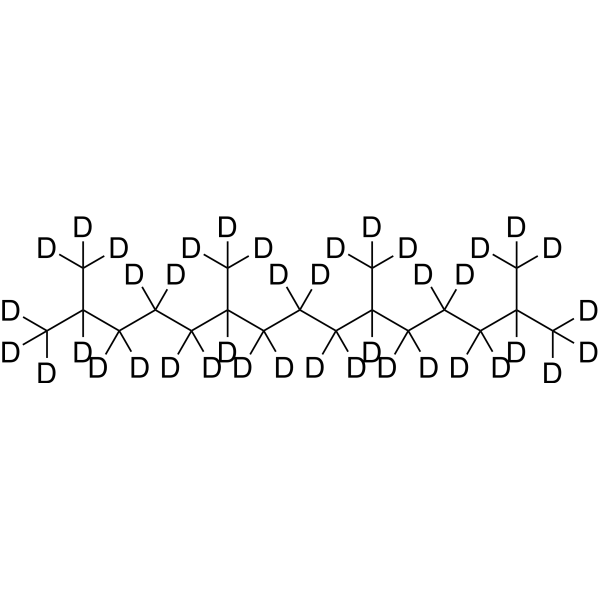
- HY-127033
-
-

- HY-N7055
-
-
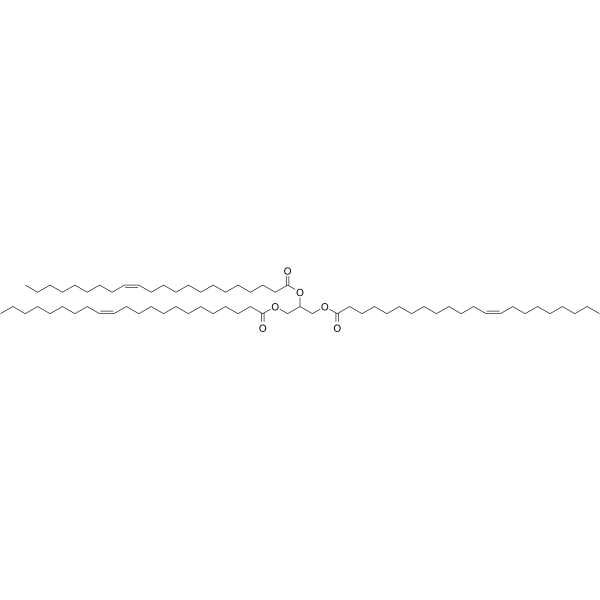
- HY-N7098
-
-
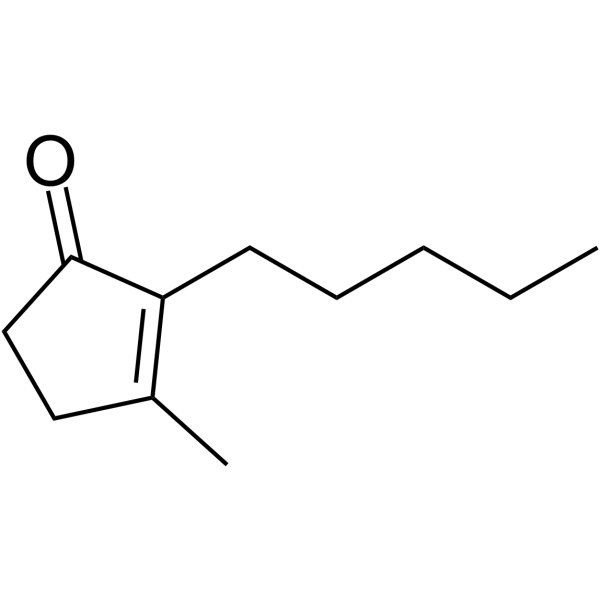
- HY-W012835S2
-
|
4-Methoxytoluene-13C
|
Isotope-Labeled Compounds
|
Others
|
|
4-Methylanisole- 13C is the 13C-labeled 4-Methylanisole. 4-Methylanisole (4-Methoxytoluene) is food flavoring agent and can be naturally found in Ylang Ylang fragrance oil[1].
|
-
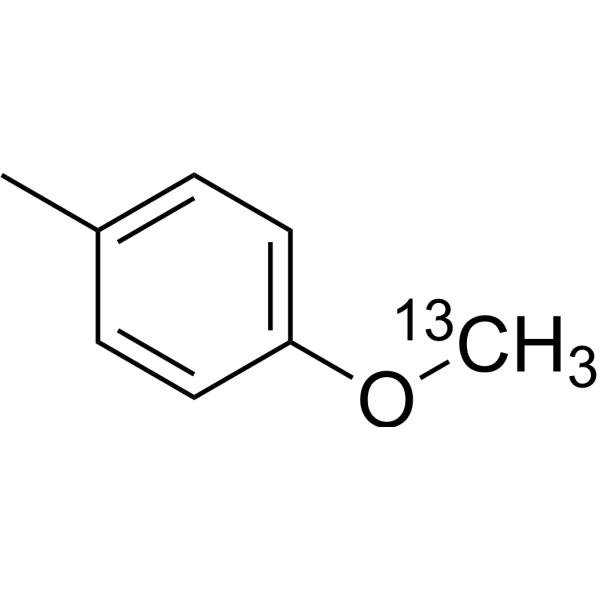
- HY-W250170
-
|
Octyldecyl glucoside
|
Biochemical Assay Reagents
|
Others
|
|
Decyl glucoside is a mild nonionic surfactant. Decyl glucoside can be derived from renewable raw materials such as glucose and fatty alcohols from coconut oil or palm kernel oil. Decyl glucoside is known for its excellent foaming and cleaning properties.
|
-

- HY-W088037
-
|
|
Others
|
Others
|
|
Tridecane is a short chain aliphatic hydrocarbon containing 13 carbon atoms. Tridecane is an volatile oil component isolated from essential oil of Piper aduncum L. Tridecane is a stress compound released by the brown marmorated stink bugs stress compound .
|
-
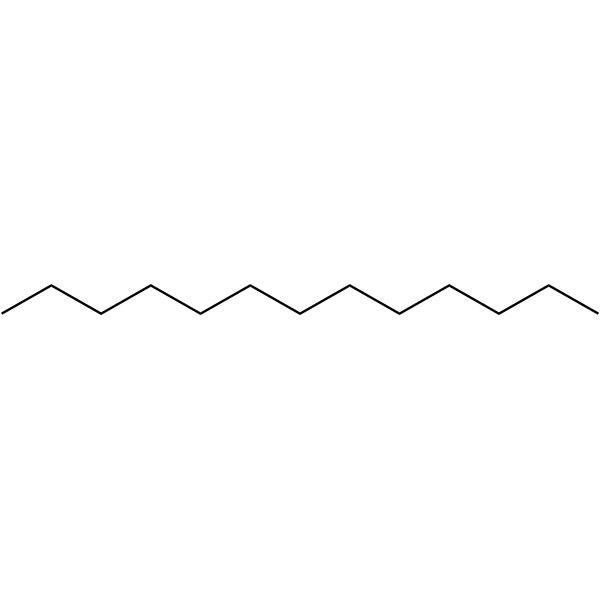
- HY-W012835S
-
|
4-Methoxytoluene-d4
|
Isotope-Labeled Compounds
|
Others
|
|
4-Methylanisole-d4 is the deuterium labeled 4-Methylanisole[1]. 4-Methylanisole (4-Methoxytoluene) is food flavoring agent and can be naturally found in Ylang Ylang fragrance oil[2].
|
-

- HY-W012835S1
-
|
4-Methoxytoluene-d3
|
Virus Protease
|
Others
|
|
4-Methylanisole-d3 is the deuterium labeled 4-Methylanisole[1]. 4-Methylanisole (4-Methoxytoluene) is food flavoring agent and can be naturally found in Ylang Ylang fragrance oil[2].
|
-
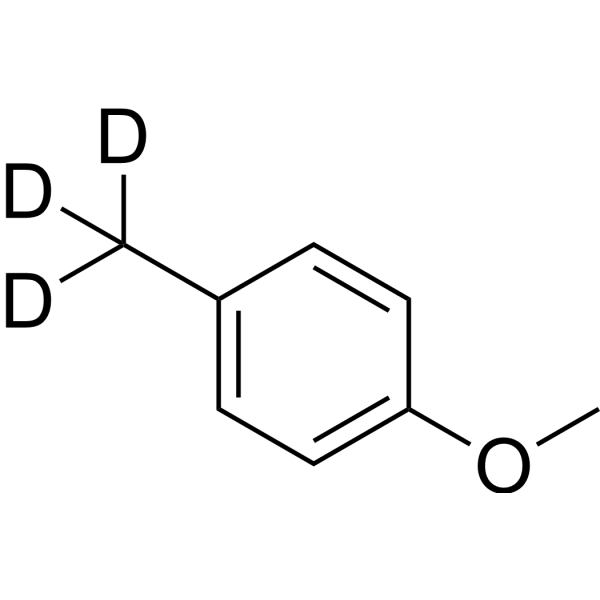
- HY-W012835S3
-
|
4-Methoxytoluene-d7
|
Isotope-Labeled Compounds
|
Others
|
|
4-Methylanisole-d7 is the deuterium labeled 4-Methylanisole[1]. 4-Methylanisole (4-Methoxytoluene) is food flavoring agent and can be naturally found in Ylang Ylang fragrance oil[2].
|
-
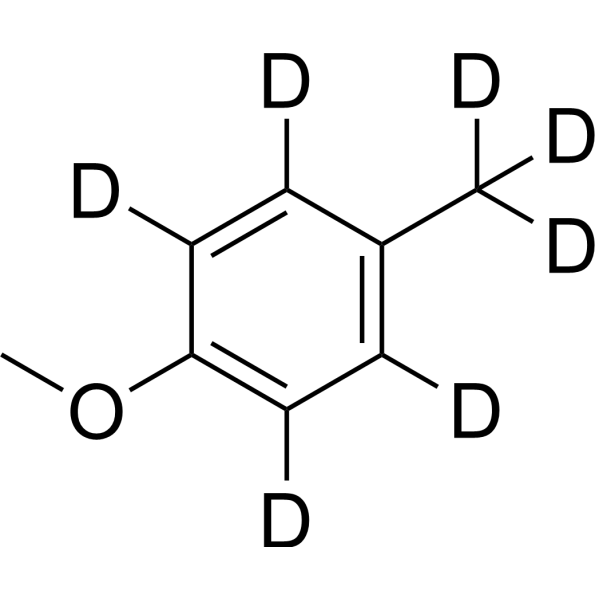
- HY-N7250
-
|
|
Others
|
Infection
|
|
(+)-trans-Isolimonene is a natural monoterpene isolated from essential oil .
|
-
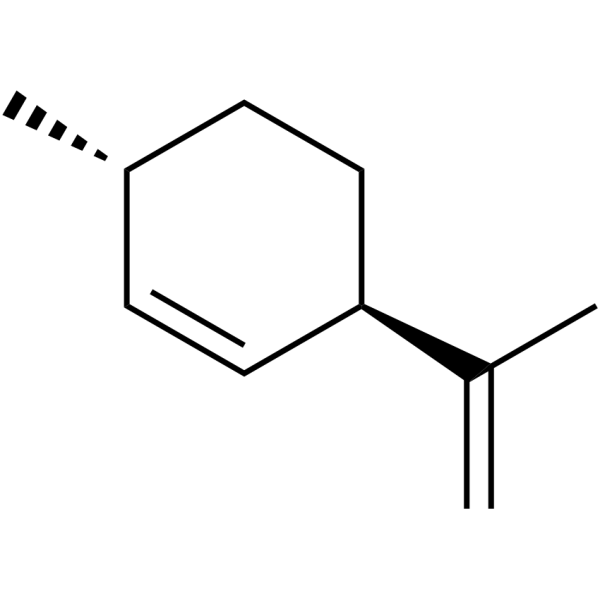
- HY-N0827
-
-
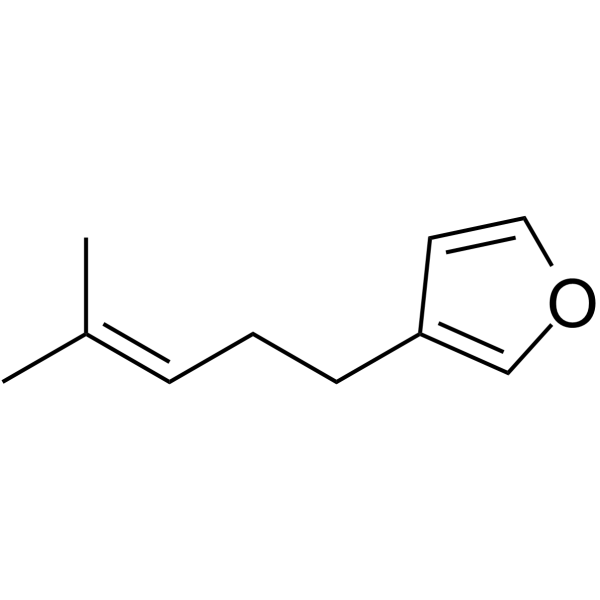
- HY-W004301
-
-
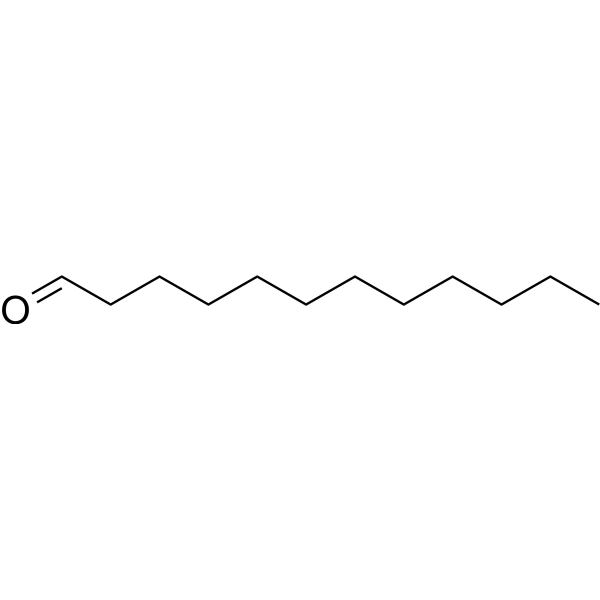
- HY-N2381
-
|
|
Parasite
|
Infection
Metabolic Disease
Inflammation/Immunology
Cancer
|
|
Menthone, an orally active monoterpene that can be isolated from plants and Mentha oil with antibacterial, antitumor, antioxidation, and antivirus properties. Menthone is a main volatile component of the essential oil, and has anti-Inflammatory properties in Schistosoma mansoni infection and rheumatoid arthritis .
|
-
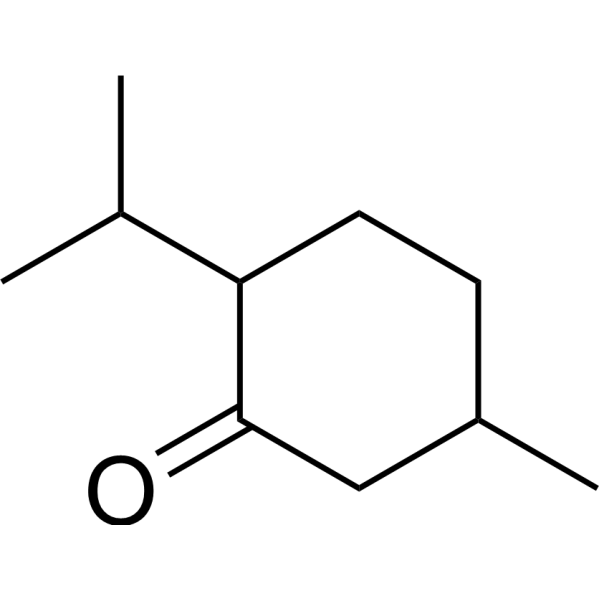
- HY-W012835S4
-
|
4-Methoxytoluene-d7
|
Isotope-Labeled Compounds
|
Others
|
|
4-Methylanisole-d7-1 is the deuterium labeled 4-Methylanisole[1]. 4-Methylanisole (4-Methoxytoluene) is food flavoring agent and can be naturally found in Ylang Ylang fragrance oil[2].
|
-
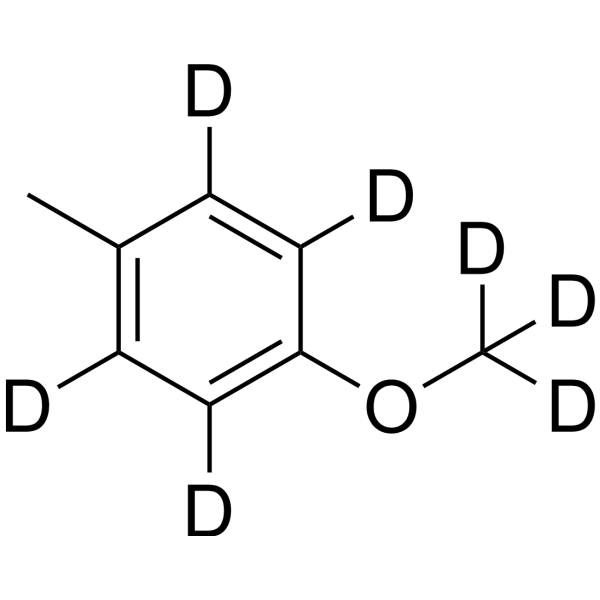
- HY-117419A
-
|
|
Others
|
Others
|
|
(±)-Lavandulyl acetate can be isolated from the oil components of Lavandula angustifolia Mill .
|
-
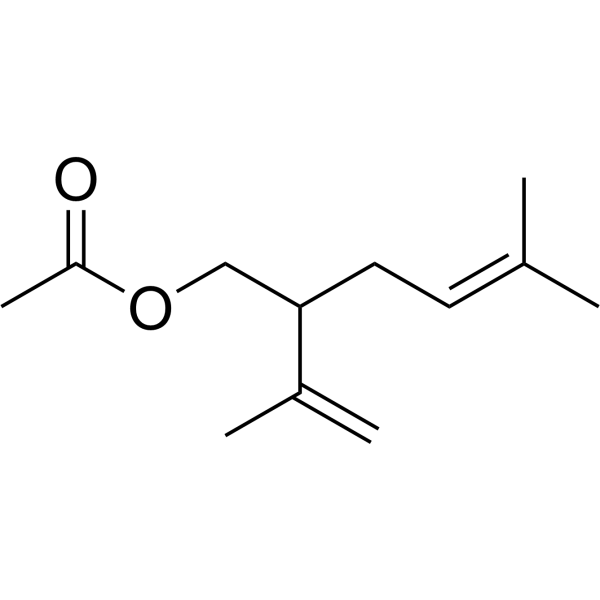
- HY-W017439
-
|
|
Others
|
Others
|
|
Ethyl benzoate is ester from oil of the overground parts of Artemisia monosperma[1].
|
-
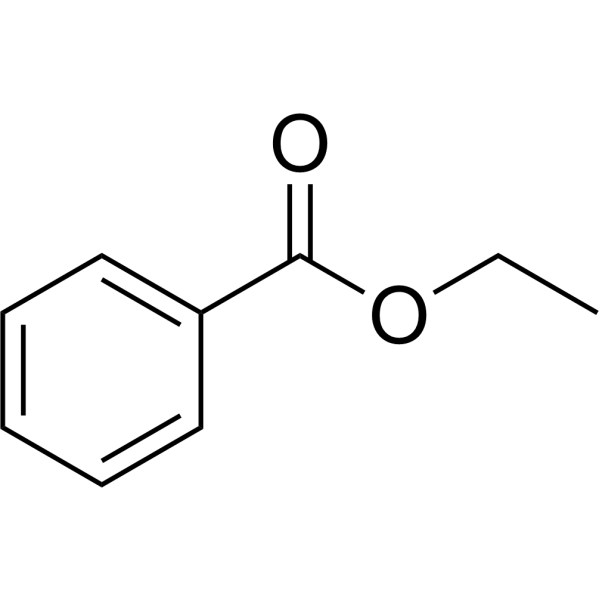
- HY-N5062
-
|
|
Others
|
Others
|
|
7,22,25-Stigmastatrienol is one of sterols of Berrettina pumpkin seed oil .
|
-
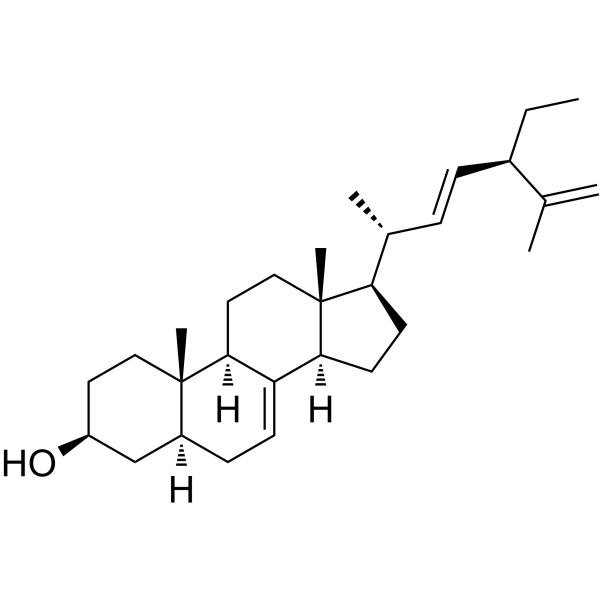
- HY-126573
-
-

- HY-W355141
-
|
|
Others
|
Cancer
|
|
Isopulegol is one of the main components of ECO (Eucalyptus citriodora oil). ECO has antibacterial activity .
|
-
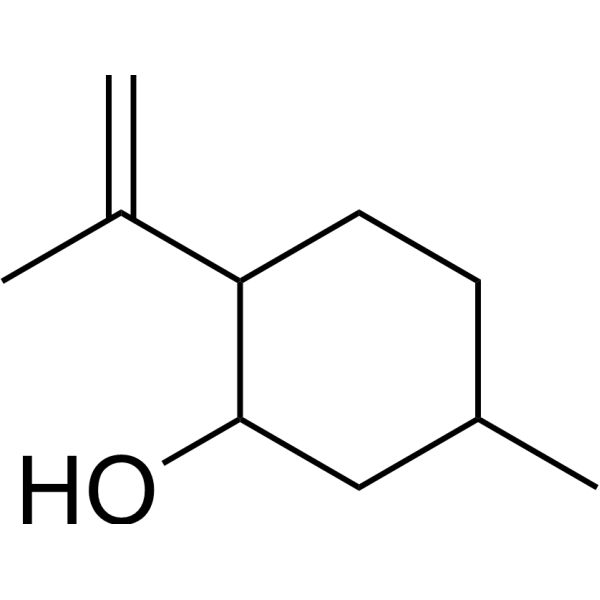
- HY-W088037S
-
|
|
Isotope-Labeled Compounds
|
Others
|
|
Tridecane-d28 is the deuterium labeled Tridecane[1]. Tridecane is a short chain aliphatic hydrocarbon containing 13 carbon atoms. Tridecane is an volatile oil component isolated from essential oil of Piper aduncum L. Tridecane is a stress compound released by the brown marmorated stink bugs stress compound[2][3].
|
-
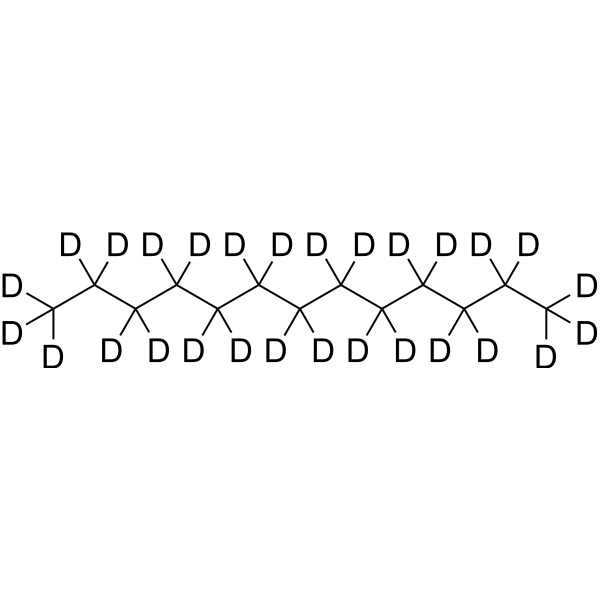
- HY-N0337
-
-

- HY-N7083
-
Citral
1 Publications Verification
|
Others
|
Inflammation/Immunology
Cancer
|
|
Citral is a monoterpene found in Cymbopogon citratus essential oil, with antihyperalgesic, anti-nociceptive and anti-inflammatory effects .
|
-
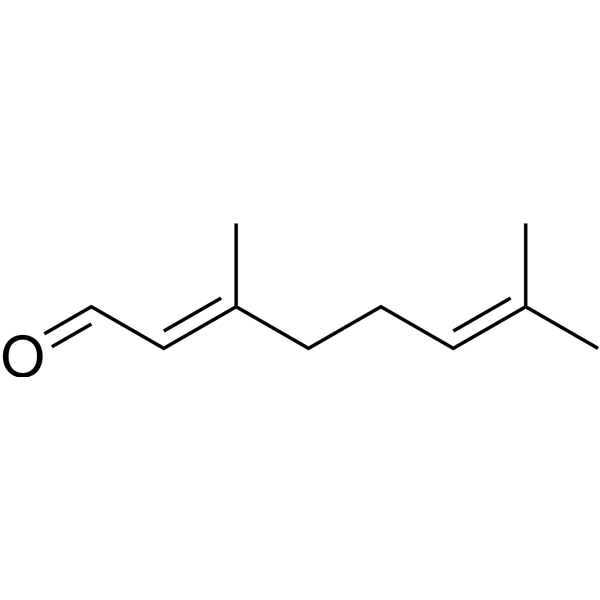
- HY-N3294
-
-
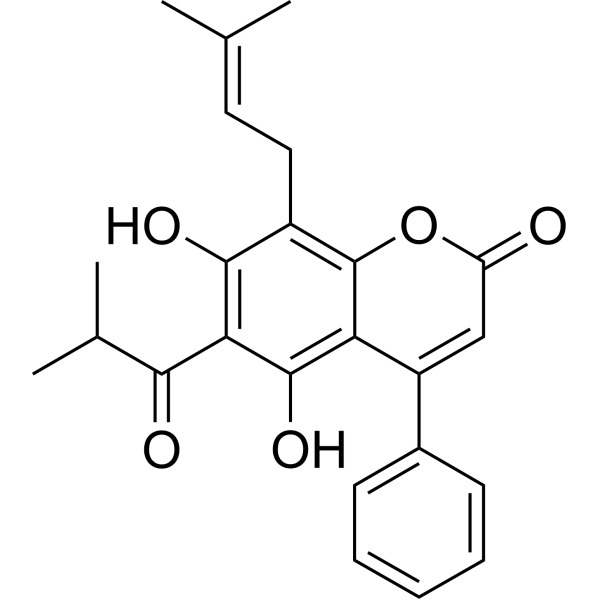
- HY-N12039
-
|
|
Others
|
Others
|
|
Juniper camphor is a sesquiterpene compound isolated from camphor blue oil, the high-boiling fraction of camphor .
|
-
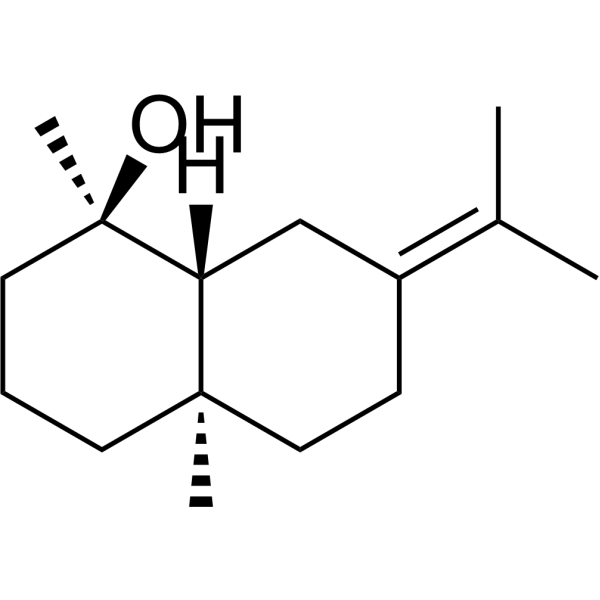
- HY-124187
-
|
Ethyl pinolenate
|
Biochemical Assay Reagents
|
Others
|
|
Pinolenic acid is a polyunsaturated fatty acid found in the seed oils of red pine (Pinus orientalis) and maritime pine (Pinus pinaster). Both oils were found to have lipid-lowering properties. A diet containing marine pine nut oil (MPSO) reduces HDL and ApoA1 levels in transgenic mice expressing human ApoA1. MPSO was found to reduce cholesterol efflux in vitro. Korean pine nut oil supplements may help obesity by reducing appetite. People who take this oil experience an increase in the satiety hormones CCK and GLP-1 and a decrease in appetite. The activity of the oil is attributed to pinolenic acid. Pinolenic acid is not metabolized to arachidonic acid and can reduce the level of arachidonic acid in the phosphatidylinositol fraction of HepG2 cells from 15.9% to 7.0%. Pinolenic acid ethyl ester is a neutral, more lipophilic form of the free acid.
|
-
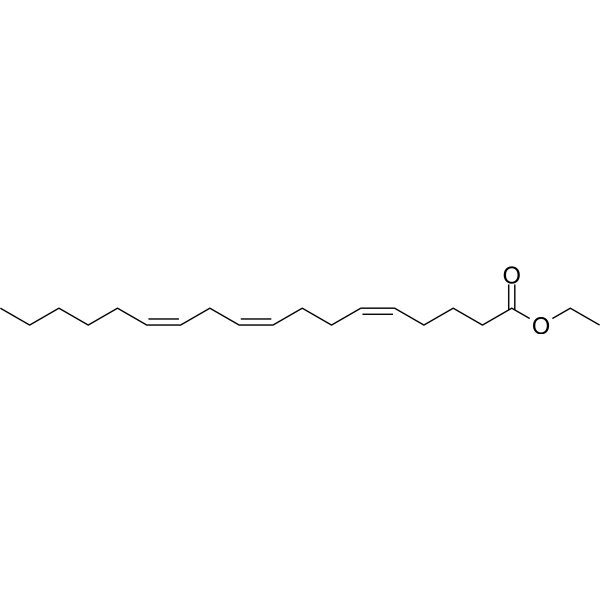
- HY-N0756A
-
|
L-(-)-Bornyl acetate
|
Fungal
|
Infection
|
|
(-)-Bornyl acetate (L-(-)-Bornyl acetate), isolated from hyssop oil, is a less active enantiomer of (+)-Bornyl acetate. (-)-Bornyl acetate possesses antifungal activity .
|
-

- HY-W160560
-
|
|
Others
|
Others
|
|
4-Vinylsyringol is a phenolic compound with potential antioxidant activity, which can be isolated from rapeseed oil .
|
-
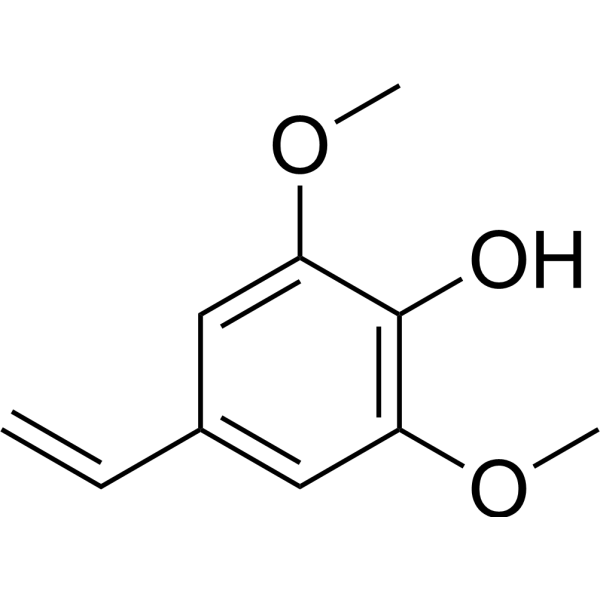
- HY-W017316
-
|
4-Carvomenthenol
|
Endogenous Metabolite
Bacterial
Fungal
|
Infection
Inflammation/Immunology
Cancer
|
|
Terpinen-4-ol (4-Carvomenthenol) is a naturally occurring monoterpene, and can be extracted from a variety of aromatic plants. Terpinen-4-ol is a potent bactericidal agent which possess antifungal , anti-inflammatory and antitumor properties as well, suggesting Terpinen-4-ol to be used for relevant research .
|
-
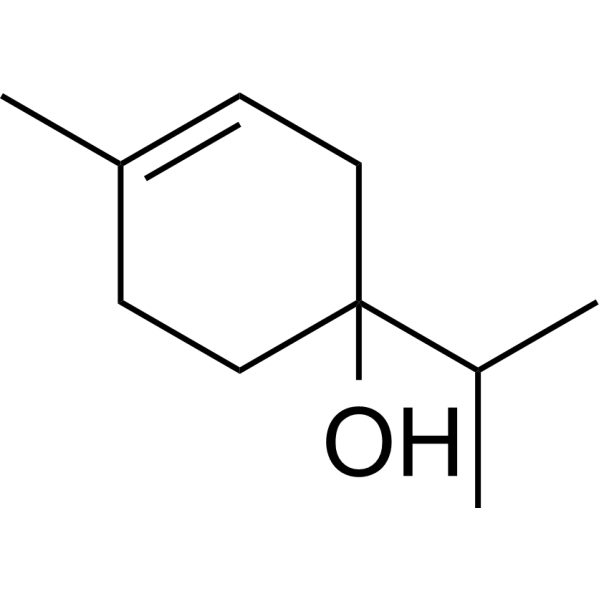
- HY-147113
-
|
|
Others
|
Others
|
|
2-Methyl-3-buten-1-ol is a component of ylang-ylang oils can be extracted from the flowers .
|
-
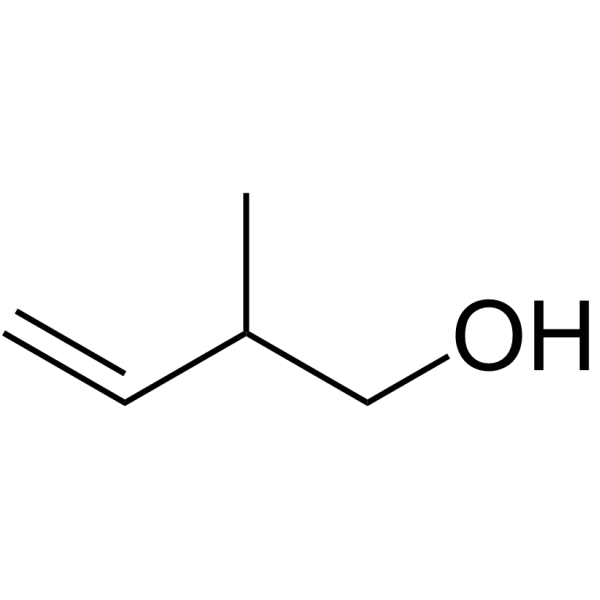
- HY-N8411
-
|
(+)-Aromadendrene
|
Bacterial
|
Infection
|
|
Aromadendrene can be isolated from Eucalyptus globulus. Aromadendrene has antimicrobial activity .
|
-
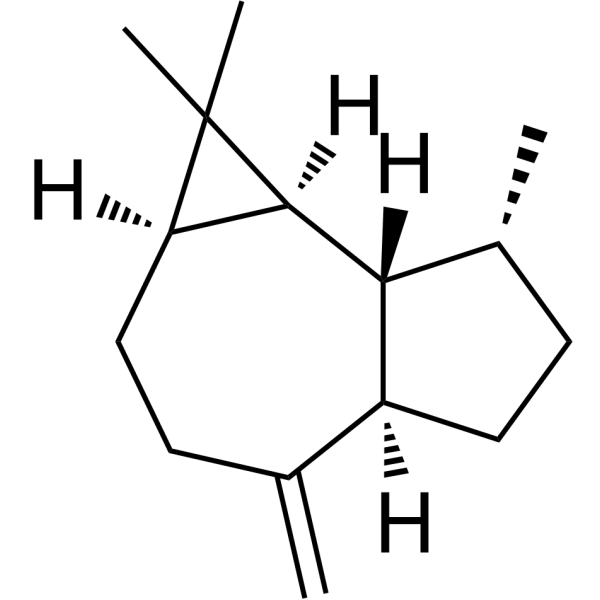
- HY-N6043
-
|
|
Others
|
Inflammation/Immunology
|
|
Hydroxytyrosol acetate is found in the olive oil with an antioxidant activity. Hydroxytyrosol acetate had a weaker DPPH radical scavenging activity than hydroxytyrosol .
|
-
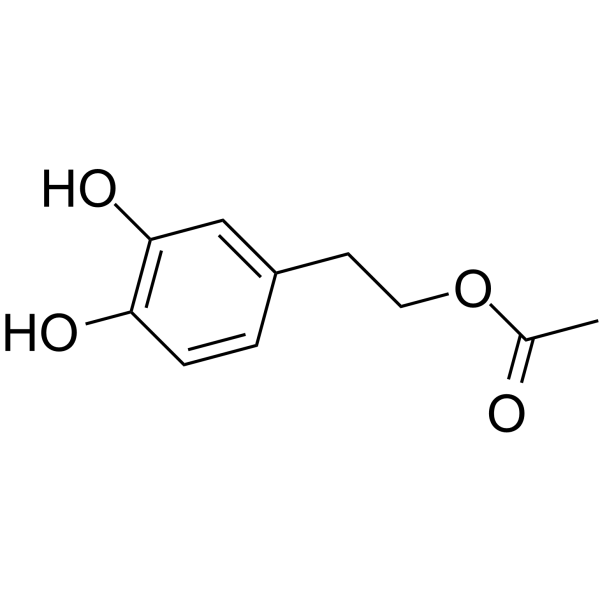
- HY-77995
-
|
o-Anisaldehyde
|
Bacterial
Fungal
|
Infection
|
|
2-Methoxybenzaldehyde (o-Anisaldehyde), isolated from cinnamon essential oil (CEO), exists antibacterial and antifungal activity .
|
-
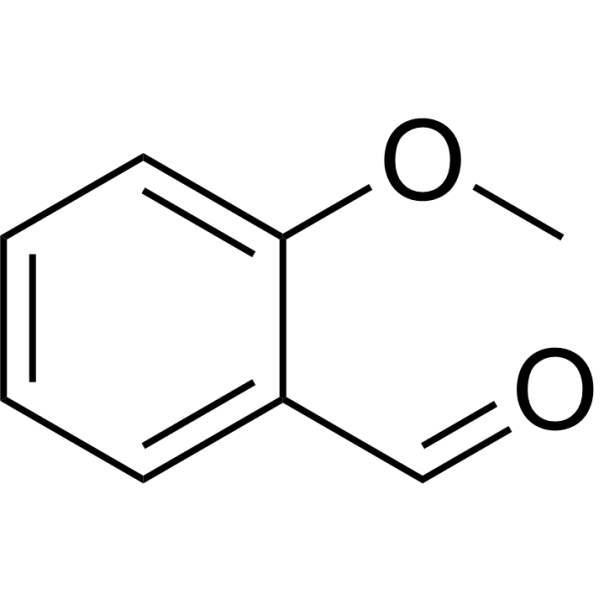
- HY-N9691
-
|
α-Curcumene
|
Others
|
Others
|
|
α-curcumene (compound 12) is isolated from the essential oil of rhizomes of Curcuma aromatica and can be synthesized artificially .
|
-
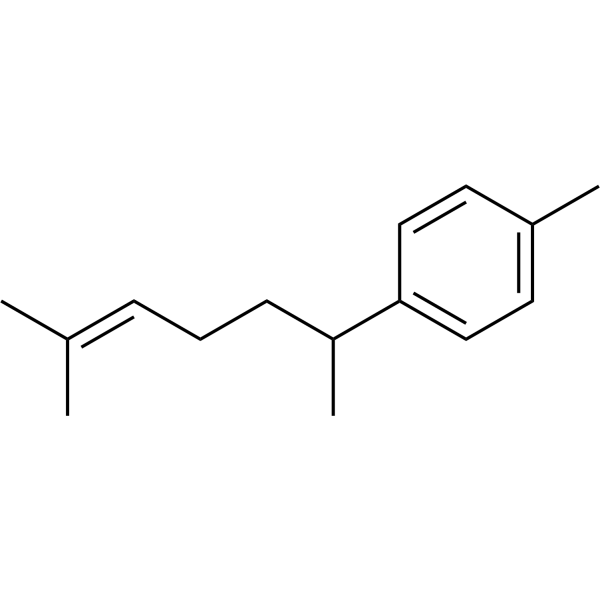
- HY-W651036
-
|
|
Others
|
Others
|
|
2-Caren-10-al is a major component of essential oil derived from C. cyminum L .
|
-
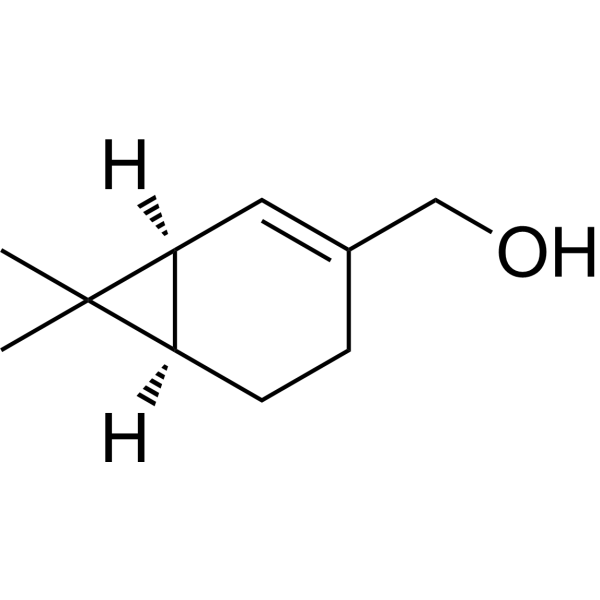
- HY-157734
-
|
|
Others
|
Others
|
|
1,2-Palmitate-3-elaidate is a triglyceride that can be isolated from virgin olive oil .
|
-
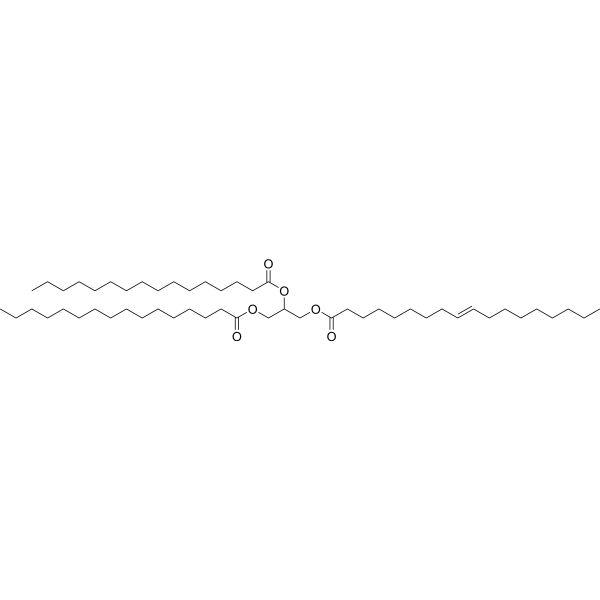
- HY-W099600
-
|
Bisdodecanoic anhydride
|
Biochemical Assay Reagents
|
Others
|
|
Lauric anhydride is a white waxy solid used as an intermediate in the production of various chemicals. It is primarily used in the synthesis of surfactants, emulsifiers, and lubricants, and as a raw material for other important industrial chemicals such as plasticizers and flavoring agents. It can be obtained from natural sources such as palm kernel oil and coconut oil, and its unique chemical structure allows it to be used to create compounds with specific surface and interfacial properties.
|
-

- HY-Y1890
-
|
|
Biochemical Assay Reagents
|
Others
|
|
Cremophor EL, a polyoxyethylene castor oil derivative, is a nonionic surfactant. Cremophor EL is widely employed to improve dissolution and delivery of agents .
|
-

- HY-113362
-
|
|
Endogenous Metabolite
|
Others
|
|
Petroselinic acid, a positional isomer of oleic acid, is isolated from the vegetable oil of Coriandrum sativum fruits. Petroselinic acid is used as substrate for sophorolipid fermentation .
|
-
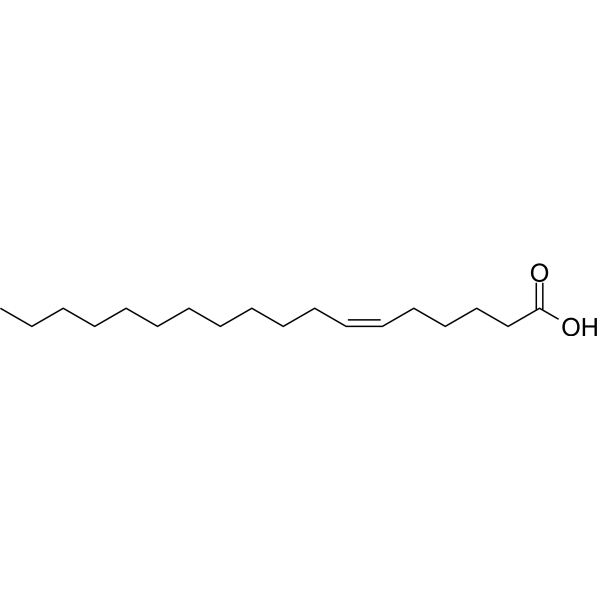
- HY-N3651
-
|
|
Bacterial
|
Infection
|
|
Curzerenone is one of constituents of leaf essential oil extracted from L. pulcherrima. Shows slight inhibitory effective against E. coli .
|
-

- HY-W012999
-
|
|
Endogenous Metabolite
|
Others
|
|
Tiglic acid is a monocarboxylic unsaturated organic acid found in croton oil and in several other natural products. Tiglic aci has a role as a plant metabolite .
|
-
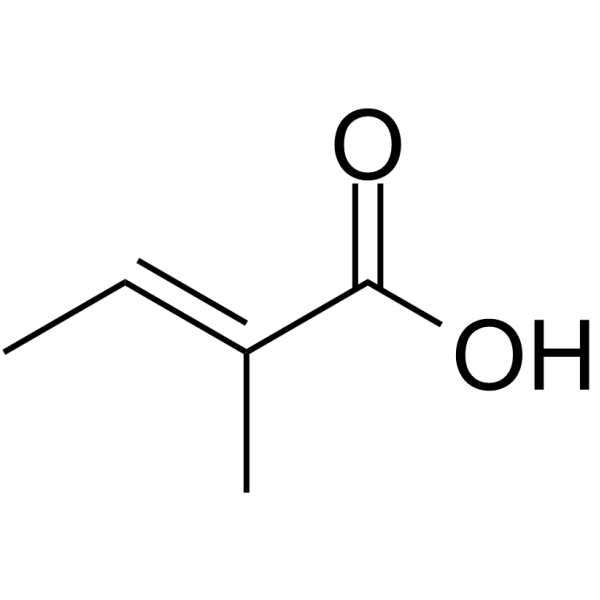
- HY-N0308
-
|
|
Others
|
Infection
|
|
Octyl acetate is one of major components of essential oils in the vittae, or oil tubes, of the wild parsnip (Pastinaca sativa). Octyl acetate has antioxidant activity .
|
-
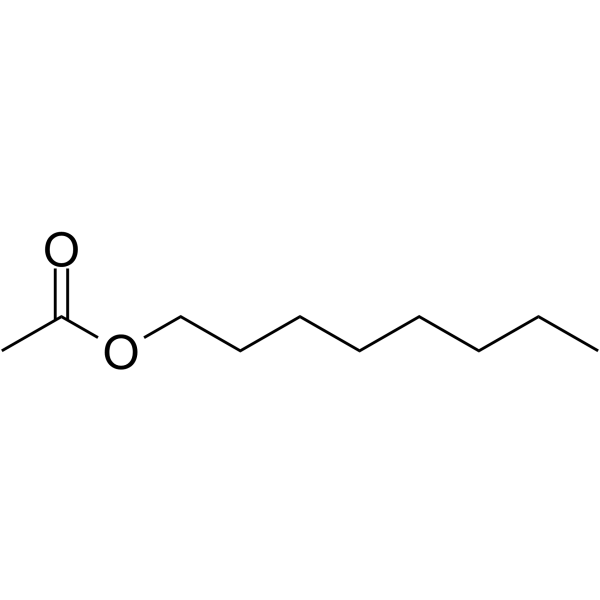
- HY-134900
-
-
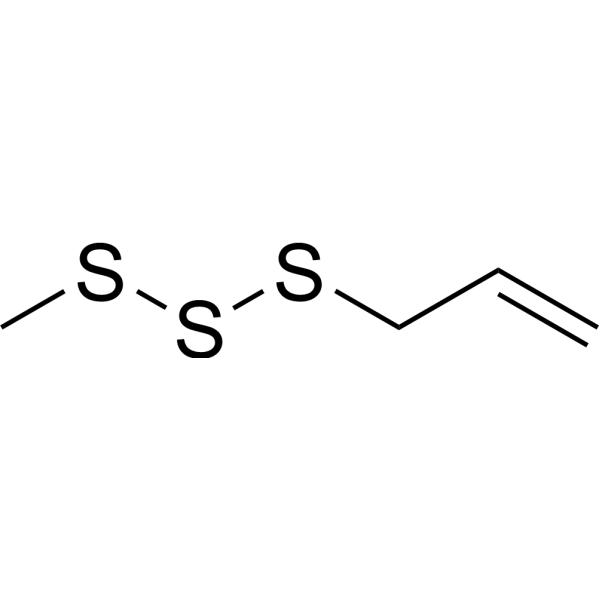
- HY-B2167
-
|
DHA; Cervonic acid
|
Endogenous Metabolite
|
Neurological Disease
|
|
Docosahexaenoic Acid (DHA) is an omega-3 fatty acid abundantly present brain and retina. It can be obtained directly from fish oil and maternal milk.
|
-
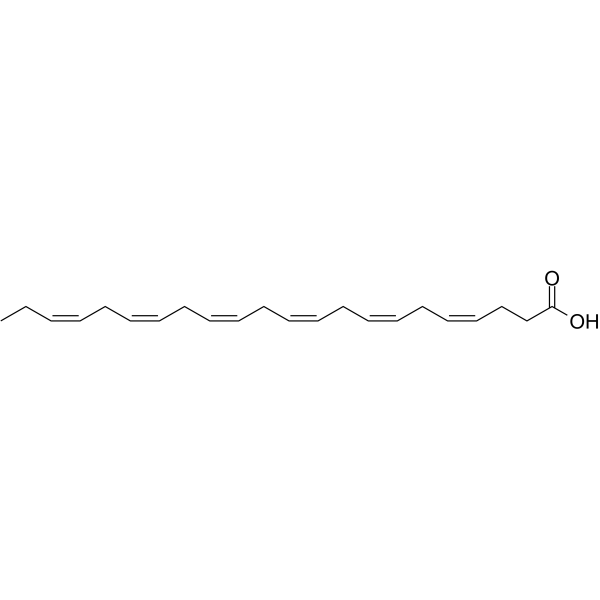
- HY-N7063
-
-
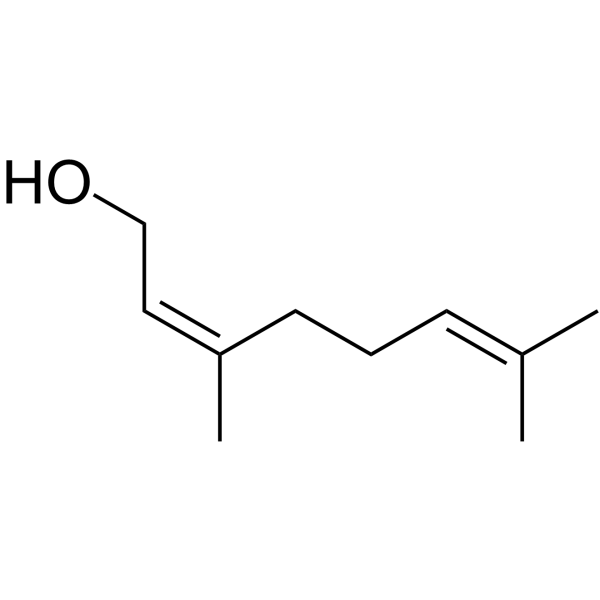
- HY-113878
-
-
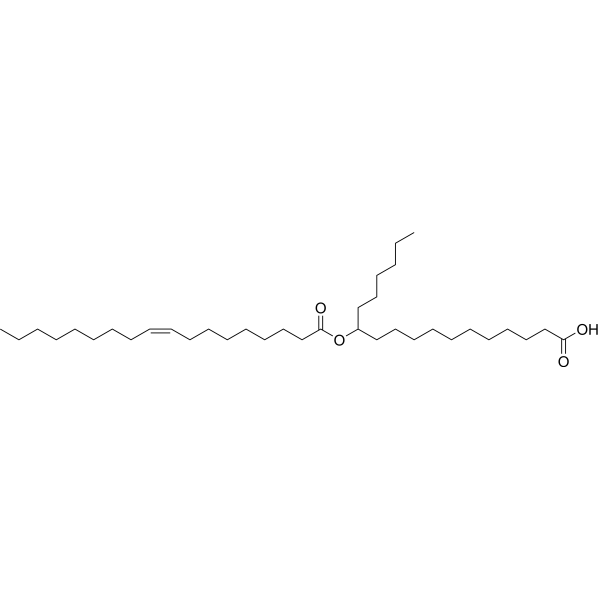
- HY-N0337S
-
-
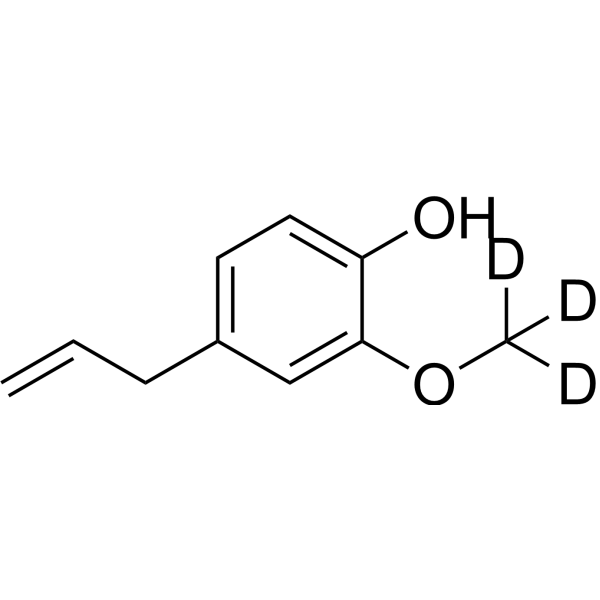
- HY-119546
-
|
PNLA
|
Others
|
Inflammation/Immunology
|
|
Pinolenic acid (PNLA) is a polyunsaturated fatty acid that can be isolated from Pinus orientalis and Pinus pinaster seed oil. Pinolenic acid has anti-inflammatory and lipid-lowering activities .
|
-
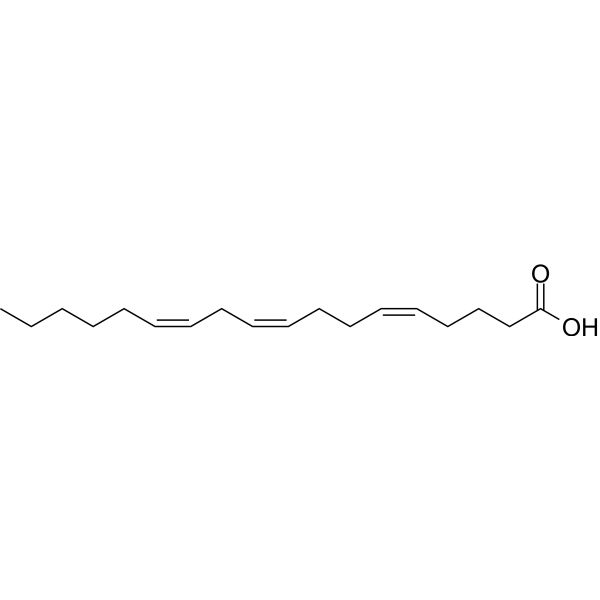
- HY-N1952
-
|
iso-Eugenol
|
|
|
|
Isoeugenol is an essential oil constituent of nutmeg, clove, and cinnamon. Isoeugenol inhibits growth of Escherichia coli and Listeria innocua with MICs of 0.6 mg/mL and 1 mg/mL, respectively .
|
-

- HY-N7494
-
|
|
Others
|
Cancer
|
|
Pentacosane is one of the major components in the acetone extract from Curcuma raktakanda and is also in the essential oil from the leaves of Malus domestica. Pentacosane exhibit anti-cancer activities .
|
-

- HY-N7813
-
|
|
Others
|
Others
|
|
1,2-Dipalmitoyl-3-oleoylglycerol, a major P-containing triacylglycerol, can be found in palm oil, palm stearin, cocoa butter, and lard .
|
-
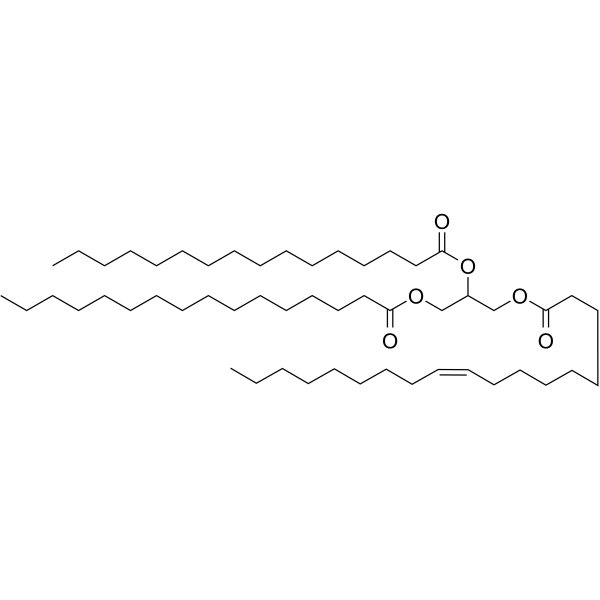
- HY-W250151
-
|
|
Fluorescent Dye
|
Others
|
|
Leishman's stain is an essential staining tool for for staining of the peripheral blood and bone marrow smears (displayed pale bluish-grey to deep blue under oil-immersion lens) .
|
-

- HY-126573R
-
|
|
Others
|
Cancer
|
|
Trilaurin (Standard) is the analytical standard of Trilaurin. This product is intended for research and analytical applications. Trilaurin could inhibit the formation of neoplasms initiated by dimethylbenzanthracene (DMBA) and promoted by croton oil .
|
-
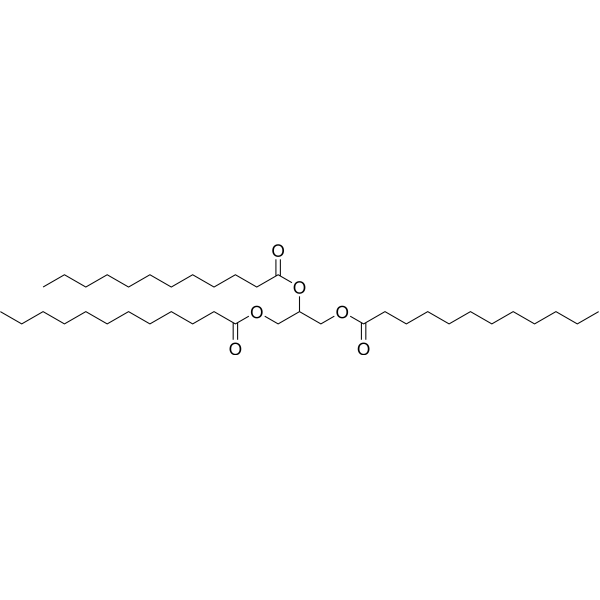
- HY-N7000
-
-

- HY-14618
-
|
α-Zingiberene; (-)-Zingiberene
|
Autophagy
|
Cancer
|
|
Zingiberene (α-Zingiberene) is a monocyclic sesquiterpene which is the predominant constituent of ginger with oil content (Zingiber officinale). Neuroprotective potential . Zingiberene triggers autophagy. Anticancer activity .
|
-

- HY-N0121
-
Sesamin
5 Publications Verification
|
Others
|
Neurological Disease
|
|
Sesamin, abundant lignan found in sesame oil, is a potent and selective delta 5 desaturase inhibitor in polyunsaturated fatty acid biosynthesis. Sesamin exerts effective neuroprotection against cerbral ischemia .
|
-
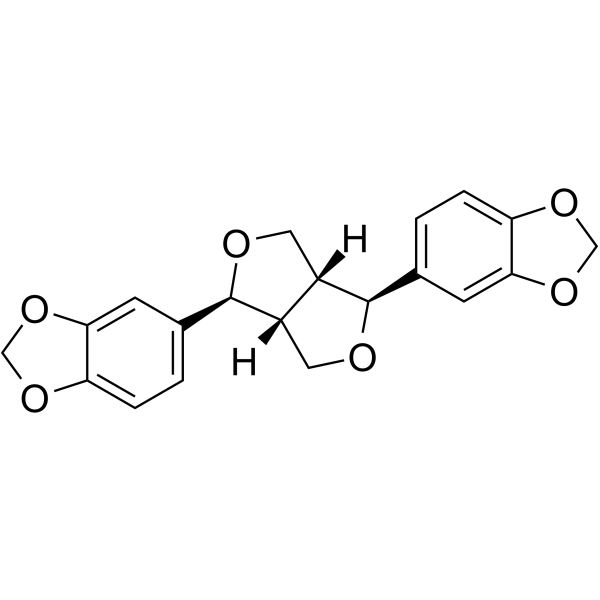
- HY-D0140
-
|
ETH 5294
|
Fluorescent Dye
|
Others
|
|
Chromoionophore I (ETH 5294) is a hydrophobic pH indicator. Chromoionophore I is used as a transmissive or fluorescent probe molecule in many types of hydrophobic sensor membranes. Chromoionophore I is oil-soluble .
|
-
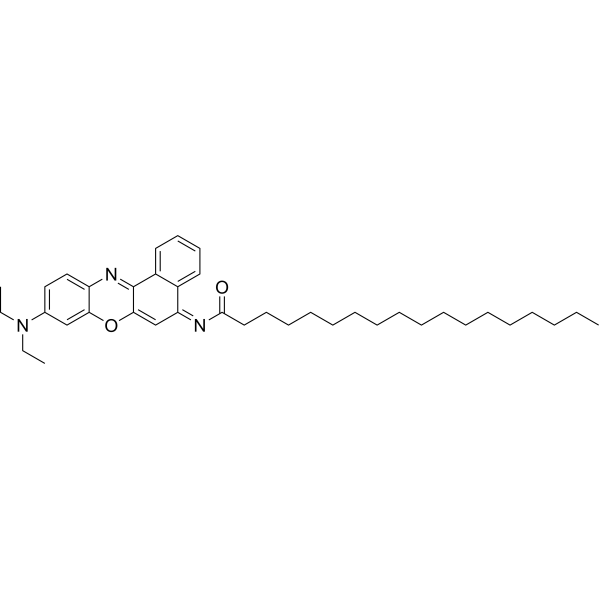
- HY-111664
-
|
(+)-Citronellal
|
Endogenous Metabolite
|
Metabolic Disease
|
|
(R)-(+)-Citronellal, isolated from citrus, lavender and eucalyptus oils, is a monoterpenoid and main component of citronellal oil with a distinct lemon scent. A flavouring agent. Used for insect repellent and antifungal properties .
|
-
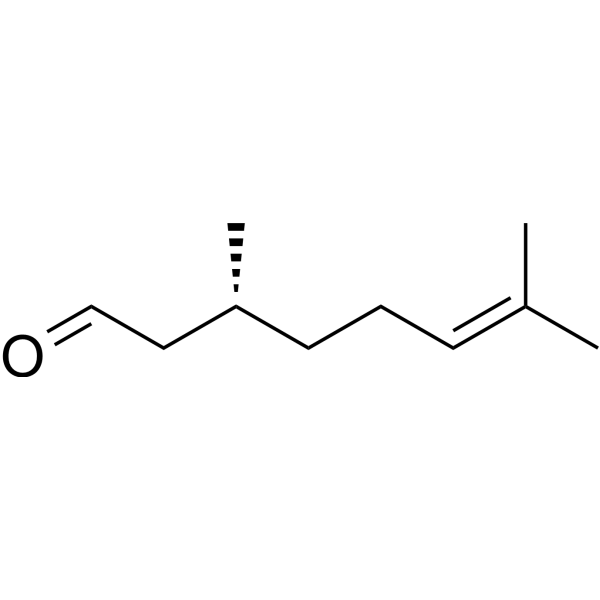
- HY-41094
-
|
(1S,4R)-p-Mentha-2,8-dien-1-ol
|
|
|
|
cis-Isolimonenol ((1S,4R)-p-Mentha-2,8-dien-1-ol) is a chemical composition of essential oil .
|
-

- HY-123026
-
|
|
Bacterial
|
Infection
|
|
Salannin, a limonoid bitter principle of the seed oil of Azadirachta indica, shows antiulcer and spermicidal activities. Salannin displays antibacterial activity towards both Gram-positive and Gram-negative bacteria .
|
-
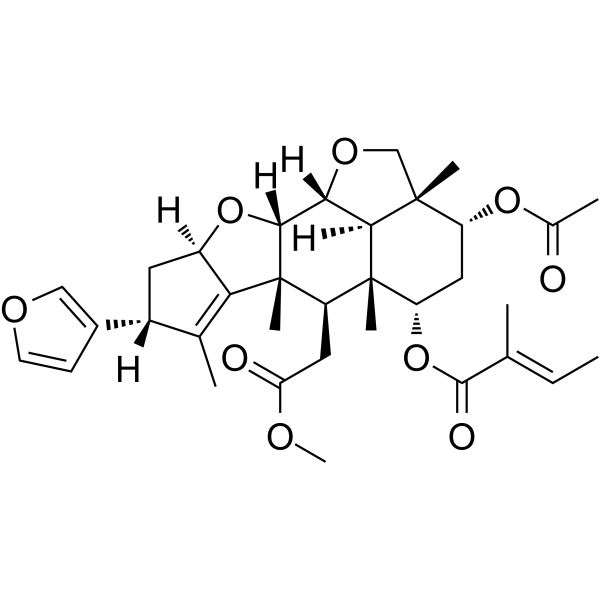
- HY-N2419
-
|
|
Endogenous Metabolite
|
Metabolic Disease
|
|
Erythrodiol is an olive oil component. Erythrodiol promotes Cholesterol efflux (ChE) by selectively inhibiting the degradation of ABCA1 protein. Erythrodiol is a good candidate to be further explored for therapeutic or preventive application in the context of atherosclerosis .
|
-
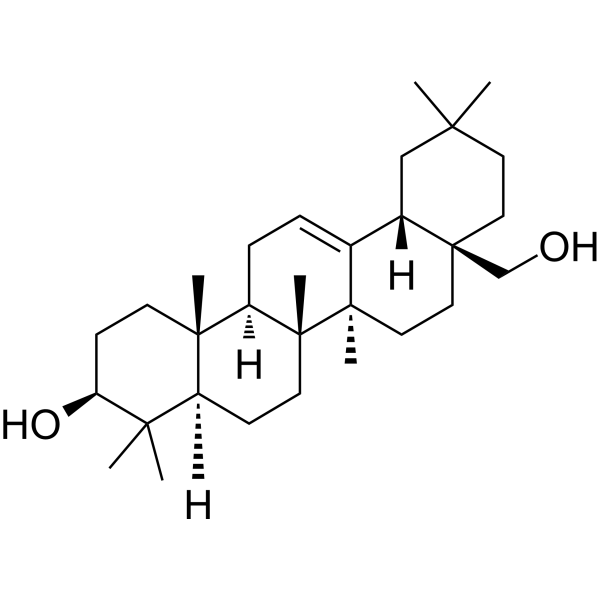
- HY-N2109
-
|
|
Others
|
Metabolic Disease
|
|
Macranthoidin A is an orally active saponin from Flos Lonicerae. Macranthoidin A possess protection effects on hepatic injury caused by Acetaminophen, Cd, and CCl4, and conspicuous depressant effects on swelling of ear croton oil .
|
-
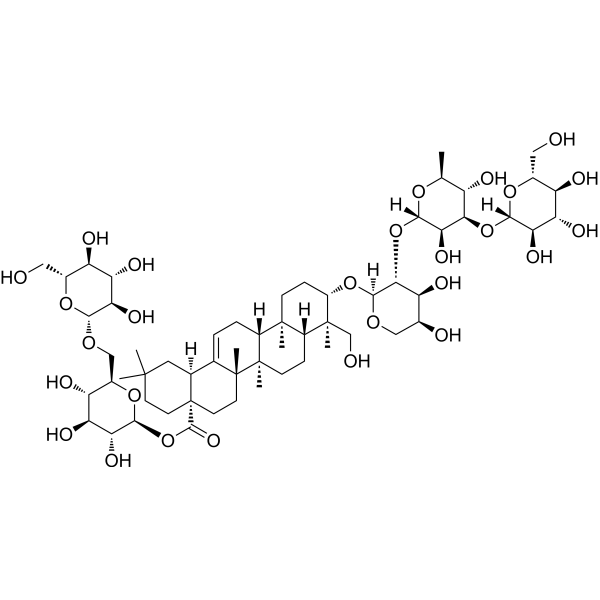
- HY-121388
-
|
(+)-Ledol
|
Fungal
|
Infection
|
|
Ledol ((+)-Ledol) is an antifungal agent that can be isolated from the essential oil fractions of Rhododendron tomentosum. Ledol is also the expectorant and antitussive agent, which is simultaneously responsible for adverse reactions such as dizziness, nausea and vomiting .
|
-

- HY-112006
-
|
(+)-alpha-Curcumene
|
Others
|
Others
|
|
(S)-ar-Curcumene ((+)-alpha-Curcumene) is a natural compound. (S)-ar-Curcumene is a constituent of the essential oil that can isolated from the rhizomes of Curcuma aromatica and is an odour component of distantly related corals .
|
-
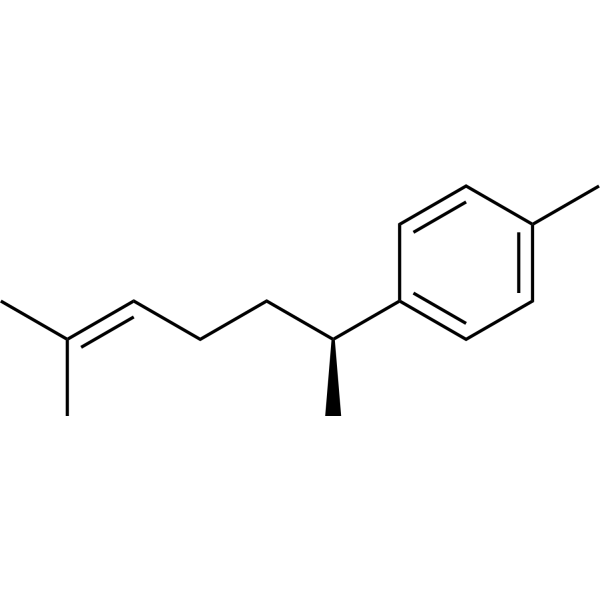
- HY-N7085
-
|
5,7-Dimethoxycoumarin; Limettin
|
Others
|
Cancer
|
|
Citropten (5,7-Dimethoxycoumarin) is a coumarin isolated from bergamot oil. Citropten (5,7-Dimethoxycoumarin) has an antiproliferative activity against A2058 human melanoma cell line .
|
-
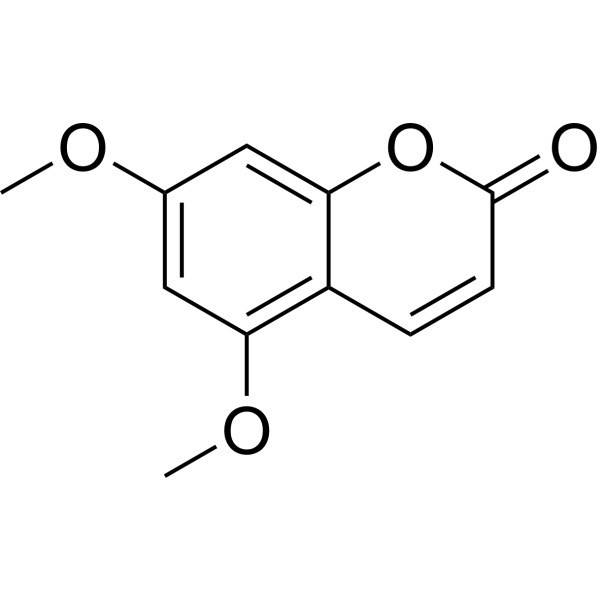
- HY-W004297
-
|
|
Others
|
Others
|
|
1-Nonadecanol is one of the compositions of supercritical carbon dioxide (SC-CO2) essential oil of Heracleum thomsonii. 1-Nonadecanol is also an important aroma compound in Neotinea ustulata .
|
-

- HY-W011120
-
|
|
Others
|
Metabolic Disease
|
|
Ethyl cis-4,7,10,13,16,19-Docosahexaenoate, the ethyl ester of Docosahexaenoate (DHA), is enriched in the ethyl ester fraction by the selective alcoholysis of fatty acid ethyl esters originating from tuna oil with lauryl alcohol.
|
-

- HY-N6968
-
|
Humulene; α-Caryophyllene
|
NO Synthase
COX
|
Inflammation/Immunology
|
|
α-Humulene is a main constituent of Tanacetum vulgare L. (Asteraceae) essential oil with anti-inflammation (IC50=15±2 µg/mL). α-Humulene inhibits COX-2 and iNOS expression .
|
-

- HY-N5060
-
|
4-Allylanisole
|
Parasite
|
Neurological Disease
|
|
Estragole (4-Allylanisole), a relatively nontoxic volatile terpenoid ether, is a major component of the essential oil of many plants. Estragole dose-dependently blocks nerve excitability . Estragole displays anti-toxoplasma activity .
|
-

- HY-B1796
-
|
|
|
|
|
Thymol iodide is a compound of Iodide and Thymol. Thymol iodide acts as a substitute for iodoform . Thymol iodide is an iodine derivative of Thymol (a phenol derived from thyme oil), which is mostly used as mild antiseptic and fungicide .
|
-
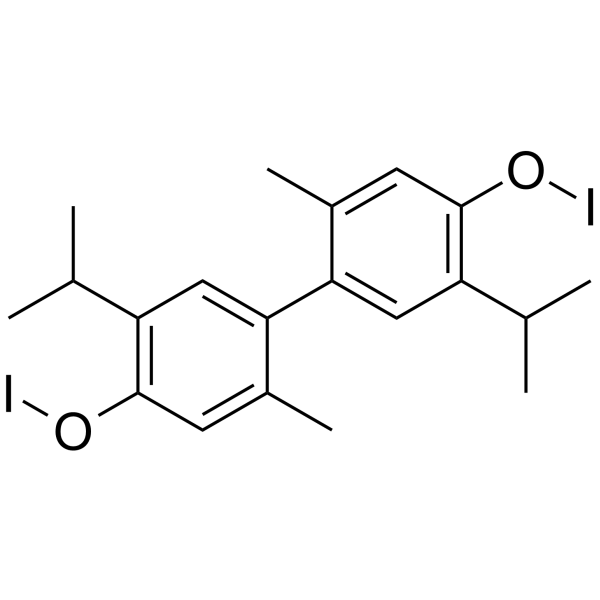
- HY-B2167S
-
|
DHA-d5; Cervonic acid-d5
|
Endogenous Metabolite
|
Neurological Disease
|
|
Docosahexaenoic acid-d5 is the deuterium labeled Docosahexaenoic Acid. Docosahexaenoic Acid (DHA) is an omega-3 fatty acid abundantly present brain and retina. It can be obtained directly from fish oil and maternal milk.
|
-
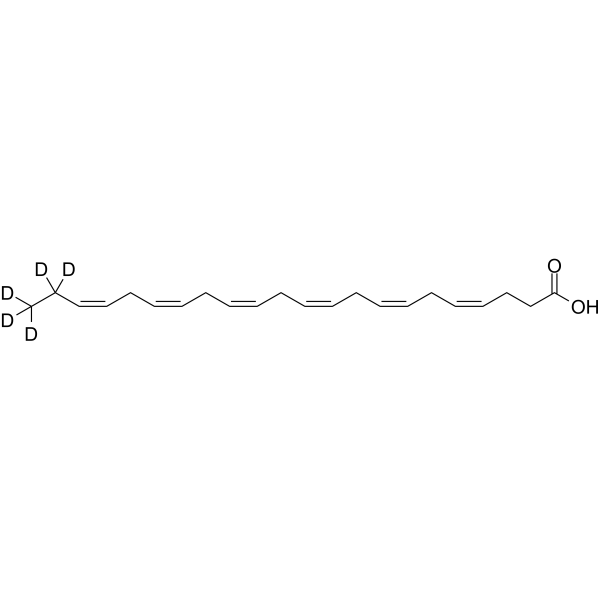
- HY-W015482
-
|
|
Others
|
Others
|
|
Isoamyl butyrate is a natural compound that can be isolated from the fruit of Heracleum .
|
-

- HY-N1417
-
Sesamol
1 Publications Verification
|
|
|
|
Sesamol is a constituent of sesame oil. Sesamol shows a free radical scavenging activity. Sesamol shows an IC50=5.95±0.56 μg/mL in the DPPH assay. Anti-oxidant activities . Anticancer activities .
|
-
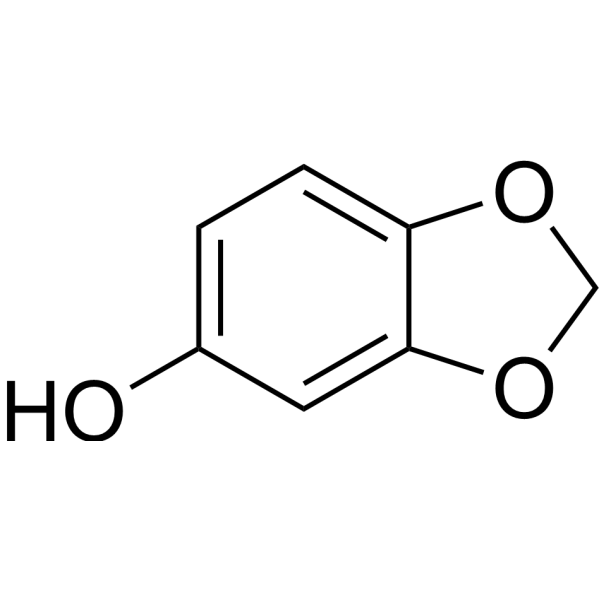
- HY-N2059
-
|
|
|
|
|
Santalol is a mixture of α and β-isomer santalol. α-santalol is isolated from sandalwood oil. α-santalol is a promising anti-cancer agent against cancers such as oral, breast, prostate and skin cancer .
|
-

- HY-75161
-
|
|
TRP Channel
Endogenous Metabolite
|
Cancer
|
|
(-)-Menthol is a key component of peppermint oil that binds and activates transient receptor potential melastatin 8 (TRPM8), a Ca 2+-permeable nonselective cation channel, to increase [Ca 2+]i . Antitumor activity .
|
-

- HY-N7364
-
|
trans-β-Farnesene
|
Fungal
|
Infection
Cancer
|
|
(E)-β-Farnesene (trans-β-Farnesene) is a volatile sesquiterpene hydrocarbon which can be found in Phlomis aurea Decne essential oil. (E)-β-Farnesene can be used as a feeding stimulant for the sand fly Lutzomyia longipalpis .
|
-

- HY-151930
-
|
8'-OH-ABA
|
Drug Metabolite
|
Metabolic Disease
|
|
8′-Hydroxy ABA (8'-OH-ABA) is a principal catabolite of abscisic acid (ABA). 8′-Hydroxy ABA has hormonal activity and leads to increased oil synthesis. 8′-Hydroxy ABA is a labile compound .
|
-
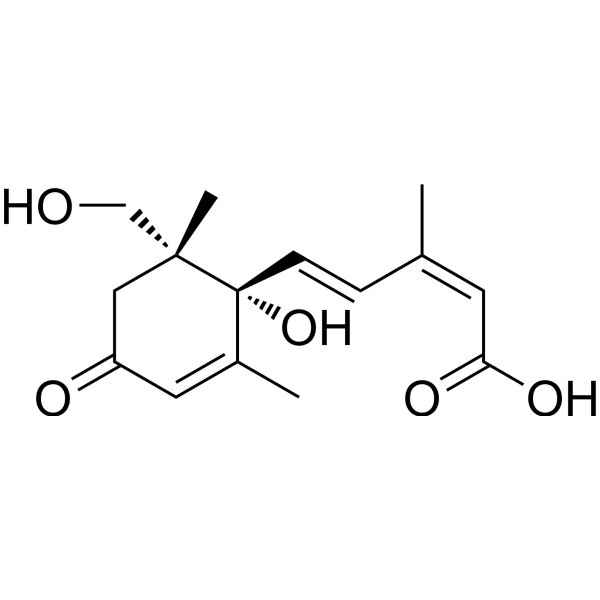
- HY-77995S
-
|
o-Anisaldehyde-d3
|
Fungal
Bacterial
|
Infection
|
|
2-Methoxybenzaldehyde-d3 is the deuterium labeled 2-Methoxybenzaldehyde[1]. 2-Methoxybenzaldehyde (o-Anisaldehyde), isolated from cinnamon essential oil (CEO), exists antibacterial and antifungal activity[2].
|
-
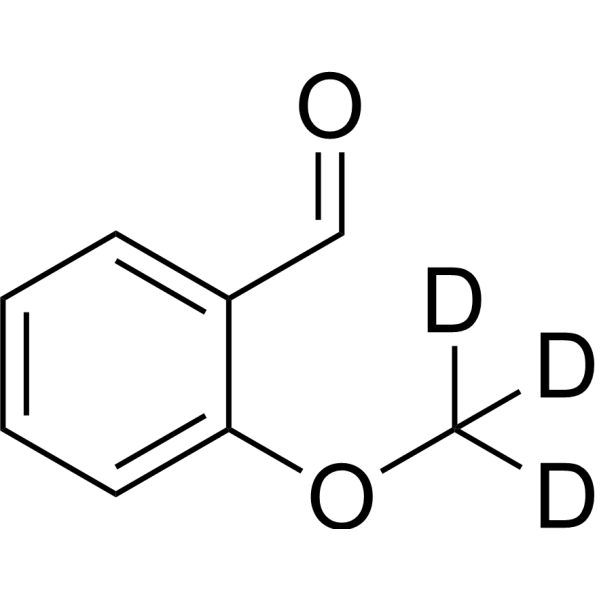
- HY-N7063R
-
-
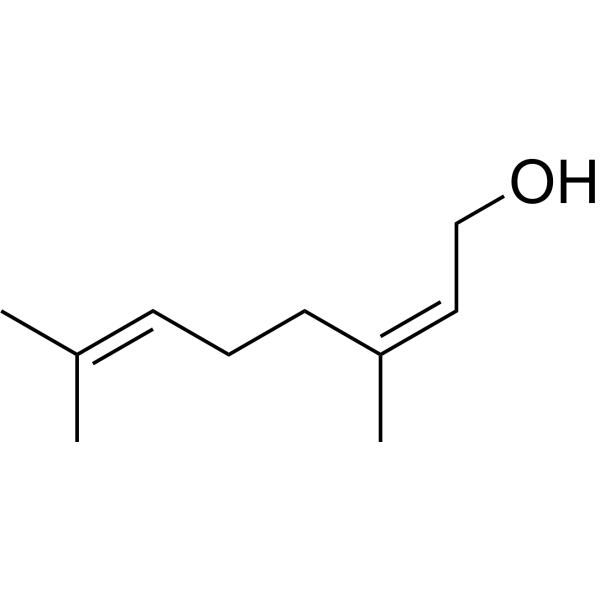
- HY-N7513
-
|
|
Drug Metabolite
|
Cardiovascular Disease
|
|
Homovanillyl alcohol is a biological metabolite of Hydroxytyrosol. Hydroxytyrosol is a phenolic compound that is present in virgin olive oil (VOO) and wine. Homovanillyl alcohol protects red blood cells (RBCs) from oxidative injury and has protective effect on cardiovascular disease .
|
-
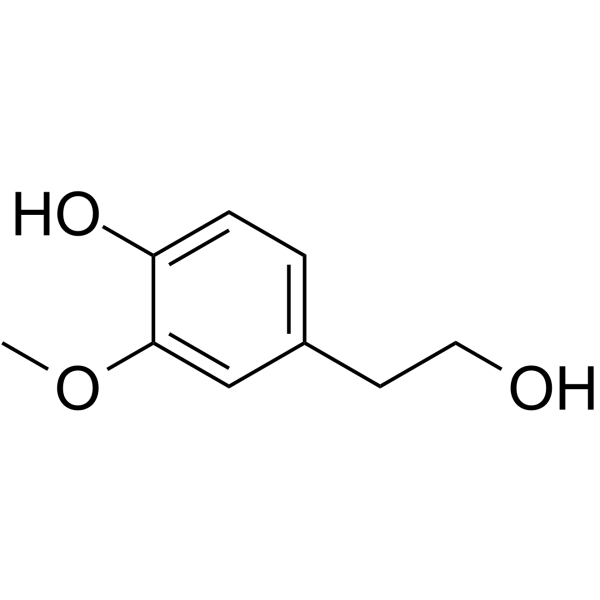
- HY-N3074
-
|
6,10,14-Trimethyl-2-pentadecanone
|
Bacterial
|
Infection
Inflammation/Immunology
|
|
Hexahydrofarnesyl acetone (6,10,14-Trimethyl-2-pentadecanone), a sesquiterpene isolated from Impatiens parviflora, is the major constituents of the essential oil. Hexahydrofarnesyl acetone has antibacterial, anti-nociceptive and anti-inflammation activities .
|
-
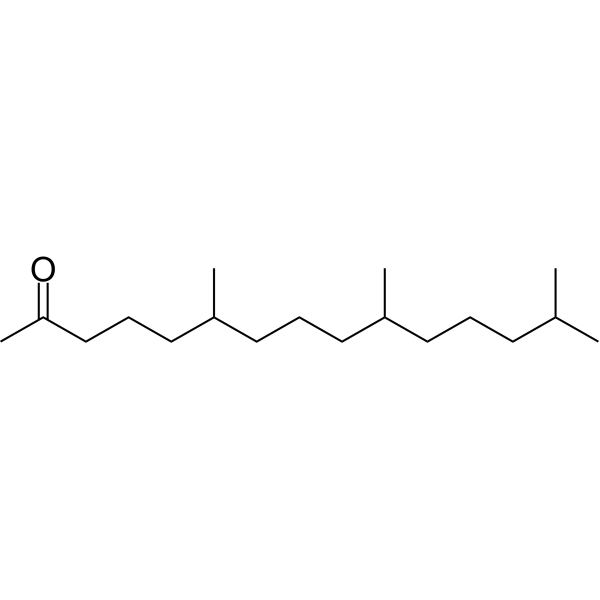
- HY-W008039
-
|
Tetra-n-butylammonium acetate
|
Biochemical Assay Reagents
|
Others
|
|
Tetrabutylammonium acetate is an organic compound commonly used as a catalyst and solvent. It can be used to catalyze or promote reactions in certain organic reactions, and is widely used in batteries, solar cells and pigments. In addition, this compound is widely used in the oil and gas industry, for example as a carbonate dissolver.
|
-

- HY-N7916
-
|
|
Others
|
Others
|
|
(-)-Menthone is a monoterpene component of the essential oil of maturing peppermint. (+)-Neomenthyl-β-d-glucoside is a metabolite of (-)-Menthone .Mortality of two biological forms of Anopheles stephensi(larvae) exposed to about 45 ppm (-)-Menthone is 27.67% and 94.92%.
|
-

- HY-121206
-
|
|
Antibiotic
|
Infection
|
|
(-)-Isopulegol is prepared directly from the treatment of essential oil of citronella under solid supported acid catalysis and solvent-free microwave assisted ene-cyclisation. (-)-Isopulegol shows high activity in reacting with carbonyl compounds. (-)-Isopulegol can be used for antiviral activity research .
|
-
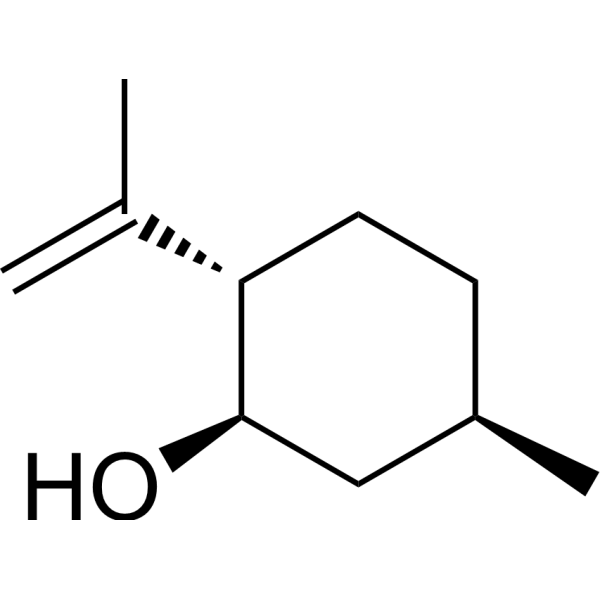
- HY-N7494S
-
|
|
Isotope-Labeled Compounds
|
Cancer
|
|
Pentacosane-d52 is the deuterium labeled Pentacosane[1]. Pentacosane is one of the major components in the acetone extract from Curcuma raktakanda and is also in the essential oil from the leaves of Malus domestica. Pentacosane exhibit anti-cancer activities[2].
|
-

- HY-N10866
-
|
|
Others
|
Cancer
|
|
Phorbol 12-tiglate is a derivative of Phorbol (HY-N2147). Phorbol, a hydrolyzed product of Croton oil, promotes tumor development by activating protein kinase C. Phorbol and its derivatives can be used to construct carcinogenic models in biomedical research .
|
-
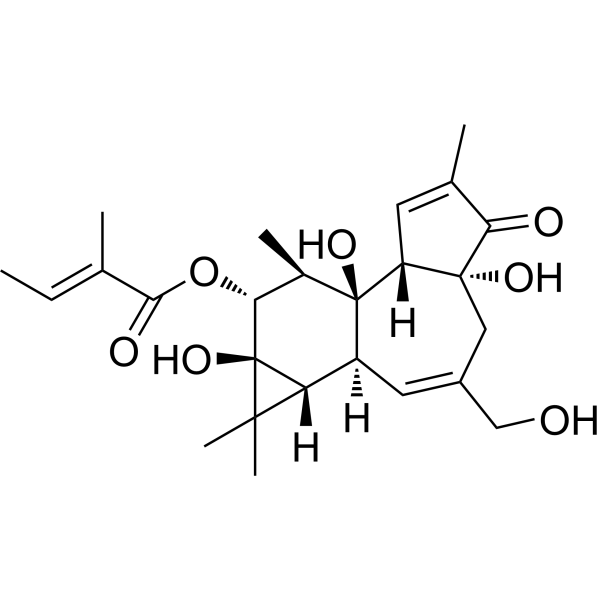
- HY-N7148
-
|
D-γ-Tocopherol; (+)-γ-Tocopherol
|
COX
Endogenous Metabolite
|
Inflammation/Immunology
Cancer
|
|
γ-Tocopherol (D-γ-Tocopherol) is a potent cyclooxygenase (COX) inhibitor. γ-Tocopherol is a naturally occurring form of Vitamin E in many plant seeds, such as corn oil and soybeans. γ-Tocopherol possesses antiinflammatory properties and anti-cancer activity .
|
-
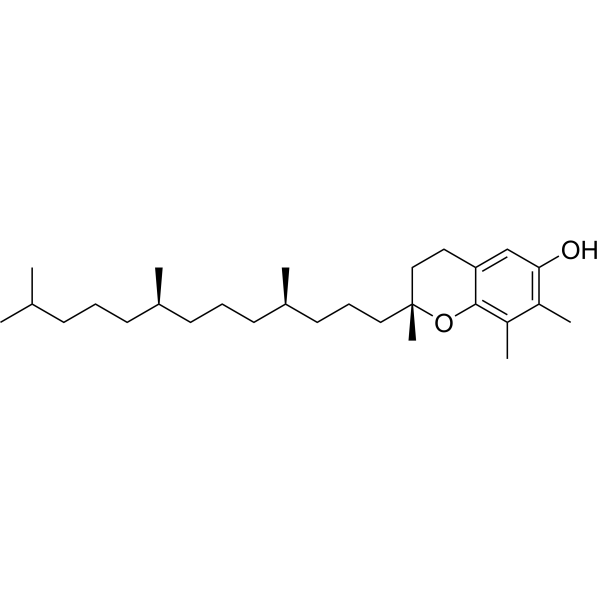
- HY-N7113S
-
|
|
Isotope-Labeled Compounds
|
Cancer
|
|
Squalane-d62 is the deuterium labeled Squalane[1]. Squalane, found in certain fish oils (especially shark liver oil), and some vegetable oils, is a saturated derivative of Squalene. Squalane shows anticancer, antioxidant, skin hydrating, and emollient activities[2].
|
-
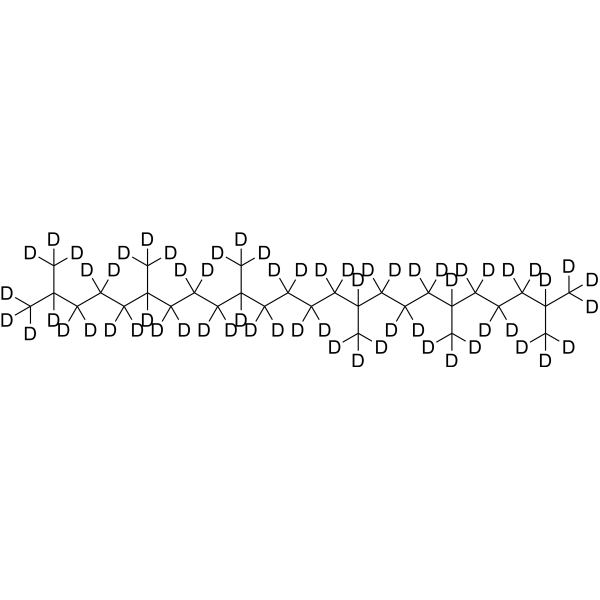
- HY-N7398
-
|
|
Others
|
Others
|
|
2-Pentylfuran is the compound isolated from steam volatile oils obtained from potatoes at atmospheric pressure .
|
-

- HY-N12515
-
|
|
Others
|
Metabolic Disease
|
|
Pinuseldarone (compound 1), extracted from Pinus eldarica needles regulats brown adipogenesis and thermogenesis .
|
-
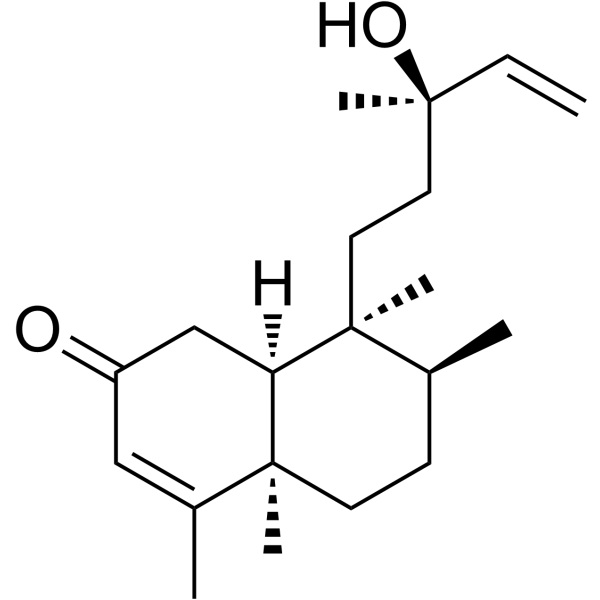
- HY-Y0543
-
|
|
|
|
|
5-Methylfurfural is a naturally occurring substance, found in cigarette smoke condensate, licorice essential oil, stored dehydrated orange powder, baked potato flour, volatile compounds of roast beef, aroma concentrate of sponge cake. bread and in coffee, tea and cocoa . A flavoring agent.
|
-
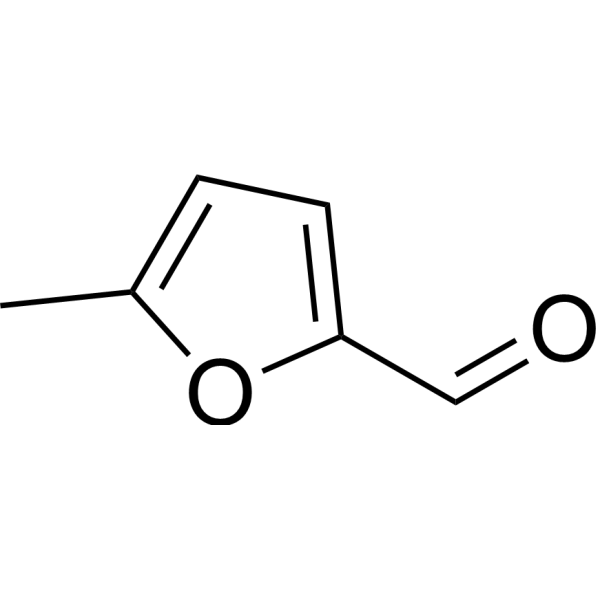
- HY-124257
-
|
D-Citronellol; (R)-(+)-β-Citronellol
|
Endogenous Metabolite
|
Inflammation/Immunology
|
|
(R)-Citronellol (D-Citronellol) is an alcoholic monoterpene found in geranium essential oil. (R)-Citronellol inhibits degranulation of mast cells and does not affect caffeine bitterness perception. (R)-Citronellol can be used in decorative cosmetics, toiletries as well as in non-cosmetic products .
|
-
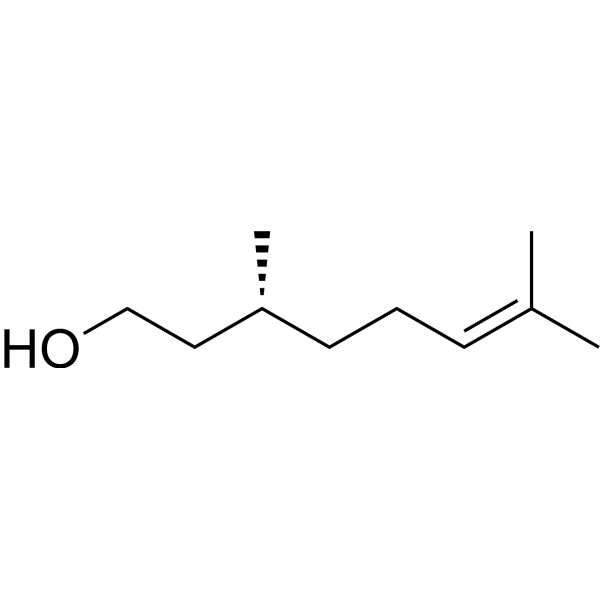
- HY-N7136
-
|
|
Cytochrome P450
|
Metabolic Disease
|
|
α-Terpinyl acetate is a monoterpene ester isolated from Laurus nobilis L. essential oil. α-Terpinyl acetate is a competitive P450 2B6 substrate which binding to the active site of P450 2B6 with a Kd value of 5.4 μM .
|
-
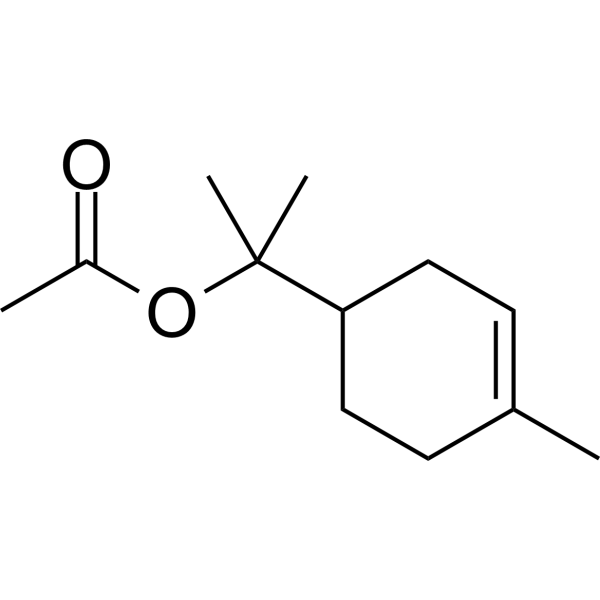
- HY-148701
-
|
|
Liposome
|
Cancer
|
|
mono-Pal-MTO is a palm oil-based lipid produced by combining the anticancer agent mitoxantrone (MTO) with palmitoleic acid. When nanoparticles of mono-Pal-MTO and di-Pal-MTO are combined in a molar ratio of 1:1, they show effective siRNA cell delivery and enhance anticancer activity .
|
-
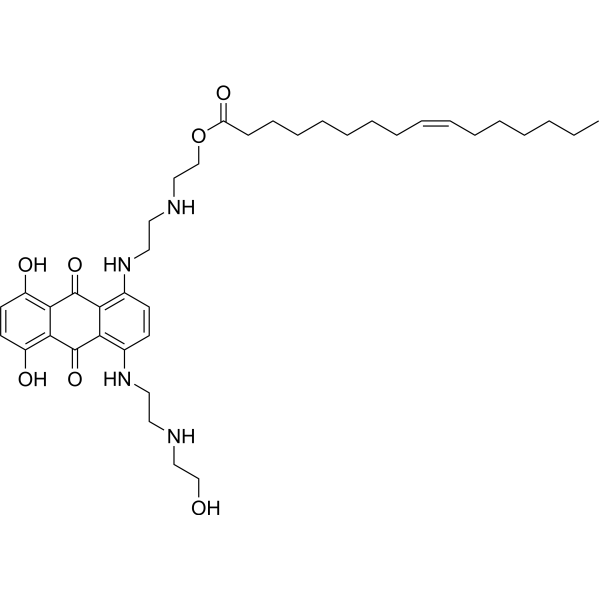
- HY-148702
-
|
|
Liposome
|
Cancer
|
|
di-Pal-MTO is a palm oil-based lipid produced by combining the anticancer agent mitoxantrone (MTO) with palmitoleic acid. When nanoparticles of mono-Pal-MTO and di-Pal-MTO are combined in a molar ratio of 1:1, they show effective siRNA cell delivery and enhance anticancer activity .
|
-
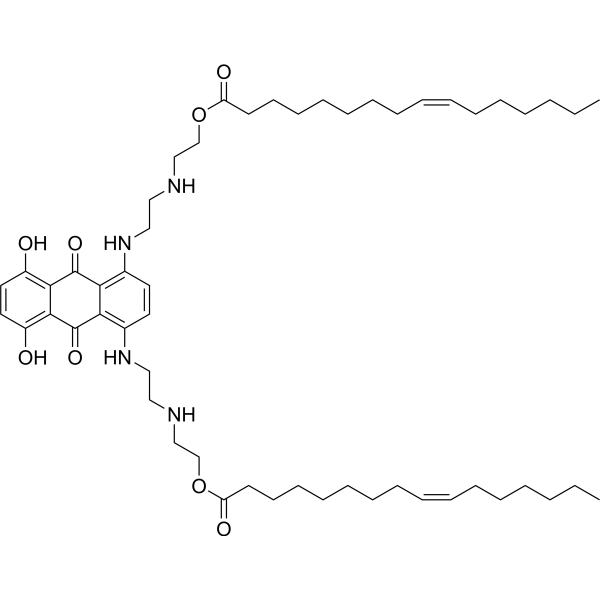
- HY-N1416
-
|
|
|
|
|
Pogostone is isolated from patchouli oil with anti-bacterial and anti-cancer activities. Pogostone inhibits both gram negative and gram positive bacteria, also show inhibitory effect on corynebacterium xerosis with a MIC value of 0.098 µg/ml . Pogostone induces cell apoptosis and autophagy .
|
-
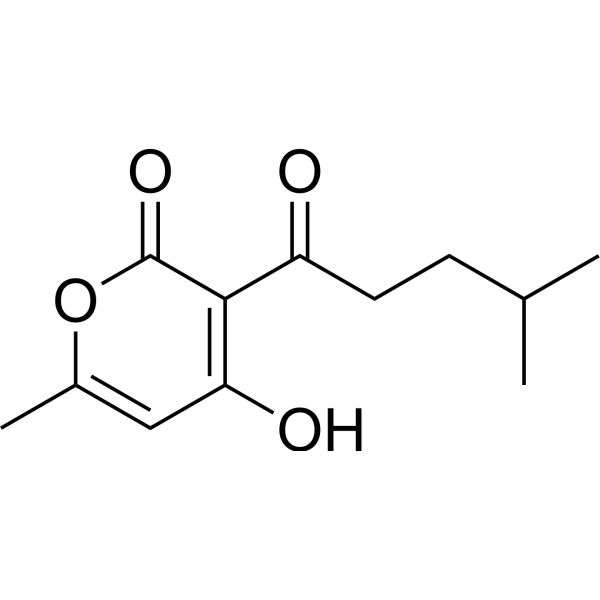
- HY-152899
-
|
|
Endogenous Metabolite
|
Cardiovascular Disease
|
|
Selachyl alcohol is an orally active antihypertensive agent. Selachyl alcohol has similar activities with antihypertensive neutral renomedullary lipid (ANRL). Selachyl alcohol is an alkylglycerol compound in shark liver oil mixture with properties that reduce lung metastasis. Selachyl alcohol can be used for cardiovascular disease research .
|
-
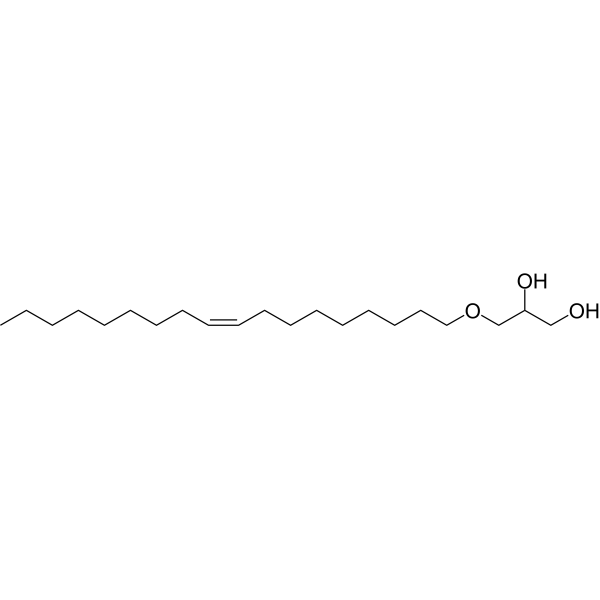
- HY-B2167S1
-
|
|
Endogenous Metabolite
|
|
|
Docosahexaenoic acid- 13C22 is the 13C labeled Docosahexaenoic acid[1]. Docosahexaenoic Acid (DHA) is an omega-3 fatty acid abundantly present brain and retina. It can be obtained directly from fish oil and maternal milk[2][3][4][5][6].
|
-
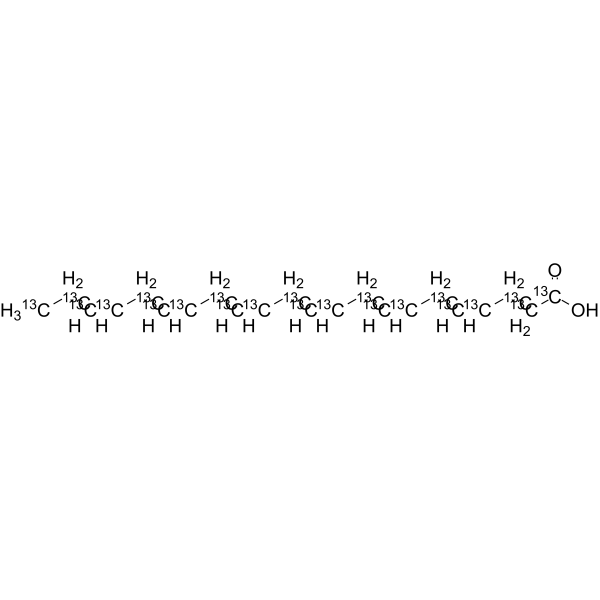
- HY-W087919
-
|
5-Methylfurfuryl alcohol
|
Others
|
Others
|
|
5-Methyl-2-furanmethanol is a natural product that can be isolated from the essential oil of D. rupicola Biv.. 5-Methyl-2-furanmethanol also acts as a oxidative product of 2,5 dimethylfuran (DMF) by cytochrome P450 (CYP) .
|
-
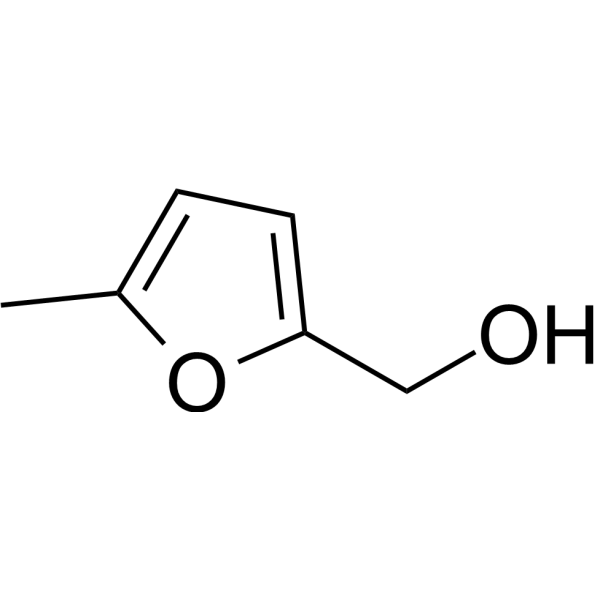
- HY-Y0189
-
|
Salicylic acid methyl ester
|
COX
|
Inflammation/Immunology
|
|
Methyl Salicylate (Wintergreen oil) is a topical analgesic and anti-inflammatory agent. Also used as a pesticide, a denaturant, a fragrance ingredient, and a flavoring agent in food and tobacco products . A systemic acquired resistance (SAR) signal in tobacco . A topical nonsteroidal anti-inflammatory agent (NSAID). Methyl salicylate lactoside is a COX inhibitor .
|
-
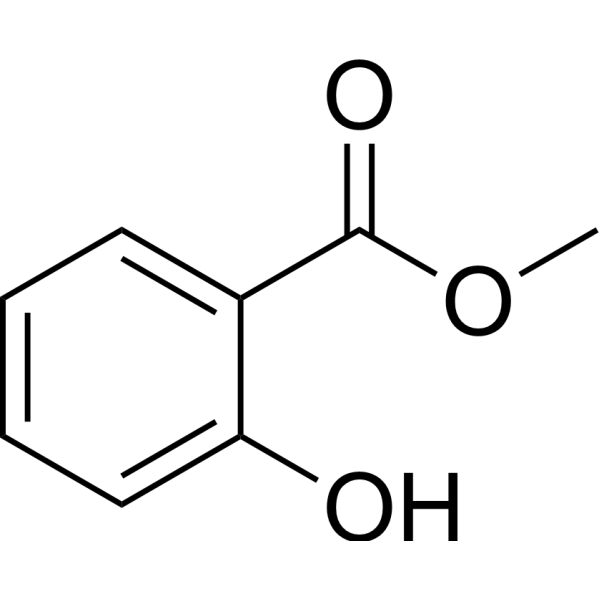
- HY-N11653
-
|
KM 01
|
Others
|
Others
|
|
Bipolal (KM 01) is a natural product isolated from the culture fluid of bipolar algae (Bipolaris sp.). It has a bipolar structure and can form a surfactant between water and oil, so it has excellent Anti-pollution properties. Bipolal can effectively inhibit marine bioaccumulation and biocorrosion, and has broad application prospects .
|
-
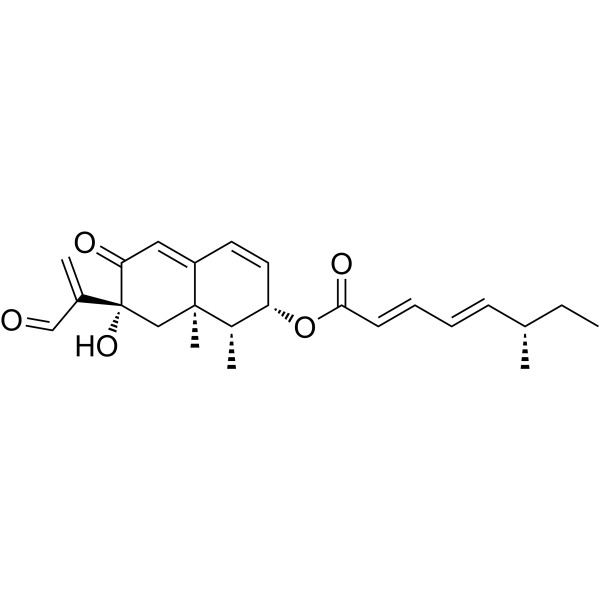
- HY-N1500
-
|
|
TRP Channel
Endogenous Metabolite
|
Inflammation/Immunology
|
|
Pulegone, the major chemical constituent of Nepeta catariaessential oil which is an aromatic herb, is one of avian repellents . The molecular target for the repellent action of Pulegone in avian species is nociceptive TRP ankyrin 1 (TRPA1). Pulegone stimulates both TRPM8 and TRPA1 channel in chicken sensory neurons and suppresses the former but not the latter at high concentrations .
|
-

- HY-N7148S1
-
|
|
COX
|
Inflammation/Immunology
Cancer
|
|
γ-Tocopherol-d4 is the deuterium labeled γ-Tocopherol. γ-Tocopherol (D-γ-Tocopherol) is a potent cyclooxygenase (COX) inhibitor. γ-Tocopherol is a naturally occurring form of Vitamin E in many plant seeds, such as corn oil and soybeans. γ-Tocopherol possesses antiinflammatory properties and anti-cancer activity[1][2].
|
-
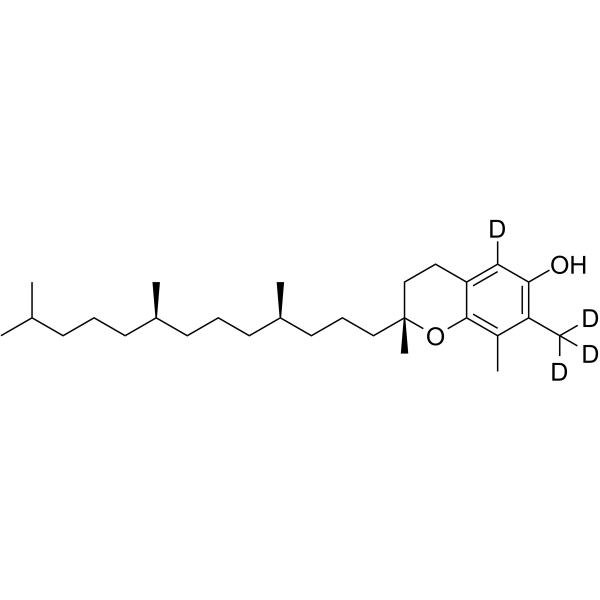
- HY-107343
-
|
Ethyl docosahexaenoate
|
Others
|
Neurological Disease
Metabolic Disease
|
|
Docosahexaenoic acid ethyl ester (Ethyl docosahexaenoate) is a 90% concentrated ethyl ester of docosahexaenoic acid manufactured from the microalgal oil. Docosahexaenoic acid ethyl ester enhances 6-hydroxydopamine-induced neuronal damage by induction of lipid peroxidation in mouse striatum. Docosahexaenoic acid (DHA) is a key component of the cell membrane, and its peroxidation is inducible due to the double-bond chemical structure. Docosahexaenoic acid has neuroprotective effects .
|
-
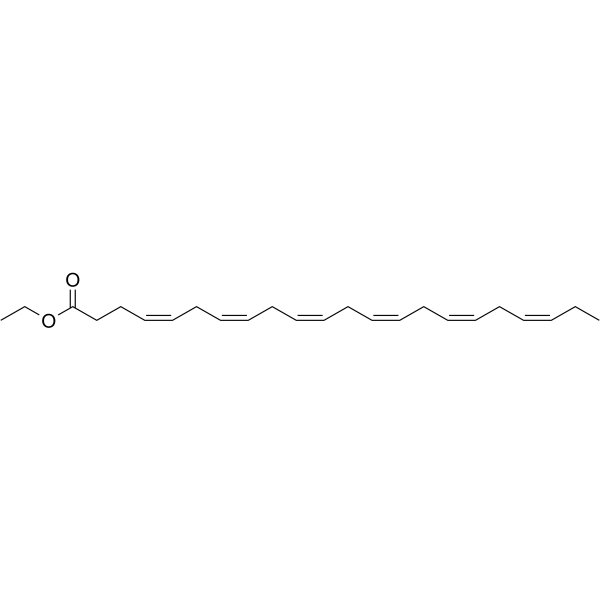
- HY-W317408
-
|
|
Others
|
Others
|
|
(+)-Menthyl acetate is a compound isolated from natural Cunila angustifolia Benth essential oil. The selectivity of (+)-Menthyl acetate is higher than that of MCF-7 cell line, IC50=34.0 μg?mL -1, and lower than that of SK-Mel-28 cell line, IC50=279.9 μg?mL -1, on A549 cell without fatal .
|
-
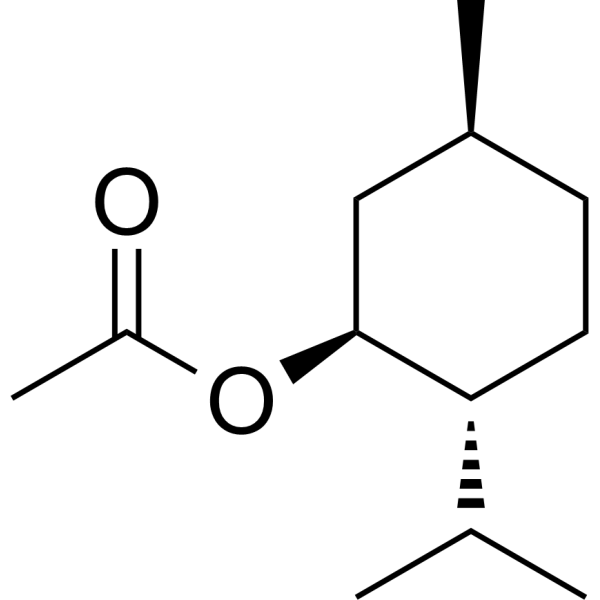
- HY-147335
-
|
|
Others
|
Cardiovascular Disease
|
|
6,9,12,15-Hexadecatetraenoic acid-ethyl ester is an orally active n-1PUFA. 6,9,12,15-Hexadecatetraenoic acid-ethyl ester intake can reduce plasma triglyceride content in mice .
|
-

- HY-N2510
-
|
Myristicine
|
5-HT Receptor
EGFR
ERK
Apoptosis
Bacterial
|
Infection
Neurological Disease
Inflammation/Immunology
Cancer
|
|
Myristicine is an orally bioavailable serotonin receptor antagonist and weak monoamine oxidase (MAO) inhibitor. Myristicine also exerts anti-cancer effects on gastric cancer cells by inhibiting the EGFR/ERK signaling pathway. Myristicine is the main component of nutmeg essential oil and has anti-cancer, anti-proliferative, antibacterial, anti-inflammatory and apoptosis-inducing effects. Myristicine abuse can produce hallucinogenic effects, organ damage, etc .
|
-
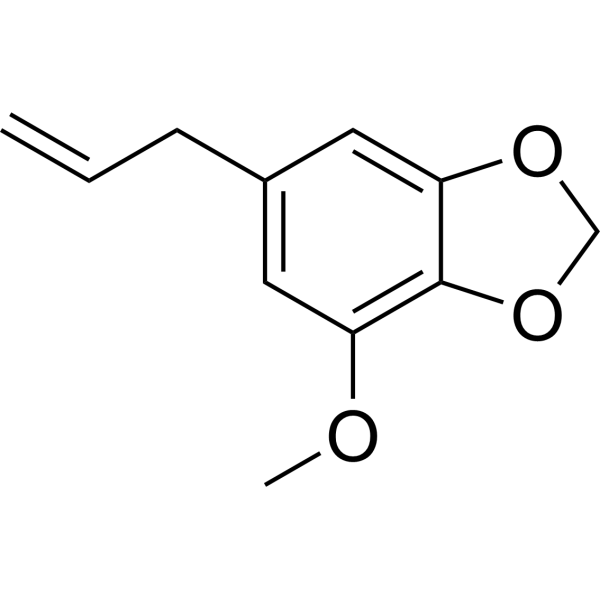
- HY-107343S
-
|
Ethyl docosahexaenoate-d5
|
Isotope-Labeled Compounds
|
Neurological Disease
Metabolic Disease
|
|
Docosahexaenoic acid ethyl ester-d5 is the deuterium labeled Docosahexaenoic acid ethyl ester. Docosahexaenoic acid ethyl ester (Ethyl docosahexaenoate) is a 90% concentrated ethyl ester of docosahexaenoic acid manufactured from the microalgal oil. Docosahexaenoic acid ethyl ester enhances 6-hydroxydopamine-induced neuronal damage by induction of lipid peroxidation in mouse striatum. Docosahexaenoic acid (DHA) is a key component of the cell membrane, and its peroxidation is inducible due to the double-bond chemical structure. Docosahexaenoic acid has neuroprotective effects[1][2].
|
-

- HY-107343S1
-
|
Ethyl docosahexaenoate-d5-1
|
Isotope-Labeled Compounds
|
Others
|
|
Docosahexaenoic acid ethyl ester-d5-1 is the deuterium labeled Docosahexaenoic acid ethyl ester. Docosahexaenoic acid ethyl ester (Ethyl docosahexaenoate) is a 90% concentrated ethyl ester of docosahexaenoic acid manufactured from the microalgal oil. Docosahexaenoic acid ethyl ester enhances 6-hydroxydopamine-induced neuronal damage by induction of lipid peroxidation in mouse striatum. Docosahexaenoic acid (DHA) is a key component of the cell membrane, and its peroxidation is inducible due to the double-bond chemical structure. Docosahexaenoic acid has neuroprotective effects[1][2][3].
|
-

- HY-B1937
-
|
Bio-Soft S 101 sodium
|
|
|
|
Sodium dodecylbenzenesulfonate (Bio-Soft S 101 sodium) is a nonionic surfactant commonly used in a variety of applications for cleaning and treating industrial equipment. It has good cleaning power and environmental compatibility, and can effectively remove oil, dirt and other forms of contamination. In addition, in textile, paper, leather and other industries, the compound can also be used for fixing and stabilizing dyes and colors. Although the compound has no direct application in the medical field, it plays an important role in industry and laboratory research.
|
-
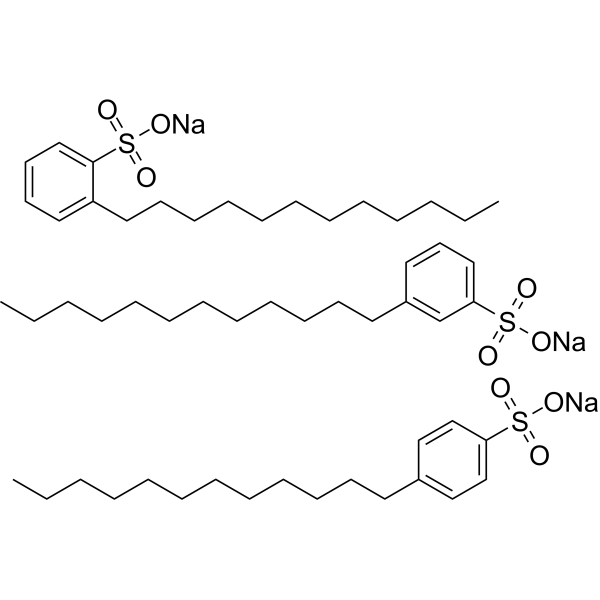
- HY-W009276
-
|
Methyl GLA
|
Apoptosis
|
Cancer
|
|
γ-Linolenic Acid methyl ester (Methyl GLA) is an esterified version of γ-Linolenic Acid (GLA), which is an ω-6 fatty acid, serves as melanoma cell proliferation inhibitors. γ-Linolenic Acid methyl ester inhibits ADP-induced blood platelet aggregation and induces apoptosis .
|
-
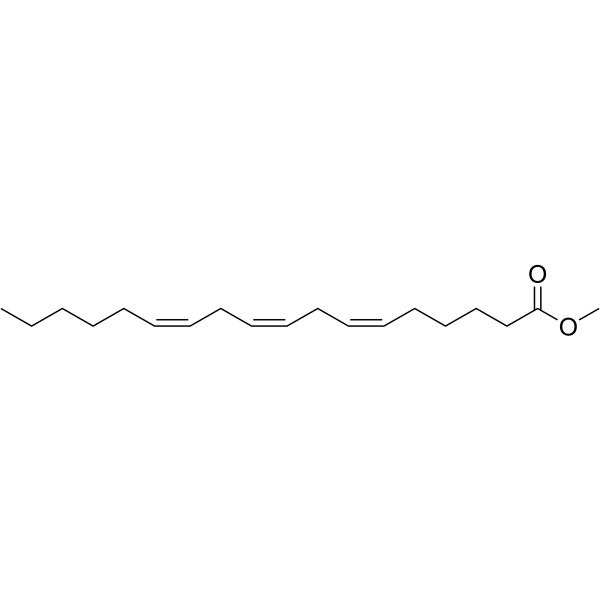
- HY-N6805
-
|
Acetyl isoeugenol
|
Cholinesterase (ChE)
|
Inflammation/Immunology
Cancer
|
|
Isoeugenol acetate (Acetyl isoeugenol), an essential oil constituent of nutmeg, clove, and cinnamon, shows excellent inhibitory effects against some metabolic enzymes such as acetylcholinesterase (AChE) enzymes (IC50=77 nM; Ki=16 nM), α-glycosidase (IC50=19.25 nM; Ki=21 nM), and α-amylase (IC50=411.5 nM). Isoeugenol acetate is used medical and cosmetics industries for its antioxidant, anticancer, antimicrobial and anti-inflammatory properties .
|
-
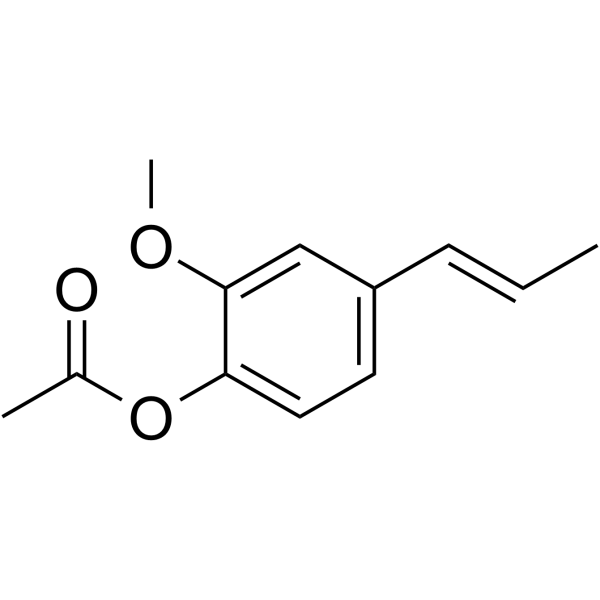
- HY-121618
-
|
|
GABA Receptor
Reactive Oxygen Species
Parasite
Apoptosis
Autophagy
|
Infection
Neurological Disease
Cancer
|
|
α-Thujone is a monoterpene isolated from Thuja occidentalis essential oil with potent anti-tumor activities. α-Thujone is a reversible modulator of the GABA type A receptor and the IC50 for α-Thujone is 21 μM in suppressing the GABA-induced currents. α-Thujone induces ROS accumulation-dependent cytotoxicity, also induces cell apoptosis and autophagy. α-Thujone has antinociceptive, insecticidal, and anthelmintic activity, and easily penetrates the blood-brain barrier .
|
-
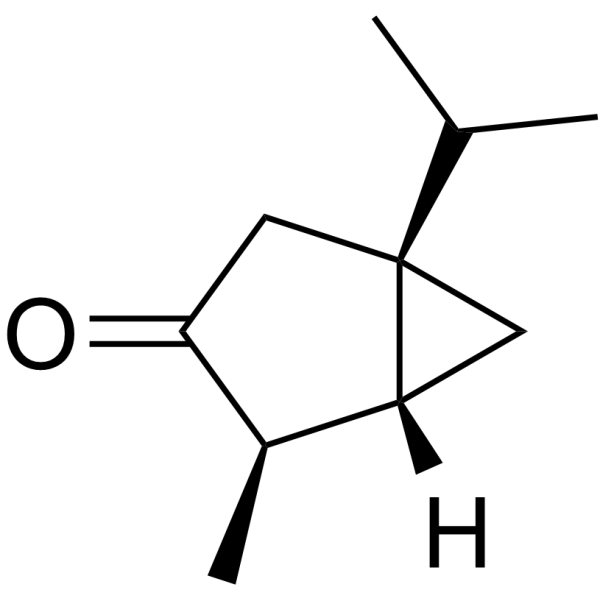
- HY-N9496
-
|
|
Others
|
Infection
|
|
Piperitone is as a powerful repellent and antiappetent agent. Piperitone is very toxic to Cymbopogon schoenanthus (C. schoenanthus) adults, newly laid eggs and to neonate larvae. Insecticidal activity .
|
-
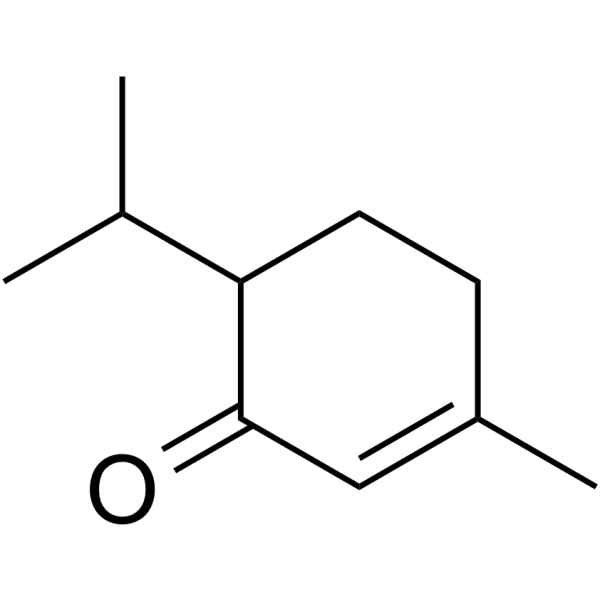
- HY-161283
-
|
|
MAP3K
|
Others
|
|
JT21-25 (compound 9h) is a potent and selective inhibitor of apoptosis signal-regulating kinase 1 (ASK1), with IC50 of 5.1 nM .
|
-
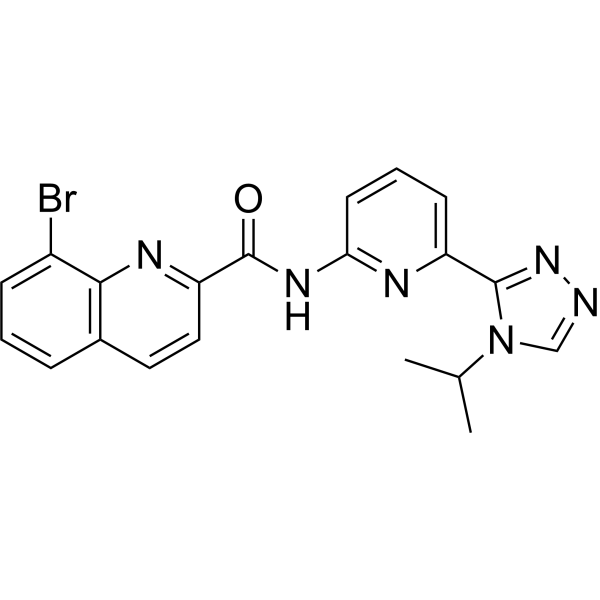
- HY-146196
-
|
|
Bacterial
|
Infection
|
|
Anticandidal agent-1 (compound c2) is a potent and broad-spectrum anticandidal agent. Anticandidal agent-1 shows anticandidal activity against C. albicans and C. glabrata, with MIC50 values of 8.65 and 13.51 μg/mL, respectively. Anticandidal agent-1 inhibits biofilm by blocking hyphal elongation and filamentation .
|
-
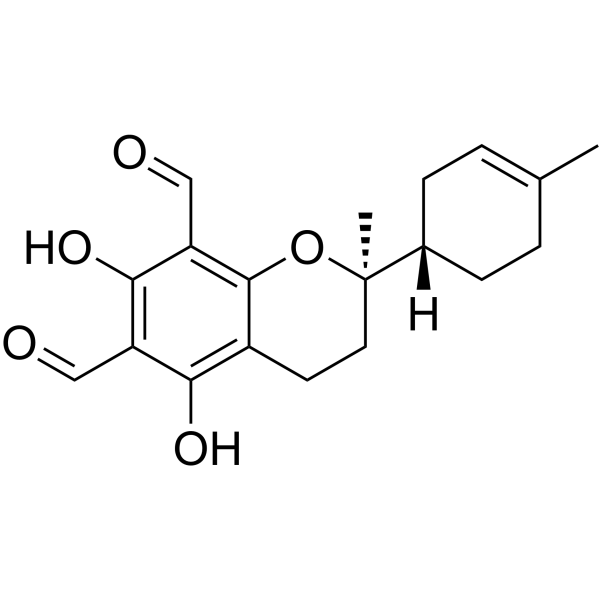
- HY-N2071
-
Cedrol
1 Publications Verification
(+)-Cedrol; α-Cedrol
|
Cytochrome P450
Fungal
|
Infection
Inflammation/Immunology
Cancer
|
|
Cedrol is a bioactive sesquiterpene, a potent competitive inhibitor of cytochrome P-450 (CYP) enzymes. Cedrol inhibits CYP2B6-mediated bupropion hydroxylase and CYP3A4-mediated midazolam hydroxylation with Ki of 0.9 μM and 3.4 μM, respectively. Cedrol also has weak inhibitory effect on CYP2C8, CYP2C9, and CYP2C19 enzymes . Cedrol is found in cedar essential oil and poetesses anti-septic, anti-inflammatory, anti-spasmodic, tonic, astringent, diuretic, insecticidal, and anti-fungal activities .
|
-
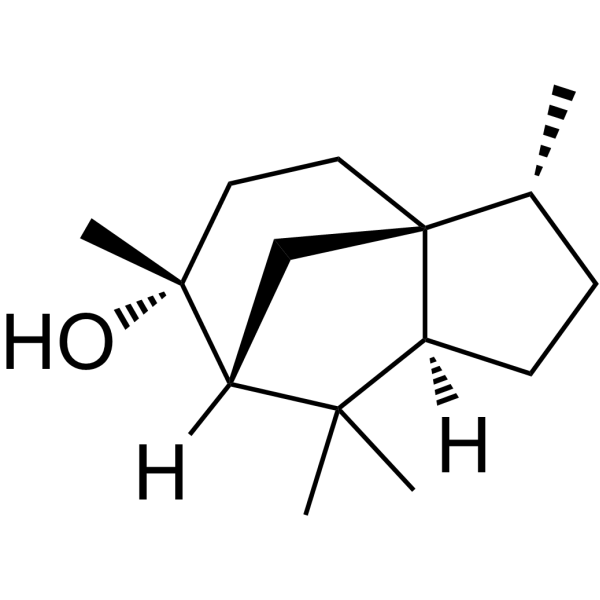
- HY-W250148
-
|
Spirit nigrosine
|
Biochemical Assay Reagents
|
Others
|
|
Solvent black 5 (Spirit nigrosine) is a synthetic dye belonging to the family of azo dyes. Also known as oil black or naphthol black, it is dark blue-black and has excellent solubility in organic solvents. Solvent black 5 is commonly used as a colorant in various industrial applications such as printing inks, coatings and plastics. It can also be used as an indicator dye to detect the presence of metals in solution. Furthermore, due to its high absorption and emission properties in the near-infrared region, it has been used in scientific research as a fluorescent biomarker for tissues and cells. However, Solvent black 5 has been reported to have potentially toxic effects on human health and the environment and its use is therefore regulated in some countries.
|
-
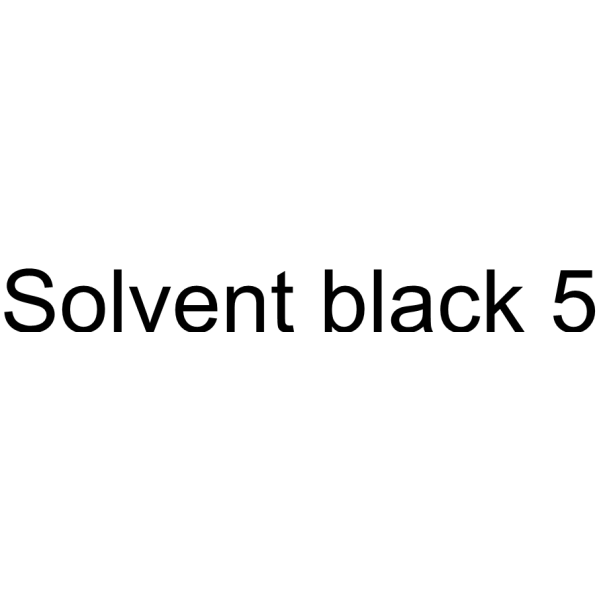
- HY-153808
-
|
|
Toll-like Receptor (TLR)
|
Inflammation/Immunology
|
|
Complete Freund's adjuvant (CFA) is an immunoadjuvant emulsified with antigen by its discoverer Jules T. Freund to enhance an animal's immune response to an antigen. Complete Freund's adjuvant (CFA) is also an inducer of the Th1 immune response and a ligand of TLRs. Complete Freund's adjuvant (CFA) contains heat-killed inactive tuberculosis bacilli and consists of a paraffin oil-in-water emulsion. Complete Freund's adjuvant (CFA) stimulates a strong and durable immune response and can be used to induce persistent inflammatory pain models in mice, experimental autoimmune myocarditis (EAM) models, and more. Incomplete Freund's adjuvant (IFA) (HY-153808A) is another type of Freund's Adjuvant that stimulates a weaker immune response .
|
-

- HY-N7864
-
|
all-cis-4,7,10,13,16-Docosapentaenoic acid; Osbond acid
|
Biochemical Assay Reagents
|
Others
|
|
Docosapentaenoic acid (DPA) is a 22-carbon fatty acid found in fish oil. It is a minor component of total serum unsaturated fatty acids in humans, ranging from 0.1% to 1%, and increasing with dietary supplementation. all-cis-4,7,10,13,16-DPA, also known as Austrian acid, is an isomer of DPA. It is an omega-6 fatty acid formed by the extension and desaturation of arachidonic acid. During fatty acid desaturase syndrome, levels of this fatty acid may be reduced, which may affect development. Upregulated hepatic elongate expression of very long fatty acid protein 6 and elevated levels of very long chain fatty acids, including all-cis 4,7,10,13,16-DPA, are characteristic of nonalcoholic steatohepatitis, a precancerous disease of hepatocellular carcinoma.
|
-
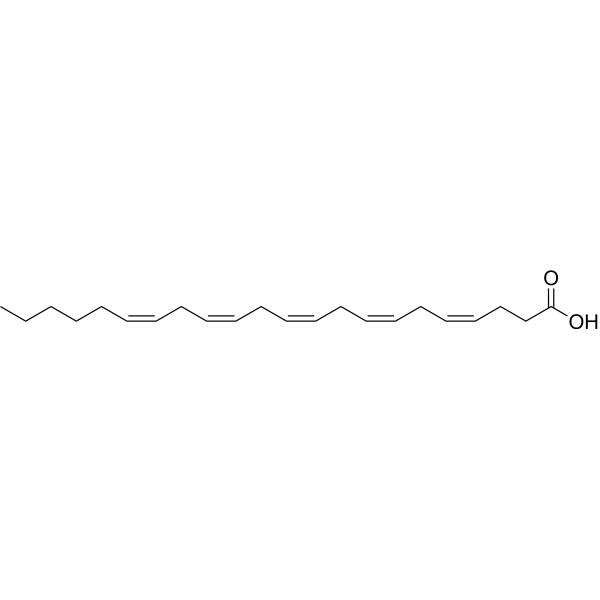
- HY-108943
-
|
|
Others
|
Others
|
|
Sabinene is an naturally occurring bicyclic monoterpene which can be used as flavorings, perfume additives, fine chemicals, and advanced biofuels. Sabinene is also an orally active compound to attenuates skeletal muscle atrophy and regulates ROS-mediated MAPK/MuRF-1 pathways .
|
-
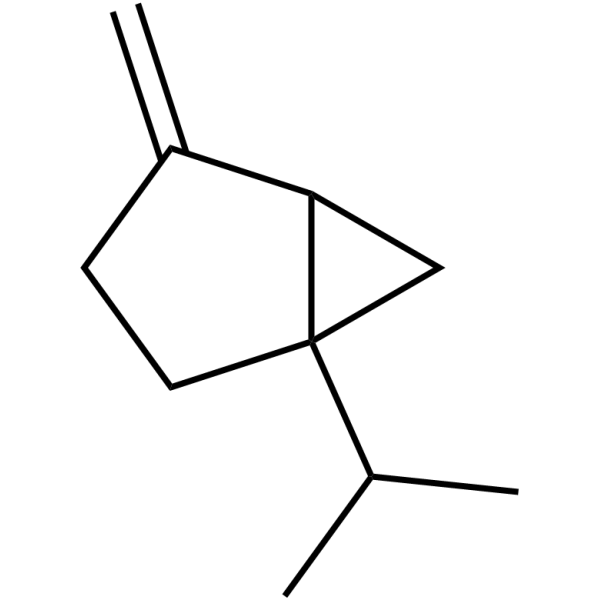
| Cat. No. |
Product Name |
Type |
-
- HY-D1168
-
|
|
Fluorescent Dyes/Probes
|
|
Oil Red O is a fat-soluble diazol dye, with a maximum absorption at 518 nm. Oil Red O stains neutral lipids and cholesteryl esters but not biological membranes. Oil Red O can be used for detecting and quantifying hepatic steatosis in mouse liver biopsies. Oil Red O staining efficiently helps to visualize the radical changes that occur in tissues as metabolic disease occurs and progresses .
|
-
- HY-D0516
-
|
Sudan Blue II; oil Blue 35
|
Chromogenic Assays
|
|
Solvent Blue 35 (Sudan Blue II; Oil Blue 35) is a dye used for colouring alcoholic and hydrocarbon based solvents. It is used for staining triglycerides in animal tissues.
|
-
- HY-D2190
-
-
- HY-D2196
-
|
|
Fluorescent Dyes/Probes
|
|
AgAuSe Oil phase (1000 nm) is a bright and biocompatible fluorescent nanoprobe in the second near-infrared window.
|
-
- HY-D2193
-
|
|
Fluorescent Dyes/Probes
|
|
AgAuSe Oil phase (1000 nm) is a bright and biocompatible fluorescent nanoprobe in the second near-infrared window .
|
-
- HY-160198G
-
|
|
Fluorescent Dye
|
|
Vaccine adjuvant-1 GMP is Vaccine adjuvant-1 produced by using GMP guidelines. GMP small molecules works appropriately as an auxiliary reagent for cell therapy manufacture. Vaccine adjuvant-1 is an vaccine adjuvant is a vaccine adjuvant containing an oil phase, emulsifying agent and water .
|
-
- HY-W250151
-
|
|
Dyes
|
|
Leishman's stain is an essential staining tool for for staining of the peripheral blood and bone marrow smears (displayed pale bluish-grey to deep blue under oil-immersion lens) .
|
-
- HY-D0140
-
|
ETH 5294
|
Fluorescent Dyes/Probes
|
|
Chromoionophore I (ETH 5294) is a hydrophobic pH indicator. Chromoionophore I is used as a transmissive or fluorescent probe molecule in many types of hydrophobic sensor membranes. Chromoionophore I is oil-soluble .
|
-
- HY-W250148
-
|
Spirit nigrosine
|
Dyes
|
|
Solvent black 5 (Spirit nigrosine) is a synthetic dye belonging to the family of azo dyes. Also known as oil black or naphthol black, it is dark blue-black and has excellent solubility in organic solvents. Solvent black 5 is commonly used as a colorant in various industrial applications such as printing inks, coatings and plastics. It can also be used as an indicator dye to detect the presence of metals in solution. Furthermore, due to its high absorption and emission properties in the near-infrared region, it has been used in scientific research as a fluorescent biomarker for tissues and cells. However, Solvent black 5 has been reported to have potentially toxic effects on human health and the environment and its use is therefore regulated in some countries.
|
| Cat. No. |
Product Name |
Type |
-
- HY-107799
-
|
|
Co-solvents
|
|
Castor oil is a natural triglyceride and a solvent. Castor oil has a laxative effect and induces labor in pregnant females. Castor oil can be used as a solvent, co-solvent, stabilizing agent and polyol for the formation of polymer-nanoparticle composites .
|
-
- HY-139411
-
|
|
Biochemical Assay Reagents
|
|
White mineral oil is the highly refined mineral oil, and is composed of saturated aliphatic and alicyclic nonpolar hydrocarbons. White mineral oil is biologically and chemically stable, and doesn’t support pathogenic bacterial growth. White mineral oil can resist moisture, extend, soften, smoothen, and lubricate .
|
-
- HY-126403
-
|
PEG-40 hydrogenated castor oil; Macrogolglycerol hydroxystearate; Castor oil, hydrogenated, polyethoxylated
|
Co-solvents
|
|
Ethoxylated hydrogenated castor oil (PEG-40 hydrogenated castor oil) is a combination of synthetic polyethylene glycol (PEG) with natural castor oil. Ethoxylated hydrogenated castor oil can be used to emulsify and solubilize oil-in-water (o/w) emulsions. Ethoxylated hydrogenated castor oil can be used as a cosolvent in vivo .
|
-
- HY-Y1887
-
|
|
Co-solvents
|
|
Cottonseed oil is a cooking oil extracted from the seeds of cotton plants and has been generally considered the most insecticidal of vegetable oils.
|
-
- HY-W123052
-
|
Linseed oil boiled
|
Biochemical Assay Reagents
|
|
Linseed oil is a biochemical reagent that can be used as a biological material or organic compound for life science related research.
|
-
- HY-W093282
-
|
Soybean oil epoxide
|
Biochemical Assay Reagents
|
|
Epoxidized soya bean oil (ESBO) is a vegetable oil-derived organic compound used as a plasticizer and stabilizer in various applications. It is produced by epoxidation of soybean oil, which introduces epoxy groups into the fatty acid chains of the oil. ESBO is a viscous, pale yellow liquid that is soluble in many organic solvents, such as chloroform and ethanol, but insoluble in water. It is commonly used as a plasticizer in polyvinyl chloride (PVC) products, including toys, food packaging materials and medical devices. In addition to its plasticizing properties, ESBO acts as an antioxidant and UV stabilizer, helping to prevent degradation and discoloration of PVC products over time. ESBOs have been investigated for their potential use in biodegradable plastics and as bio-based alternatives to traditional petroleum-derived plasticizers.
|
-
- HY-P2959
-
|
Fish oil from menhaden
|
Biochemical Assay Reagents
|
|
Fish oil from menhaden is a biochemical reagent that can be used as a biological material or organic compound for life science related research.
|
-
- HY-Y1888
-
Corn oil
Maximum Cited Publications
57 Publications Verification
|
Co-solvents
|
|
Corn oil, extracted from the germ of corn, can be used as a carrier for agent molecules.
|
-
- HY-401424
-
|
Polyoxyethylene(36) Castor oil; PEG-36 Castor oil
|
Biochemical Assay Reagents
|
|
Cremophor EL-36 (Polyoxyethylene(36) Castor Oil; PEG-36 Castor Oil) is a commonly used solvent that can be used to prepare paclitaxel solutions after being mixed with ethanol .
|
-
- HY-108750
-
|
VT 18 (oil); Vegetoil; Wesson
|
Biochemical Assay Reagents
|
|
Soybean oil is a biochemical reagent that can be used as a biological material or organic compound for life science related research.
|
-
- HY-W127601
-
|
|
Biochemical Assay Reagents
|
|
Lard oil is a biochemical reagent that can be used as a biological material or organic compound for life science related research. Lard oil is a click chemistry reagent, it contains an Azide group and can undergo copper-catalyzed azide-alkyne cycloaddition reaction (CuAAc) with molecules containing Alkyne groups. Strain-promoted alkyne-azide cycloaddition (SPAAC) can also occur with molecules containing DBCO or BCN groups.
|
-
- HY-W115743
-
|
|
Biochemical Assay Reagents
|
|
Sulfonated castor oil is a biochemical reagent that can be used as a biological material or organic compound for life science related research.
|
-
- HY-107965
-
|
Safflower seed oil (from Carthamus tinctorius seed)
|
Biochemical Assay Reagents
|
|
Safflower seed oil from Carthamus tinctorius seed is a biochemical reagent that can be used as a biological material or organic compound for life science related research.
|
-
- HY-160198G
-
|
|
Biochemical Assay Reagents
|
|
Vaccine adjuvant-1 GMP is Vaccine adjuvant-1 produced by using GMP guidelines. GMP small molecules works appropriately as an auxiliary reagent for cell therapy manufacture. Vaccine adjuvant-1 is an vaccine adjuvant is a vaccine adjuvant containing an oil phase, emulsifying agent and water .
|
-
- HY-135087
-
|
|
Biochemical Assay Reagents
|
|
Caprylic/Capric Triglyceride is the triglycerides and esters prepared from fractionated vegetable oil sources and fatty acids from coconuts and palm kernel oils. Caprylic/Capric Triglyceride possesses excellent oxidation stability. Caprylic/Capric Triglyceride is used as a food additive and used in cosmetics .
|
-
- HY-108749
-
|
Cropure OL
|
Biochemical Assay Reagents
|
|
Cropure OL is a biochemical reagent that can be used as a biological material or organic compound for life science related research.
|
-
- HY-W250170
-
|
Octyldecyl glucoside
|
Biochemical Assay Reagents
|
|
Decyl glucoside is a mild nonionic surfactant. Decyl glucoside can be derived from renewable raw materials such as glucose and fatty alcohols from coconut oil or palm kernel oil. Decyl glucoside is known for its excellent foaming and cleaning properties.
|
-
- HY-124187
-
|
Ethyl pinolenate
|
Biochemical Assay Reagents
|
|
Pinolenic acid is a polyunsaturated fatty acid found in the seed oils of red pine (Pinus orientalis) and maritime pine (Pinus pinaster). Both oils were found to have lipid-lowering properties. A diet containing marine pine nut oil (MPSO) reduces HDL and ApoA1 levels in transgenic mice expressing human ApoA1. MPSO was found to reduce cholesterol efflux in vitro. Korean pine nut oil supplements may help obesity by reducing appetite. People who take this oil experience an increase in the satiety hormones CCK and GLP-1 and a decrease in appetite. The activity of the oil is attributed to pinolenic acid. Pinolenic acid is not metabolized to arachidonic acid and can reduce the level of arachidonic acid in the phosphatidylinositol fraction of HepG2 cells from 15.9% to 7.0%. Pinolenic acid ethyl ester is a neutral, more lipophilic form of the free acid.
|
-
- HY-W099600
-
|
Bisdodecanoic anhydride
|
Biochemical Assay Reagents
|
|
Lauric anhydride is a white waxy solid used as an intermediate in the production of various chemicals. It is primarily used in the synthesis of surfactants, emulsifiers, and lubricants, and as a raw material for other important industrial chemicals such as plasticizers and flavoring agents. It can be obtained from natural sources such as palm kernel oil and coconut oil, and its unique chemical structure allows it to be used to create compounds with specific surface and interfacial properties.
|
-
- HY-Y1890
-
|
|
Co-solvents
|
|
Cremophor EL, a polyoxyethylene castor oil derivative, is a nonionic surfactant. Cremophor EL is widely employed to improve dissolution and delivery of agents .
|
-
- HY-W008039
-
|
Tetra-n-butylammonium acetate
|
Biochemical Assay Reagents
|
|
Tetrabutylammonium acetate is an organic compound commonly used as a catalyst and solvent. It can be used to catalyze or promote reactions in certain organic reactions, and is widely used in batteries, solar cells and pigments. In addition, this compound is widely used in the oil and gas industry, for example as a carbonate dissolver.
|
-
- HY-148701
-
|
|
Drug Delivery
|
|
mono-Pal-MTO is a palm oil-based lipid produced by combining the anticancer agent mitoxantrone (MTO) with palmitoleic acid. When nanoparticles of mono-Pal-MTO and di-Pal-MTO are combined in a molar ratio of 1:1, they show effective siRNA cell delivery and enhance anticancer activity .
|
-
- HY-148702
-
|
|
Drug Delivery
|
|
di-Pal-MTO is a palm oil-based lipid produced by combining the anticancer agent mitoxantrone (MTO) with palmitoleic acid. When nanoparticles of mono-Pal-MTO and di-Pal-MTO are combined in a molar ratio of 1:1, they show effective siRNA cell delivery and enhance anticancer activity .
|
-
- HY-N7864
-
|
all-cis-4,7,10,13,16-Docosapentaenoic acid; Osbond acid
|
Biochemical Assay Reagents
|
|
Docosapentaenoic acid (DPA) is a 22-carbon fatty acid found in fish oil. It is a minor component of total serum unsaturated fatty acids in humans, ranging from 0.1% to 1%, and increasing with dietary supplementation. all-cis-4,7,10,13,16-DPA, also known as Austrian acid, is an isomer of DPA. It is an omega-6 fatty acid formed by the extension and desaturation of arachidonic acid. During fatty acid desaturase syndrome, levels of this fatty acid may be reduced, which may affect development. Upregulated hepatic elongate expression of very long fatty acid protein 6 and elevated levels of very long chain fatty acids, including all-cis 4,7,10,13,16-DPA, are characteristic of nonalcoholic steatohepatitis, a precancerous disease of hepatocellular carcinoma.
|
| Cat. No. |
Product Name |
Target |
Research Area |
-
- HY-P2959
-
|
Fish oil from menhaden
|
Biochemical Assay Reagents
|
Others
|
|
Fish oil from menhaden is a biochemical reagent that can be used as a biological material or organic compound for life science related research.
|
| Cat. No. |
Product Name |
Category |
Target |
Chemical Structure |
- HY-W017316
-
-

- HY-N8411
-
-

- HY-N6043
-
-

- HY-77995
-
-

- HY-N9691
-
-

- HY-W651036
-
-

- HY-113362
-
-

- HY-N3651
-
-

- HY-W012999
-
-

- HY-N0308
-
-

- HY-134900
-
-

- HY-B2167
-
-

- HY-N7063
-
-

- HY-119546
-
-

- HY-N7494
-
-

- HY-N7813
-
-

- HY-126573R
-
-

- HY-N7000
-
-

- HY-14618
-
-

- HY-N0121
-
-

- HY-111664
-
-

- HY-123026
-
-

- HY-N2419
-
-

- HY-N2109
-
-

- HY-121388
-
-

- HY-N7085
-
-

- HY-W004297
-
-

- HY-N6968
-
-

- HY-N5060
-
-

- HY-W015482
-
-

- HY-75161
-
-

- HY-N7364
-
-

- HY-N7063R
-
-

- HY-N7513
-
-

- HY-N3074
-
-

- HY-N7916
-
-

- HY-N10866
-
-

- HY-N7148
-
-

- HY-N7398
-
-

- HY-N12515
-
-

- HY-124257
-
-

- HY-N7136
-
-

- HY-152899
-
-

- HY-W087919
-
-

- HY-Y0189
-
-

- HY-N1500
-
-

- HY-N2510
-
-

- HY-N6805
-
-

- HY-121618
-
-

- HY-N9496
-
-

- HY-N2071
-
Cedrol
1 Publications Verification
(+)-Cedrol; α-Cedrol
|
Cedrus deodara (Roxburgh) G. Don
Classification of Application Fields
Pinaceae
Terpenoids
Sesquiterpenes
Source classification
Plants
Inflammation/Immunology
Disease Research Fields
Cancer
|
Cytochrome P450
Fungal
|
|
Cedrol is a bioactive sesquiterpene, a potent competitive inhibitor of cytochrome P-450 (CYP) enzymes. Cedrol inhibits CYP2B6-mediated bupropion hydroxylase and CYP3A4-mediated midazolam hydroxylation with Ki of 0.9 μM and 3.4 μM, respectively. Cedrol also has weak inhibitory effect on CYP2C8, CYP2C9, and CYP2C19 enzymes . Cedrol is found in cedar essential oil and poetesses anti-septic, anti-inflammatory, anti-spasmodic, tonic, astringent, diuretic, insecticidal, and anti-fungal activities .
|
-

- HY-108943
-
-

| Cat. No. |
Product Name |
Chemical Structure |
-
- HY-N7819S
-
|
|
|
Pristane-d40 is the deuterium labeled Pristane[1]. Pristane (Norphytane) is a naturally occurring hydrocarbon oil found in small quantities in many plants, in various marine organisms, and as the most active component of mineral oil[2]. Pristane is a non-antigenic adjuvant, and induces MHC class II-restricted, arthritogenic T cells in the rat[3].
|
-

-
- HY-Y0189S
-
|
|
|
Methyl Salicylate-d4 is the deuterium labeled Methyl Salicylate[1]. Methyl Salicylate (Wintergreen oil) is a topical analgesic and anti-inflammatory agent. Also used as a pesticide, a denaturant, a fragrance ingredient, and a flavoring agent in food and tobacco products[2]. A systemic acquired resistance (SAR) signal in tobacco[3]. A topical nonsteroidal anti-inflammatory agent (NSAID). Methyl salicylate lactoside is a COX inhibitor[5].
|
-

-
- HY-W012835S2
-
|
|
|
4-Methylanisole- 13C is the 13C-labeled 4-Methylanisole. 4-Methylanisole (4-Methoxytoluene) is food flavoring agent and can be naturally found in Ylang Ylang fragrance oil[1].
|
-

-
- HY-W012835S
-
|
|
|
4-Methylanisole-d4 is the deuterium labeled 4-Methylanisole[1]. 4-Methylanisole (4-Methoxytoluene) is food flavoring agent and can be naturally found in Ylang Ylang fragrance oil[2].
|
-

-
- HY-W012835S1
-
|
|
|
4-Methylanisole-d3 is the deuterium labeled 4-Methylanisole[1]. 4-Methylanisole (4-Methoxytoluene) is food flavoring agent and can be naturally found in Ylang Ylang fragrance oil[2].
|
-

-
- HY-W012835S3
-
|
|
|
4-Methylanisole-d7 is the deuterium labeled 4-Methylanisole[1]. 4-Methylanisole (4-Methoxytoluene) is food flavoring agent and can be naturally found in Ylang Ylang fragrance oil[2].
|
-

-
- HY-W012835S4
-
|
|
|
4-Methylanisole-d7-1 is the deuterium labeled 4-Methylanisole[1]. 4-Methylanisole (4-Methoxytoluene) is food flavoring agent and can be naturally found in Ylang Ylang fragrance oil[2].
|
-

-
- HY-W088037S
-
|
|
|
Tridecane-d28 is the deuterium labeled Tridecane[1]. Tridecane is a short chain aliphatic hydrocarbon containing 13 carbon atoms. Tridecane is an volatile oil component isolated from essential oil of Piper aduncum L. Tridecane is a stress compound released by the brown marmorated stink bugs stress compound[2][3].
|
-

-
- HY-N0337S
-
|
|
|
Eugenol-d3 is the deuterium labeled Eugenol. Eugenol is an essential oil found in cloves with antibacterial, anthelmintic and antioxidant activity. Eugenol is shown to inhibit lipid peroxidation.
|
-

-
- HY-B2167S
-
|
|
|
Docosahexaenoic acid-d5 is the deuterium labeled Docosahexaenoic Acid. Docosahexaenoic Acid (DHA) is an omega-3 fatty acid abundantly present brain and retina. It can be obtained directly from fish oil and maternal milk.
|
-

-
- HY-77995S
-
|
|
|
2-Methoxybenzaldehyde-d3 is the deuterium labeled 2-Methoxybenzaldehyde[1]. 2-Methoxybenzaldehyde (o-Anisaldehyde), isolated from cinnamon essential oil (CEO), exists antibacterial and antifungal activity[2].
|
-

-
- HY-N7494S
-
|
|
|
Pentacosane-d52 is the deuterium labeled Pentacosane[1]. Pentacosane is one of the major components in the acetone extract from Curcuma raktakanda and is also in the essential oil from the leaves of Malus domestica. Pentacosane exhibit anti-cancer activities[2].
|
-

-
- HY-N7113S
-
|
|
|
Squalane-d62 is the deuterium labeled Squalane[1]. Squalane, found in certain fish oils (especially shark liver oil), and some vegetable oils, is a saturated derivative of Squalene. Squalane shows anticancer, antioxidant, skin hydrating, and emollient activities[2].
|
-

-
- HY-B2167S1
-
|
|
|
Docosahexaenoic acid- 13C22 is the 13C labeled Docosahexaenoic acid[1]. Docosahexaenoic Acid (DHA) is an omega-3 fatty acid abundantly present brain and retina. It can be obtained directly from fish oil and maternal milk[2][3][4][5][6].
|
-

-
- HY-N7148S1
-
|
|
|
γ-Tocopherol-d4 is the deuterium labeled γ-Tocopherol. γ-Tocopherol (D-γ-Tocopherol) is a potent cyclooxygenase (COX) inhibitor. γ-Tocopherol is a naturally occurring form of Vitamin E in many plant seeds, such as corn oil and soybeans. γ-Tocopherol possesses antiinflammatory properties and anti-cancer activity[1][2].
|
-

-
- HY-107343S
-
|
|
|
Docosahexaenoic acid ethyl ester-d5 is the deuterium labeled Docosahexaenoic acid ethyl ester. Docosahexaenoic acid ethyl ester (Ethyl docosahexaenoate) is a 90% concentrated ethyl ester of docosahexaenoic acid manufactured from the microalgal oil. Docosahexaenoic acid ethyl ester enhances 6-hydroxydopamine-induced neuronal damage by induction of lipid peroxidation in mouse striatum. Docosahexaenoic acid (DHA) is a key component of the cell membrane, and its peroxidation is inducible due to the double-bond chemical structure. Docosahexaenoic acid has neuroprotective effects[1][2].
|
-

-
- HY-107343S1
-
|
|
|
Docosahexaenoic acid ethyl ester-d5-1 is the deuterium labeled Docosahexaenoic acid ethyl ester. Docosahexaenoic acid ethyl ester (Ethyl docosahexaenoate) is a 90% concentrated ethyl ester of docosahexaenoic acid manufactured from the microalgal oil. Docosahexaenoic acid ethyl ester enhances 6-hydroxydopamine-induced neuronal damage by induction of lipid peroxidation in mouse striatum. Docosahexaenoic acid (DHA) is a key component of the cell membrane, and its peroxidation is inducible due to the double-bond chemical structure. Docosahexaenoic acid has neuroprotective effects[1][2][3].
|
-

| Cat. No. |
Product Name |
|
Classification |
-
- HY-W127601
-
|
|
|
Azide
|
|
Lard oil is a biochemical reagent that can be used as a biological material or organic compound for life science related research. Lard oil is a click chemistry reagent, it contains an Azide group and can undergo copper-catalyzed azide-alkyne cycloaddition reaction (CuAAc) with molecules containing Alkyne groups. Strain-promoted alkyne-azide cycloaddition (SPAAC) can also occur with molecules containing DBCO or BCN groups.
|
Your information is safe with us. * Required Fields.
Inquiry Information
- Product Name:
- Cat. No.:
- Quantity:
- MCE Japan Authorized Agent:



















































![1-Methyl-2-[(Z)-6-undecenyl]-4(1H)-quinolone](http://file.medchemexpress.com/product_pic/hy-n0968.gif)








































































































































